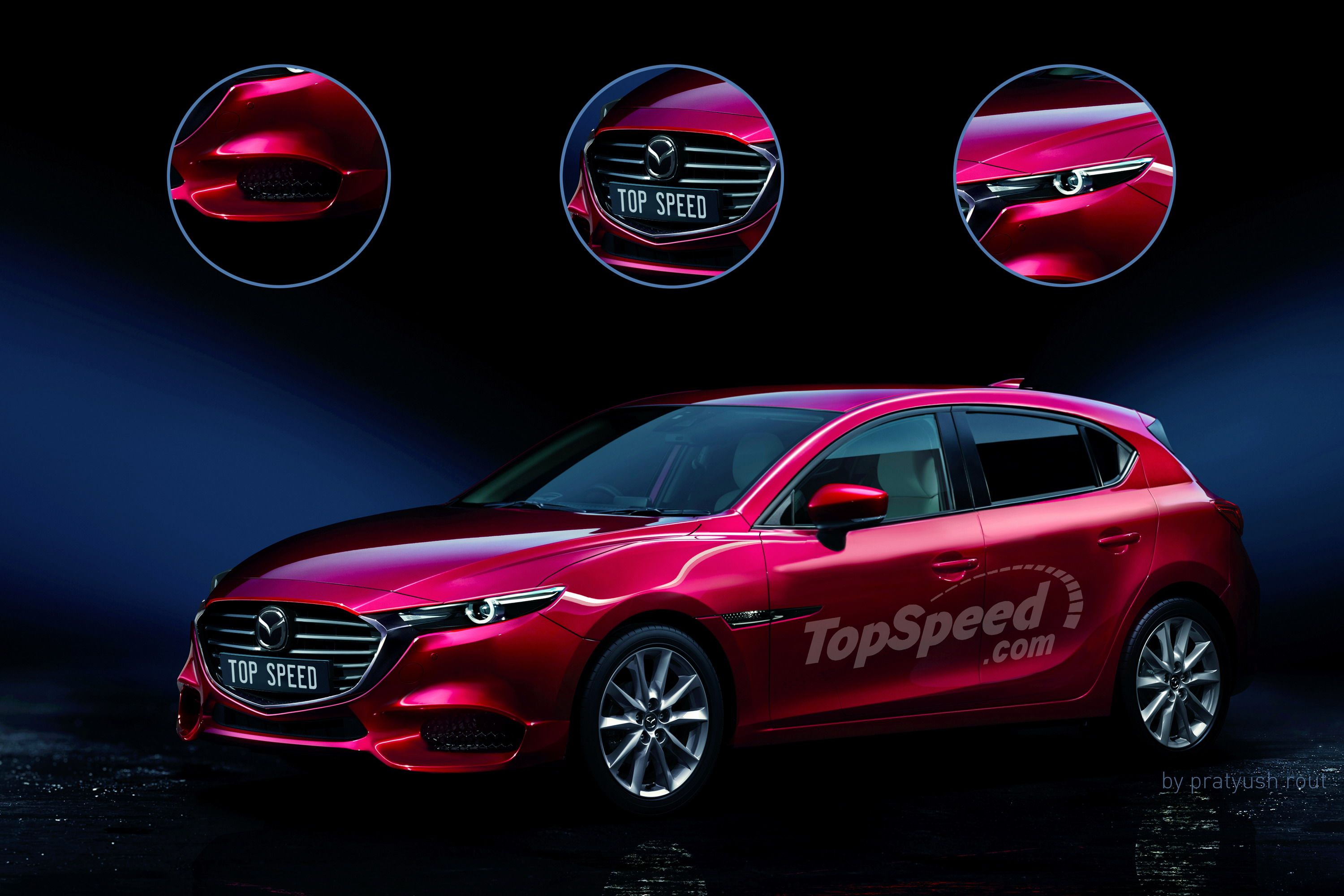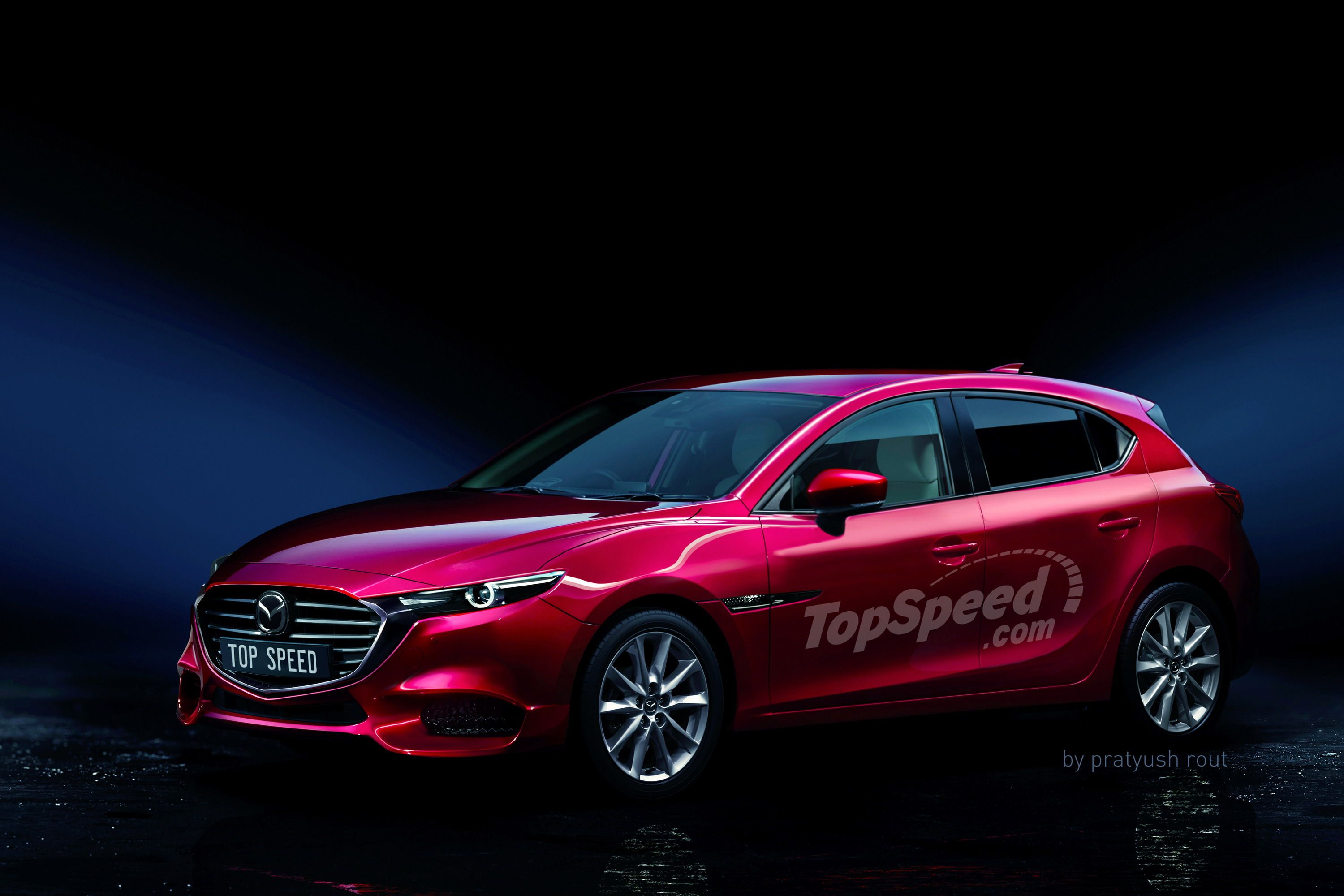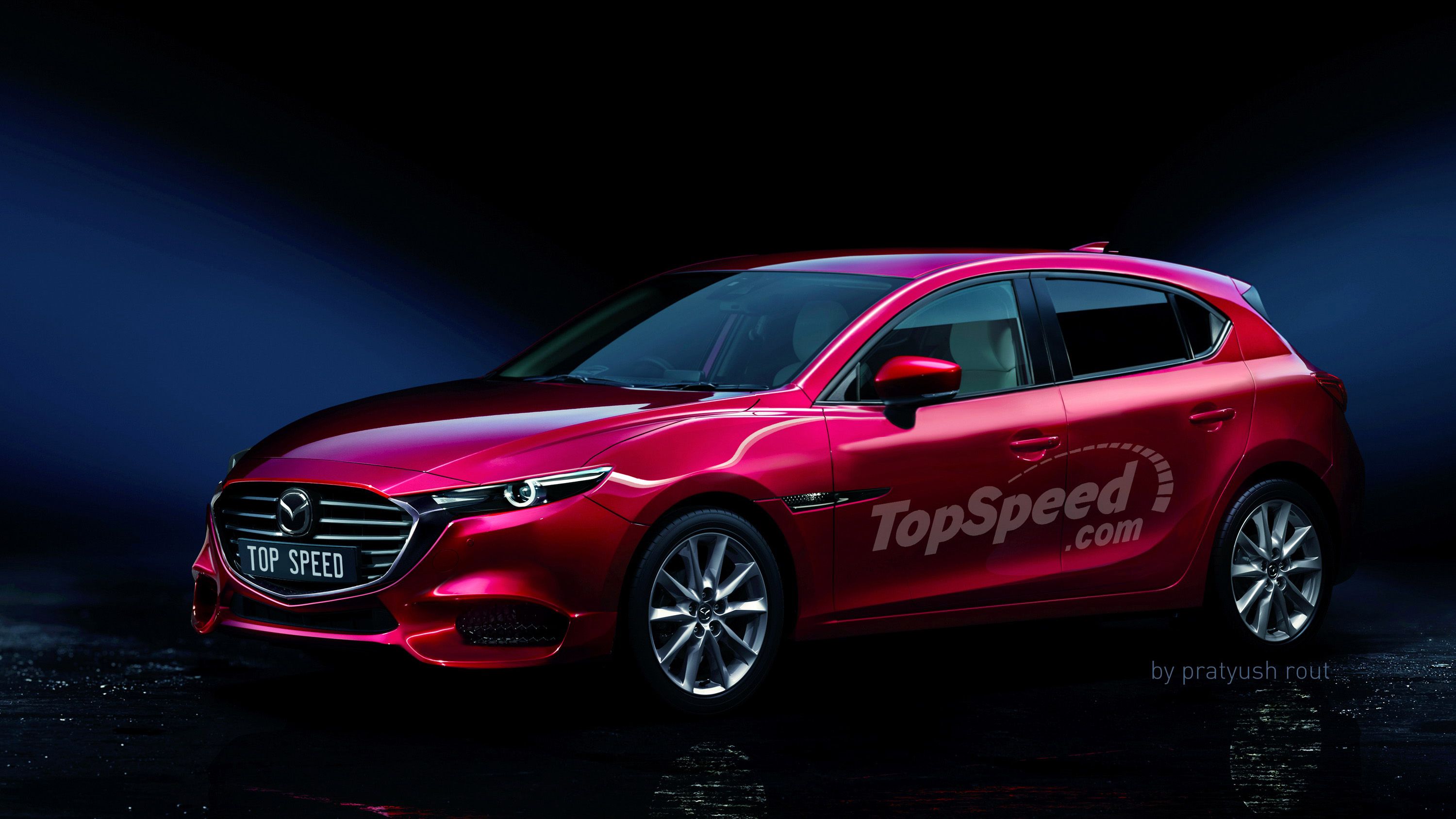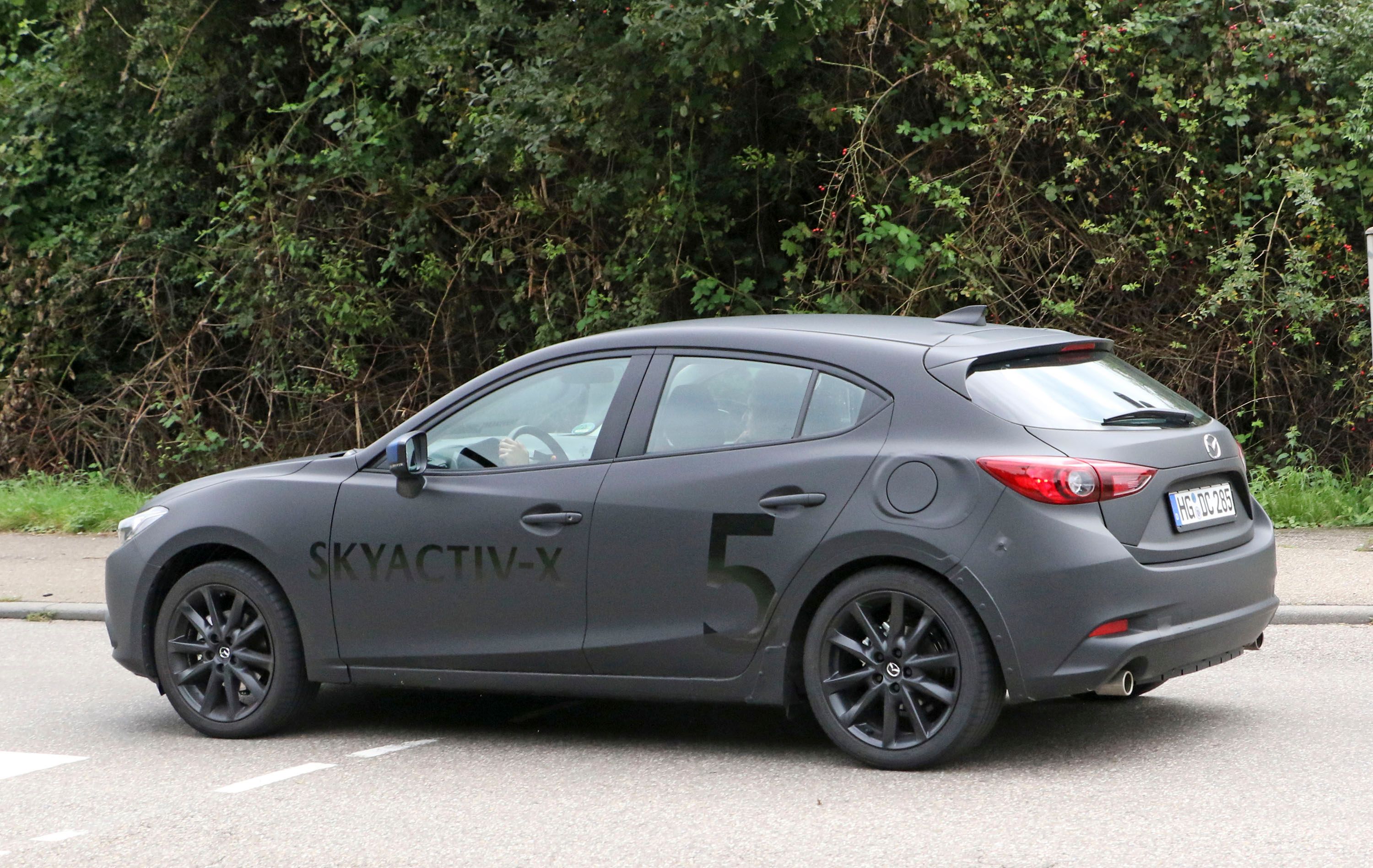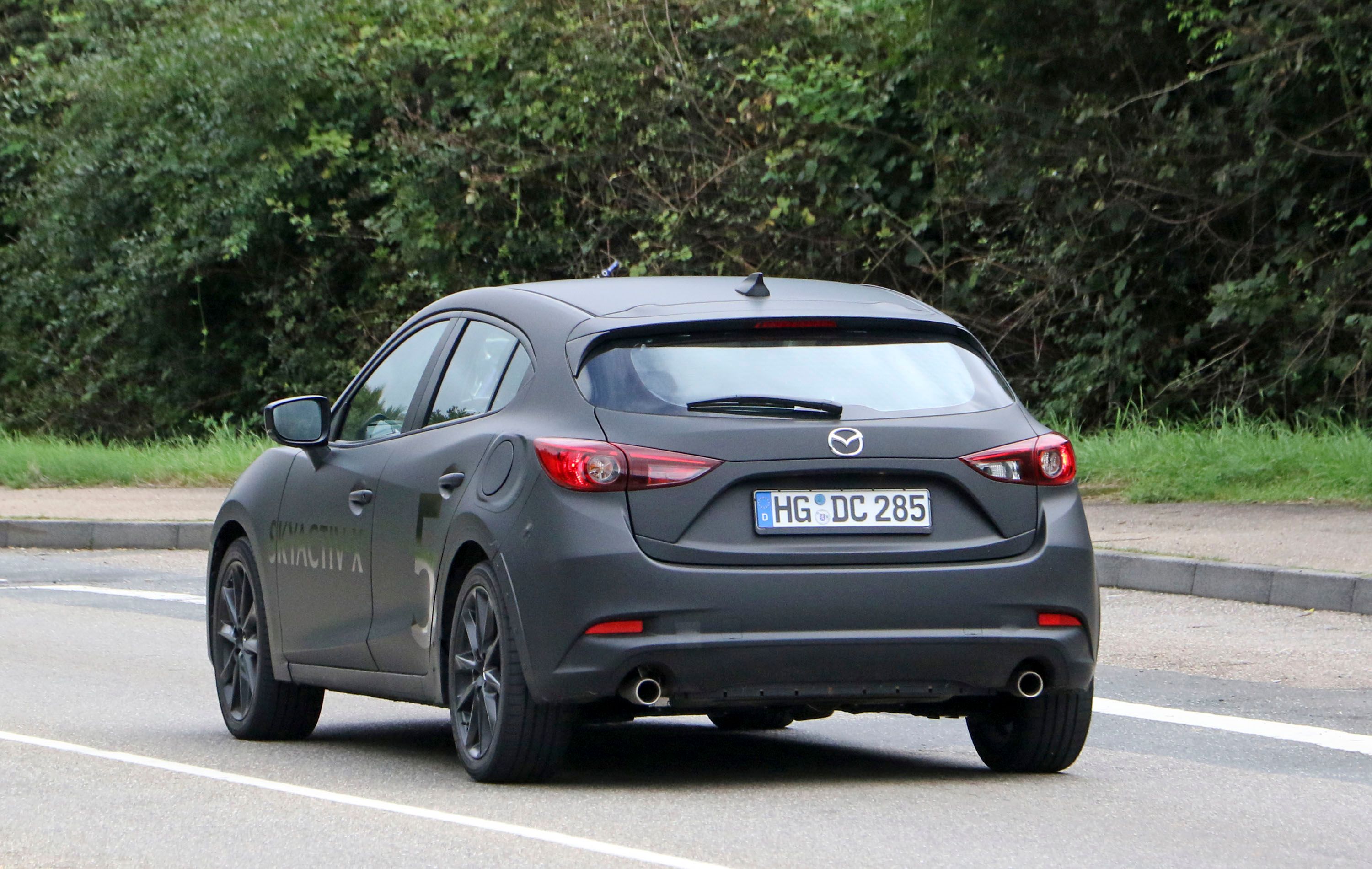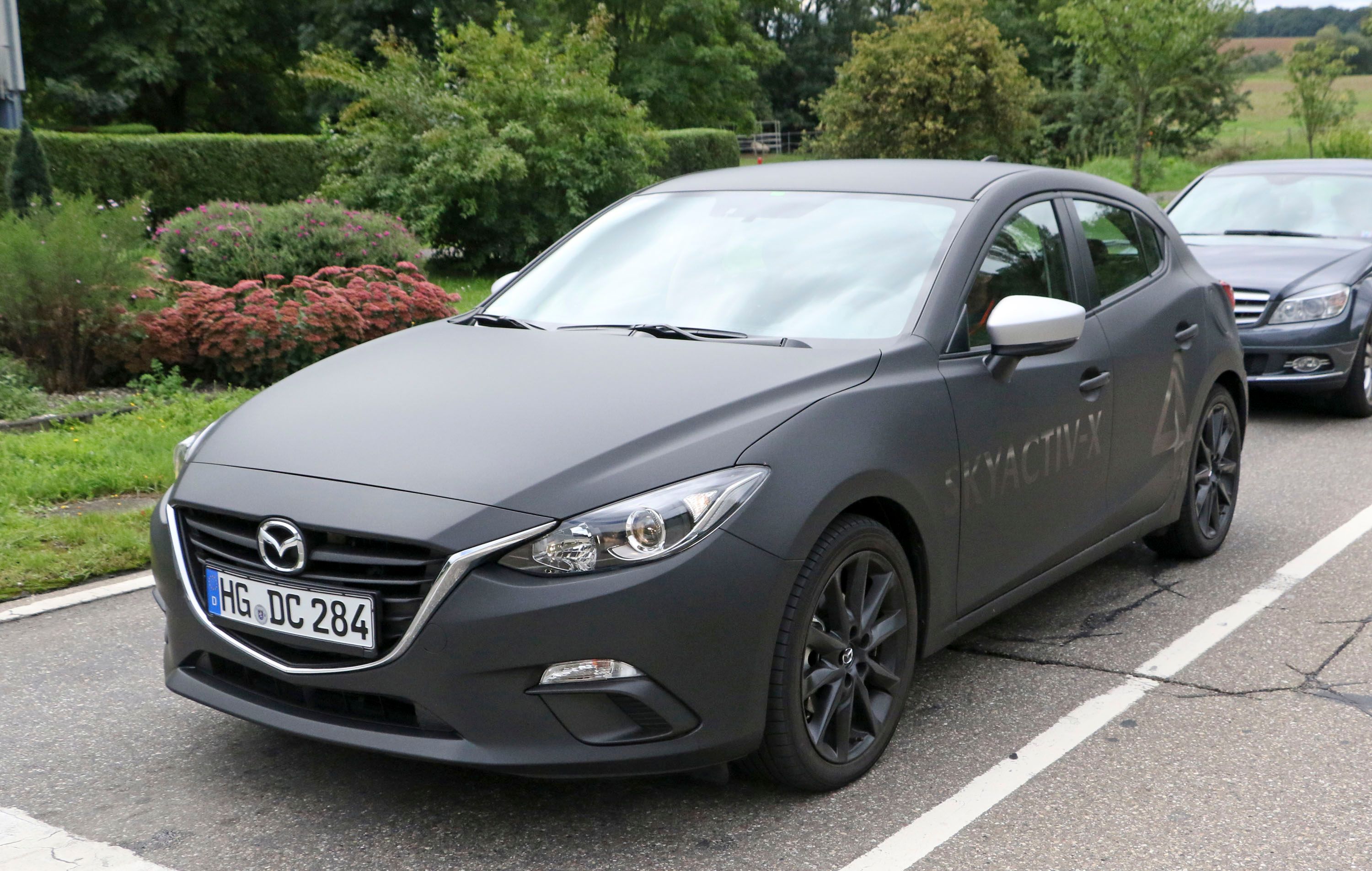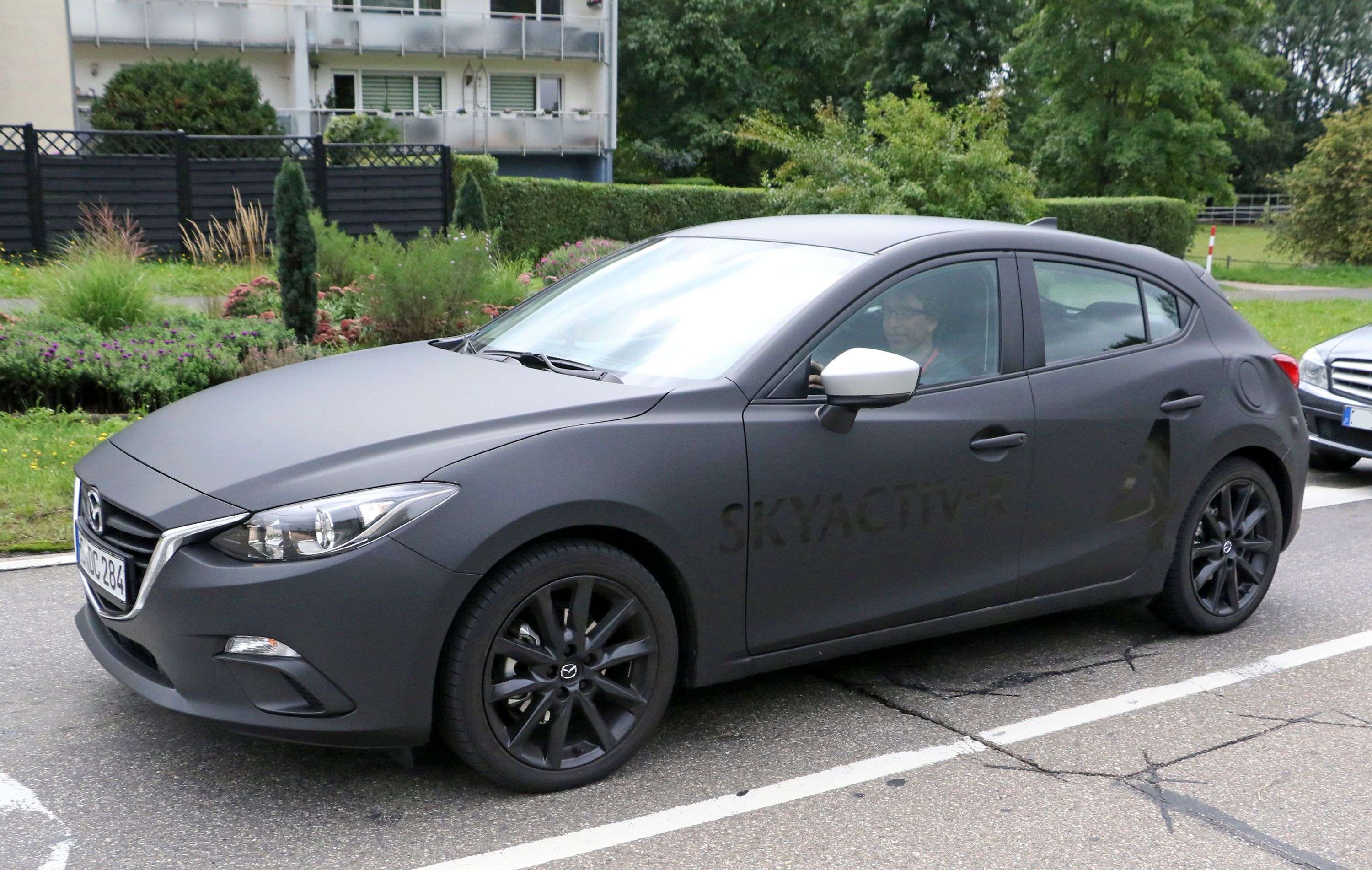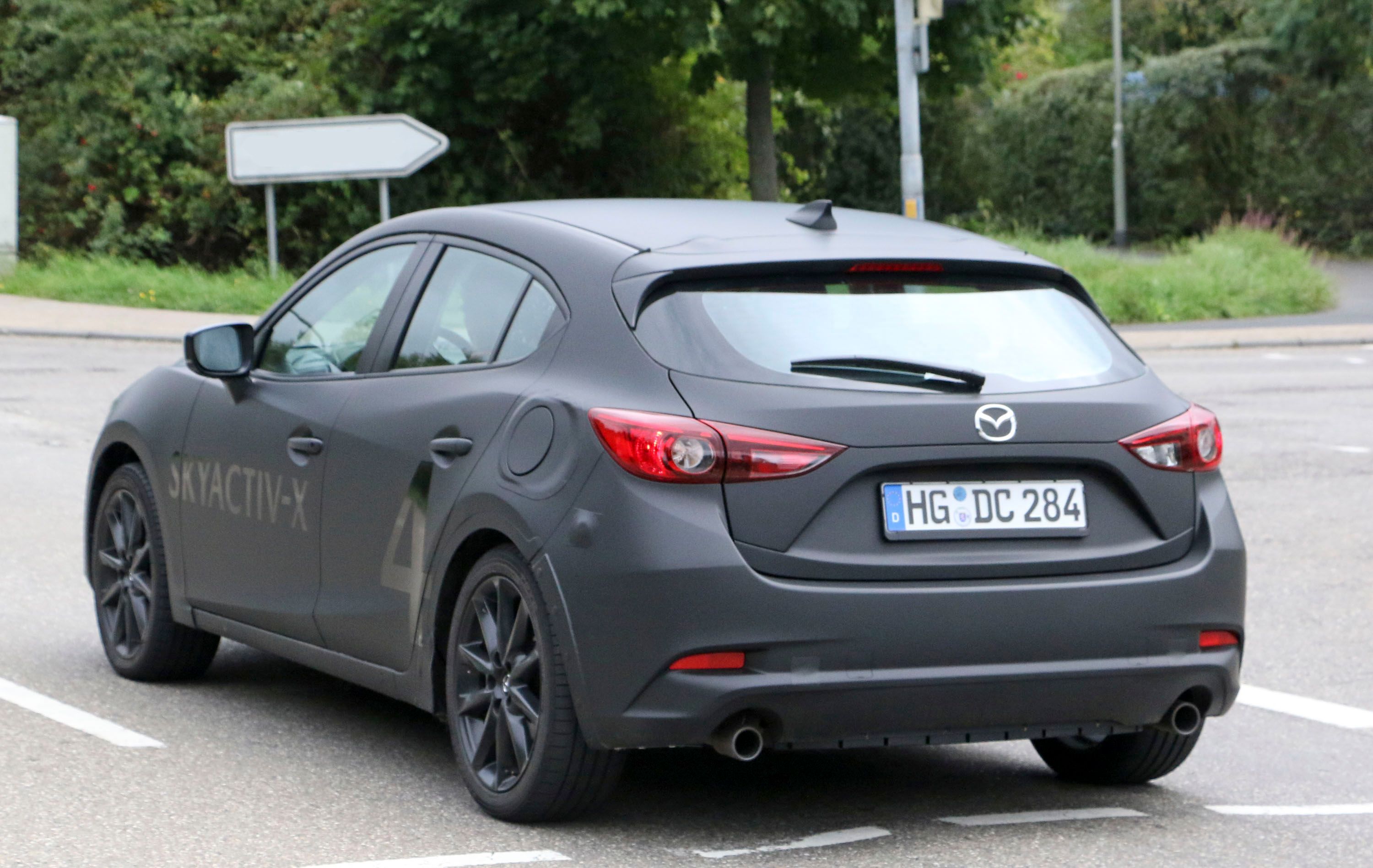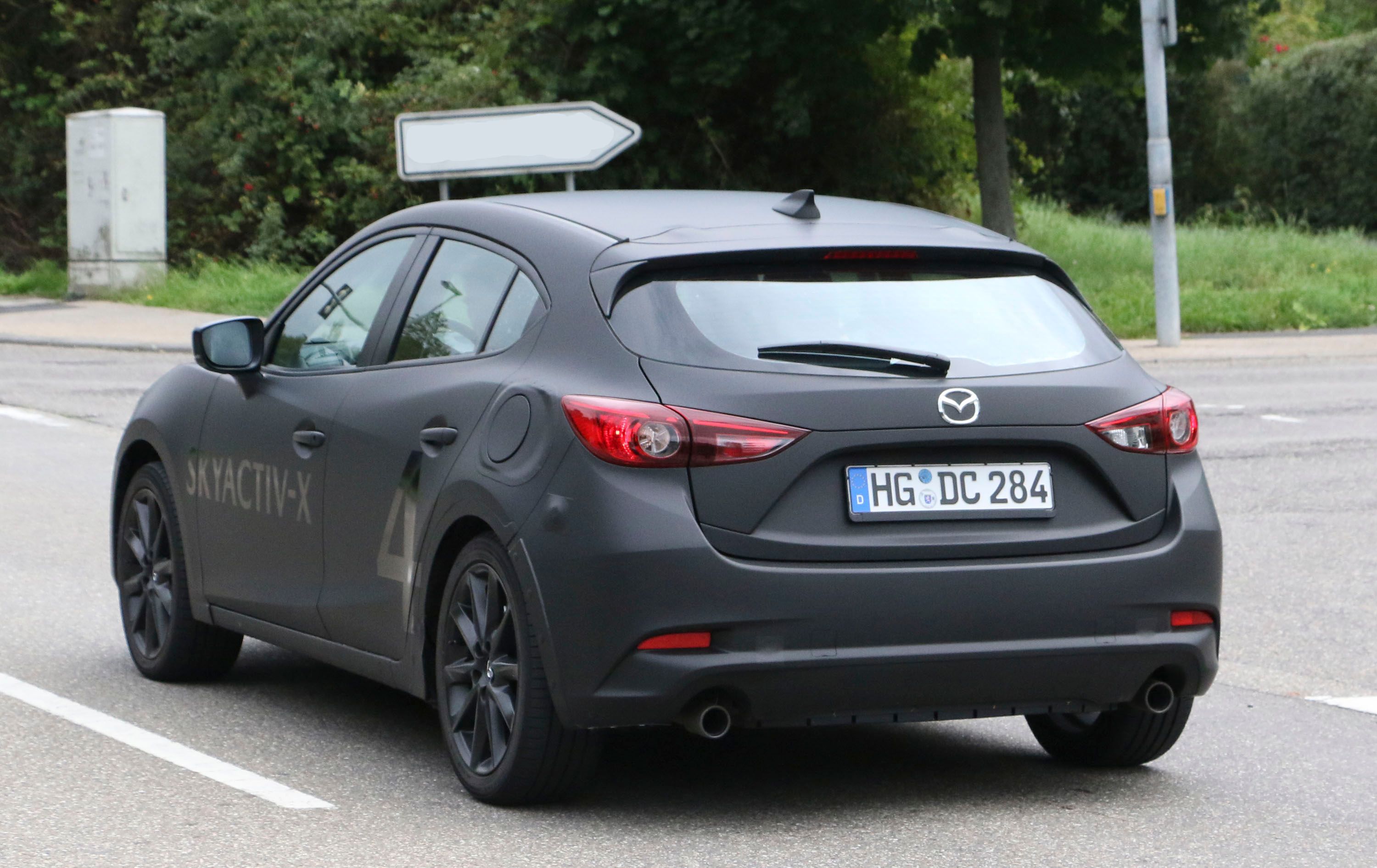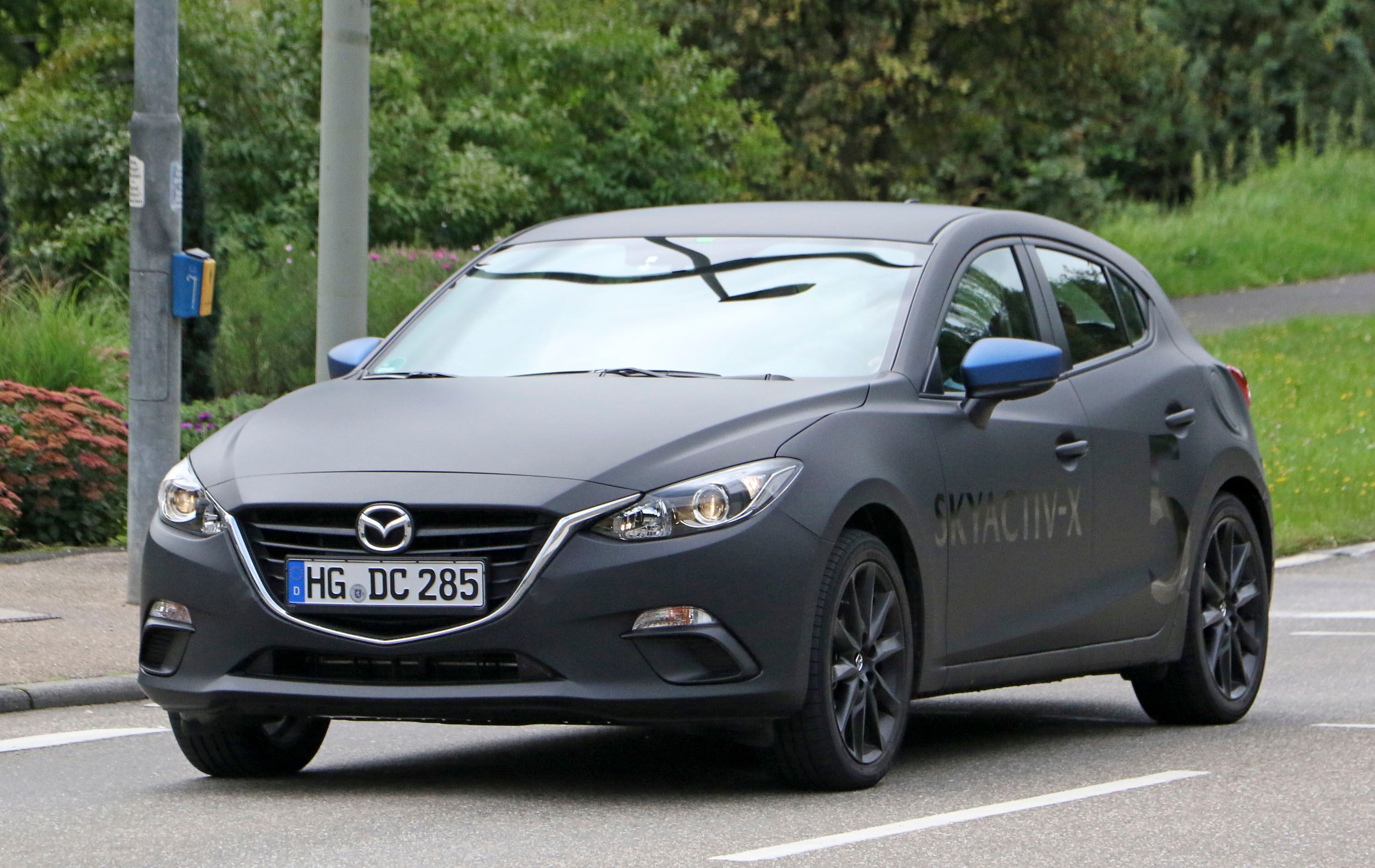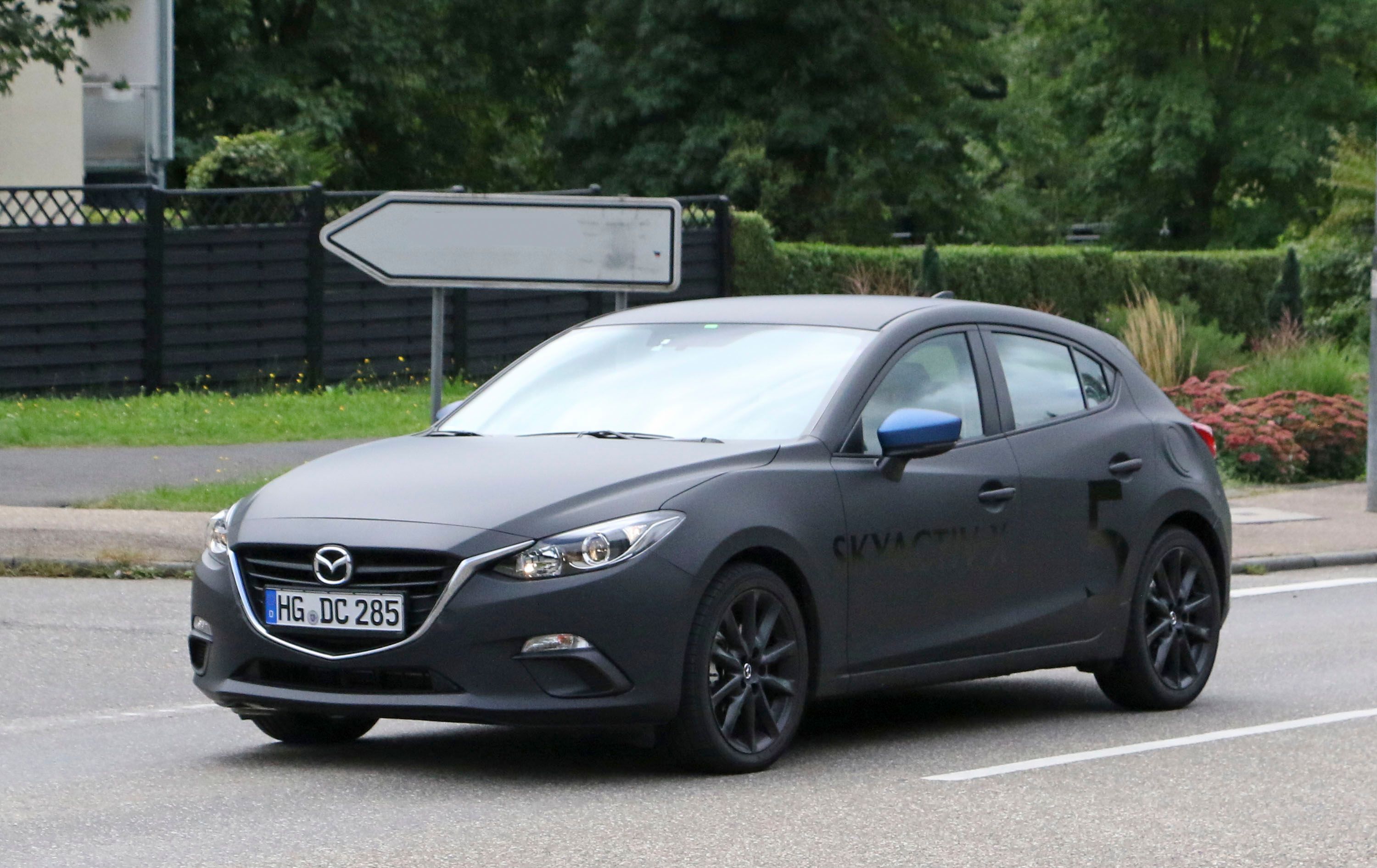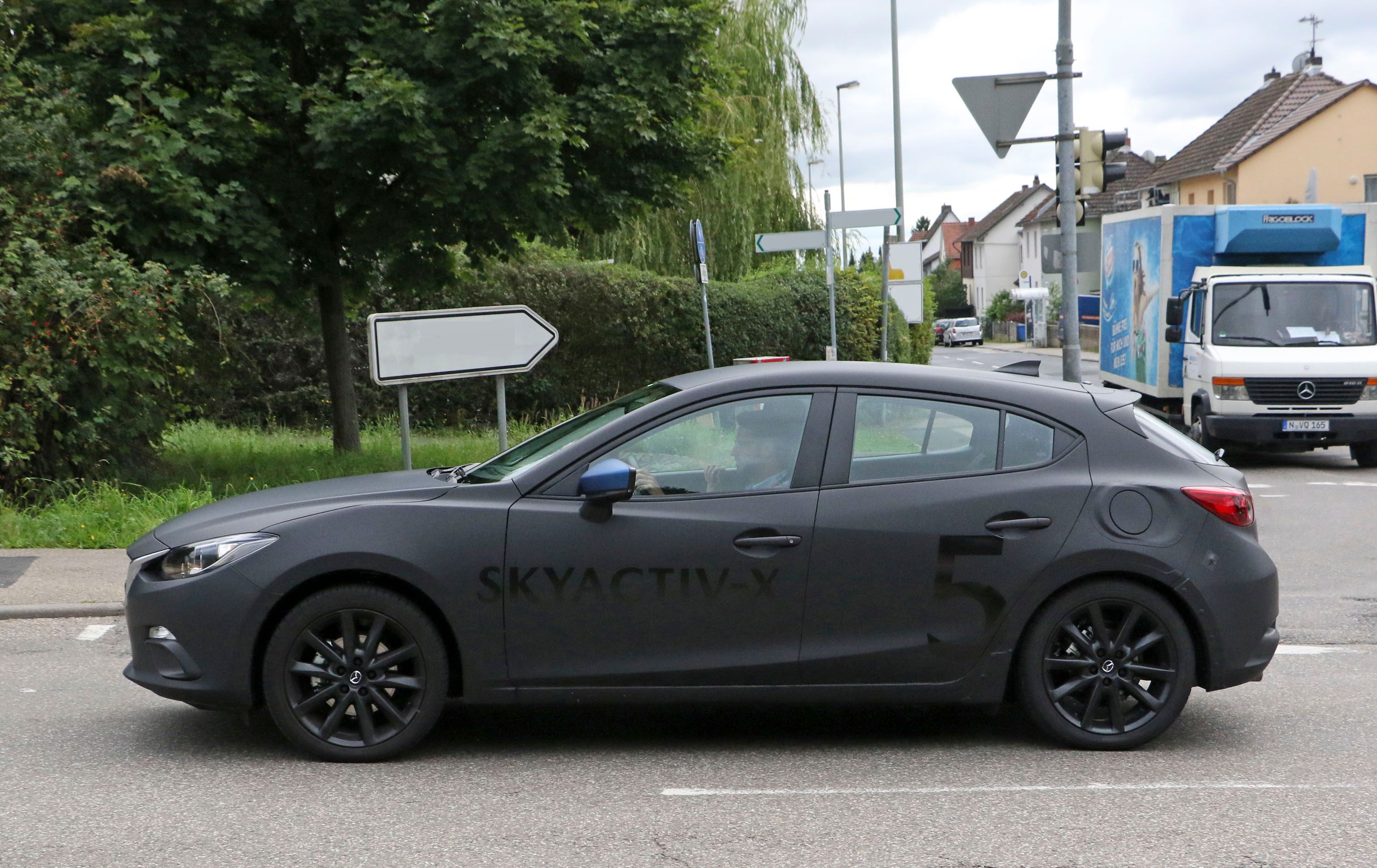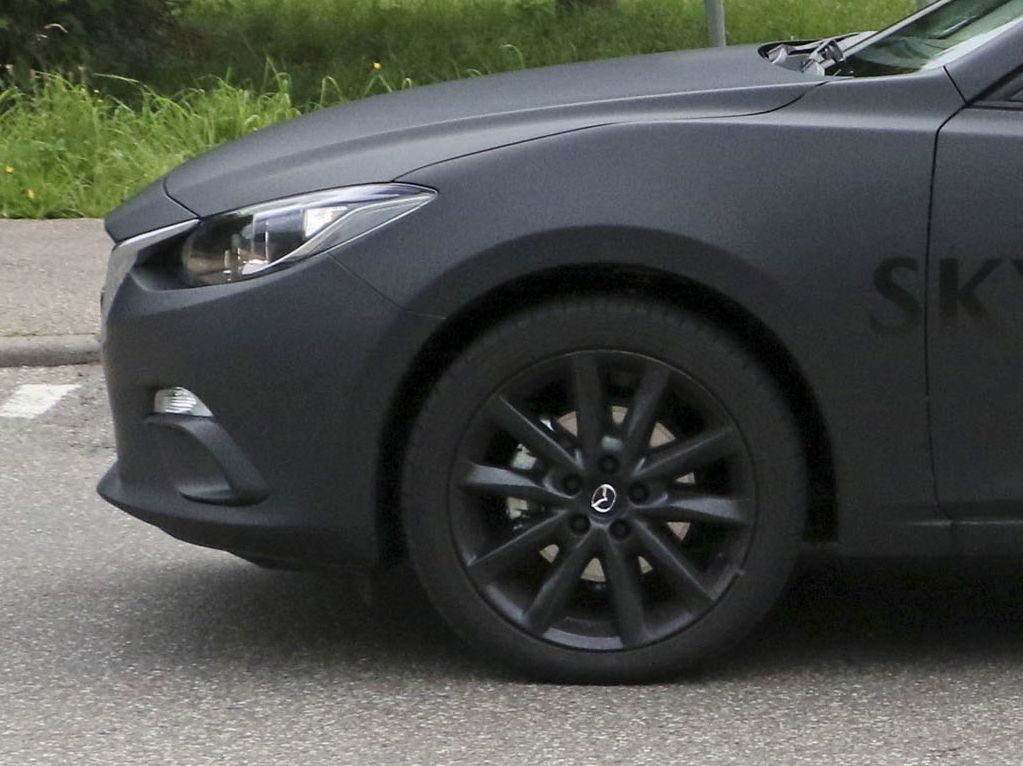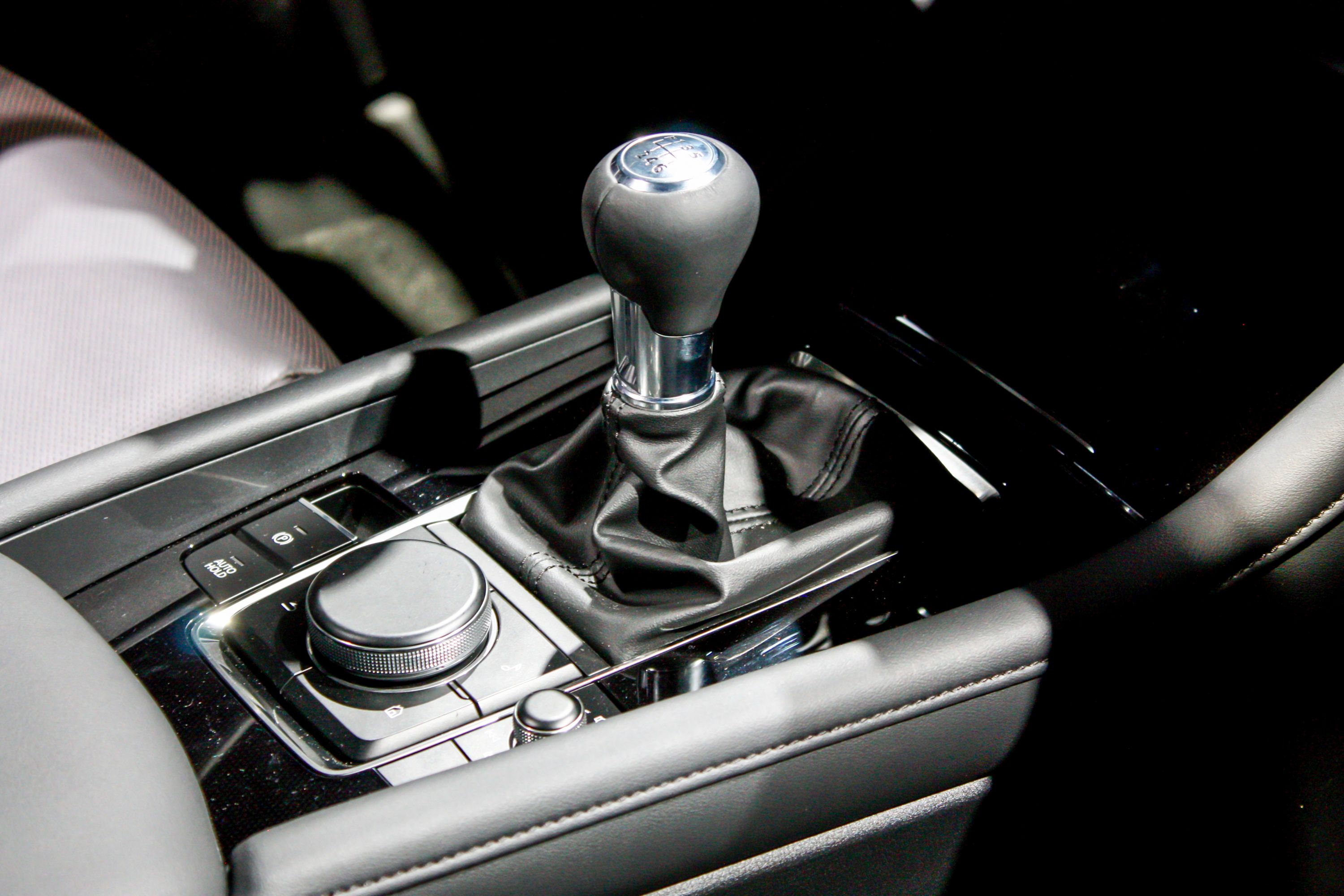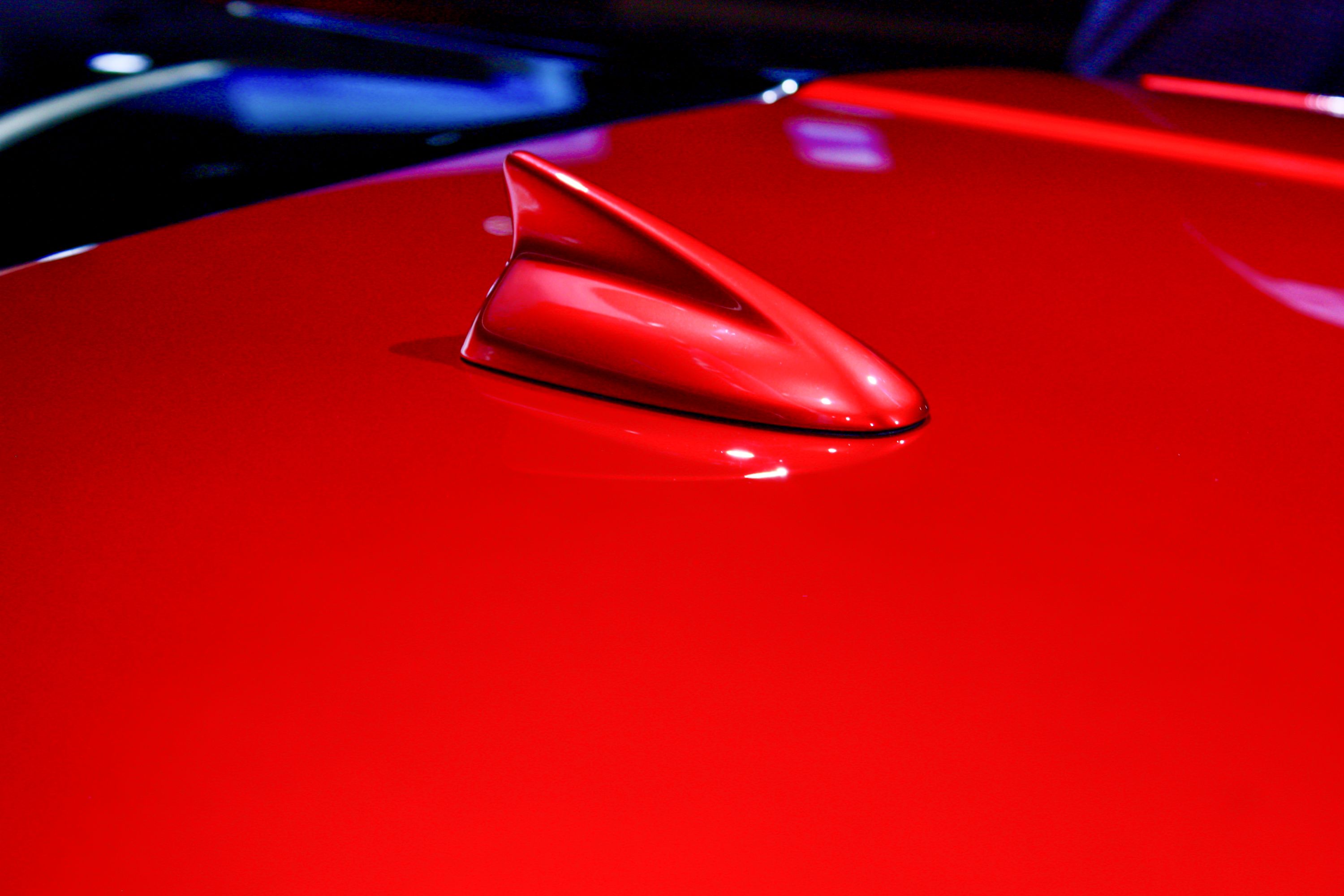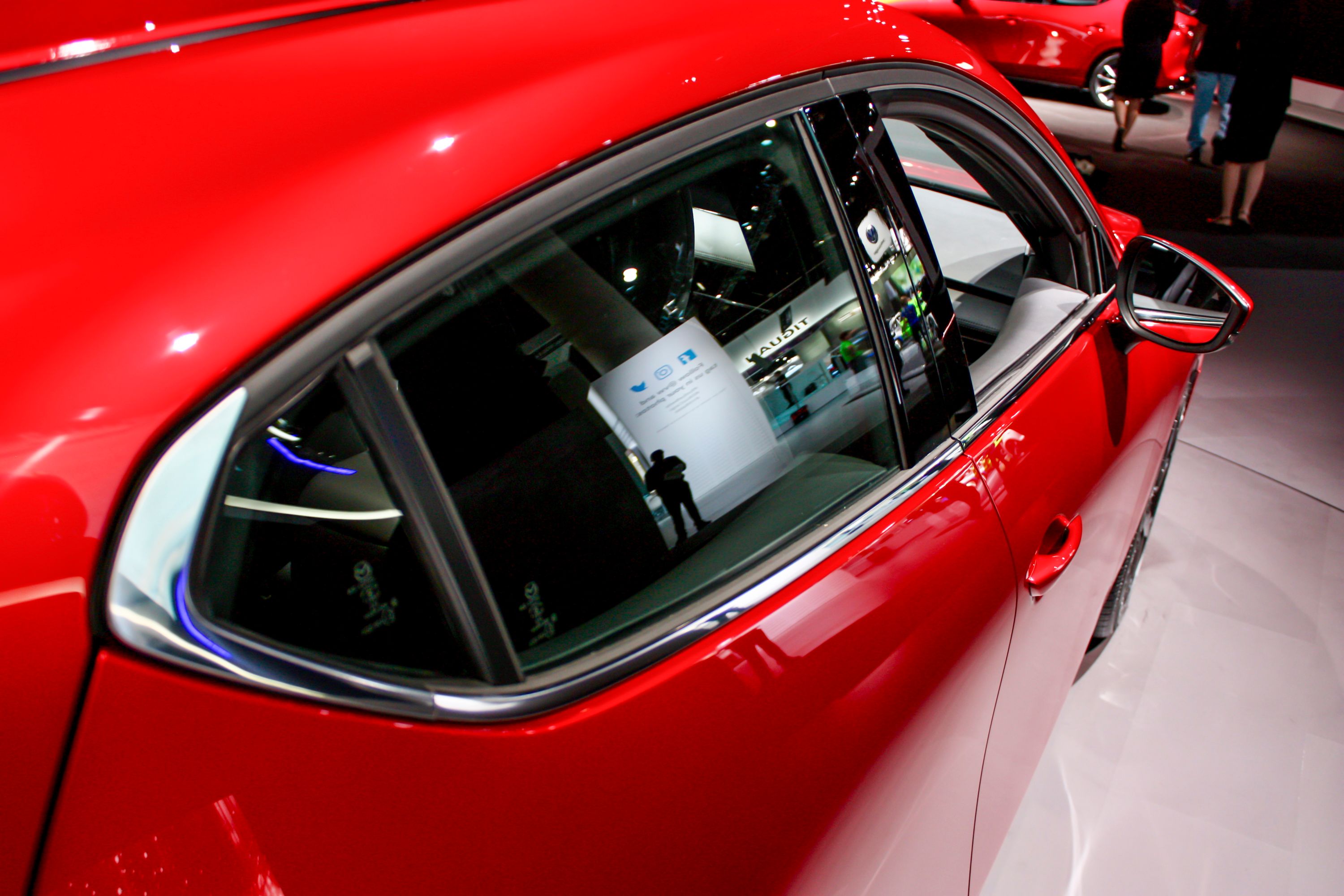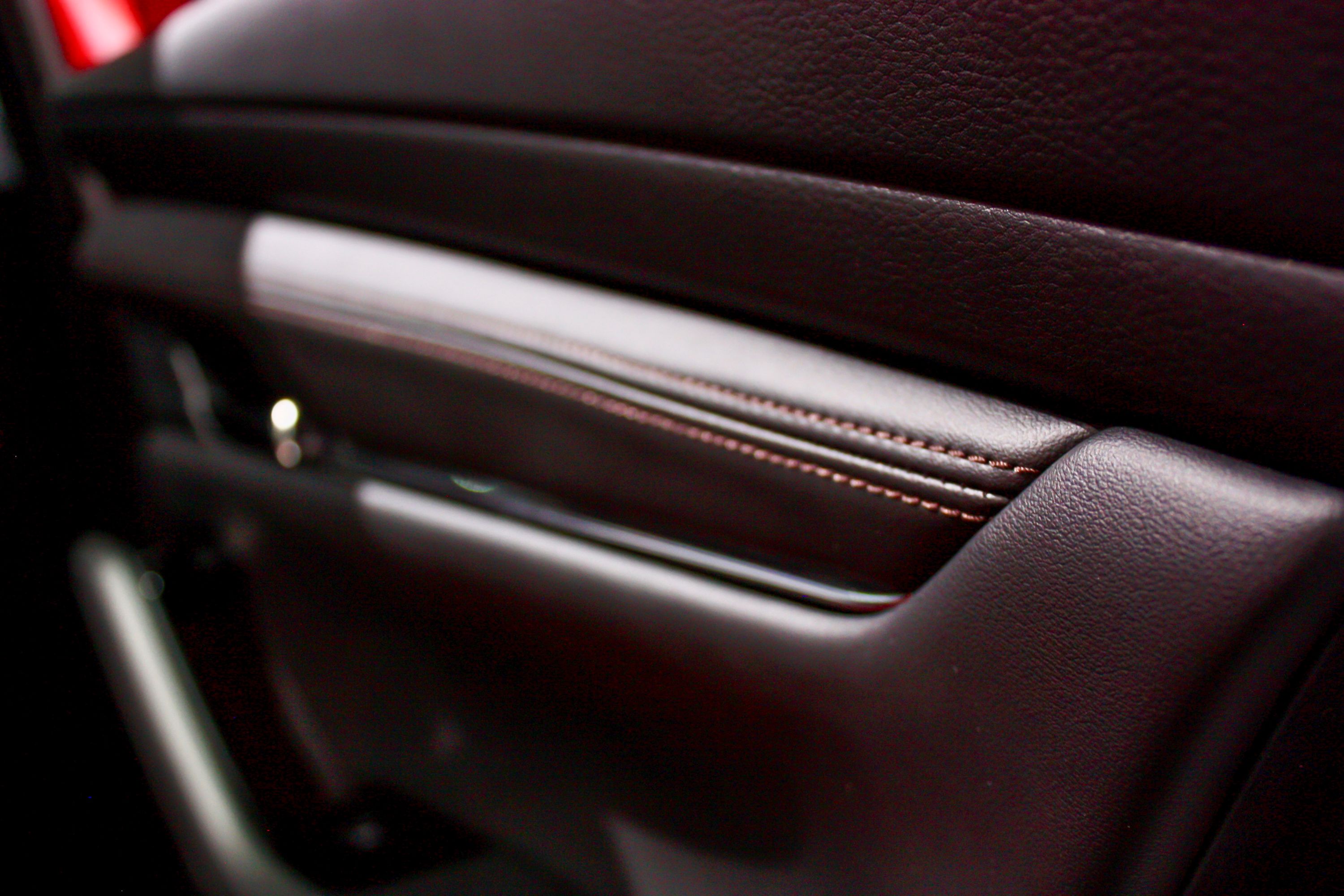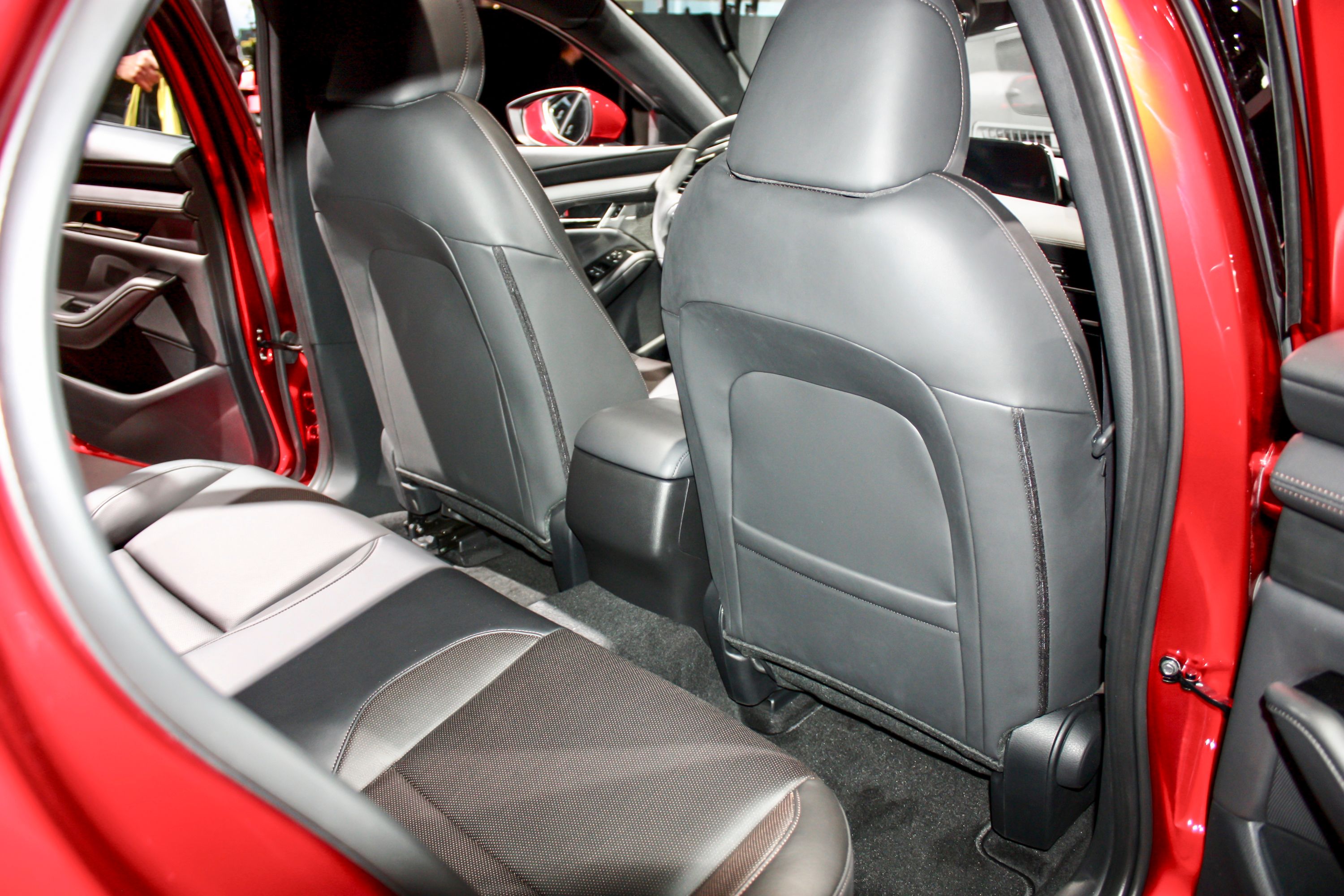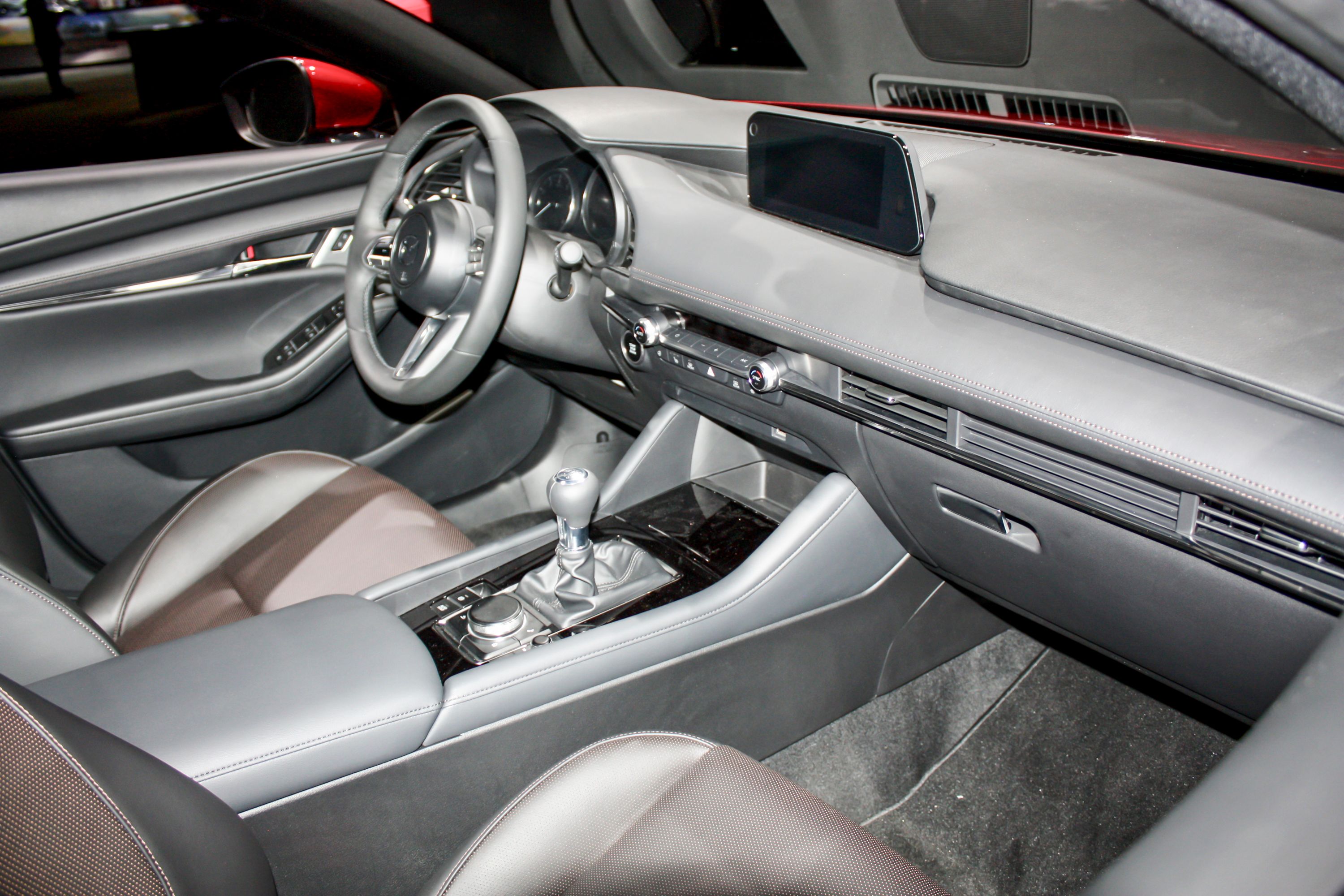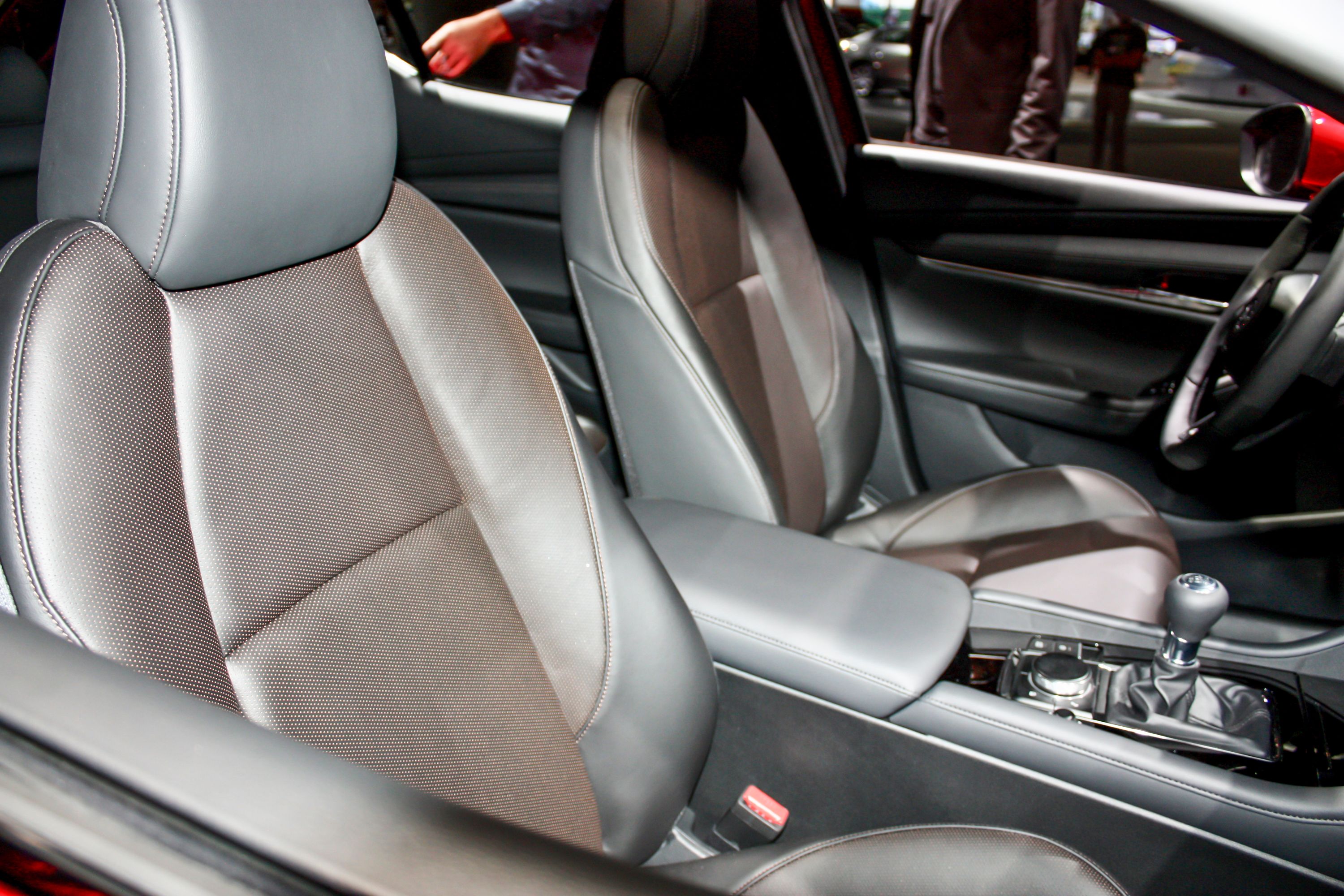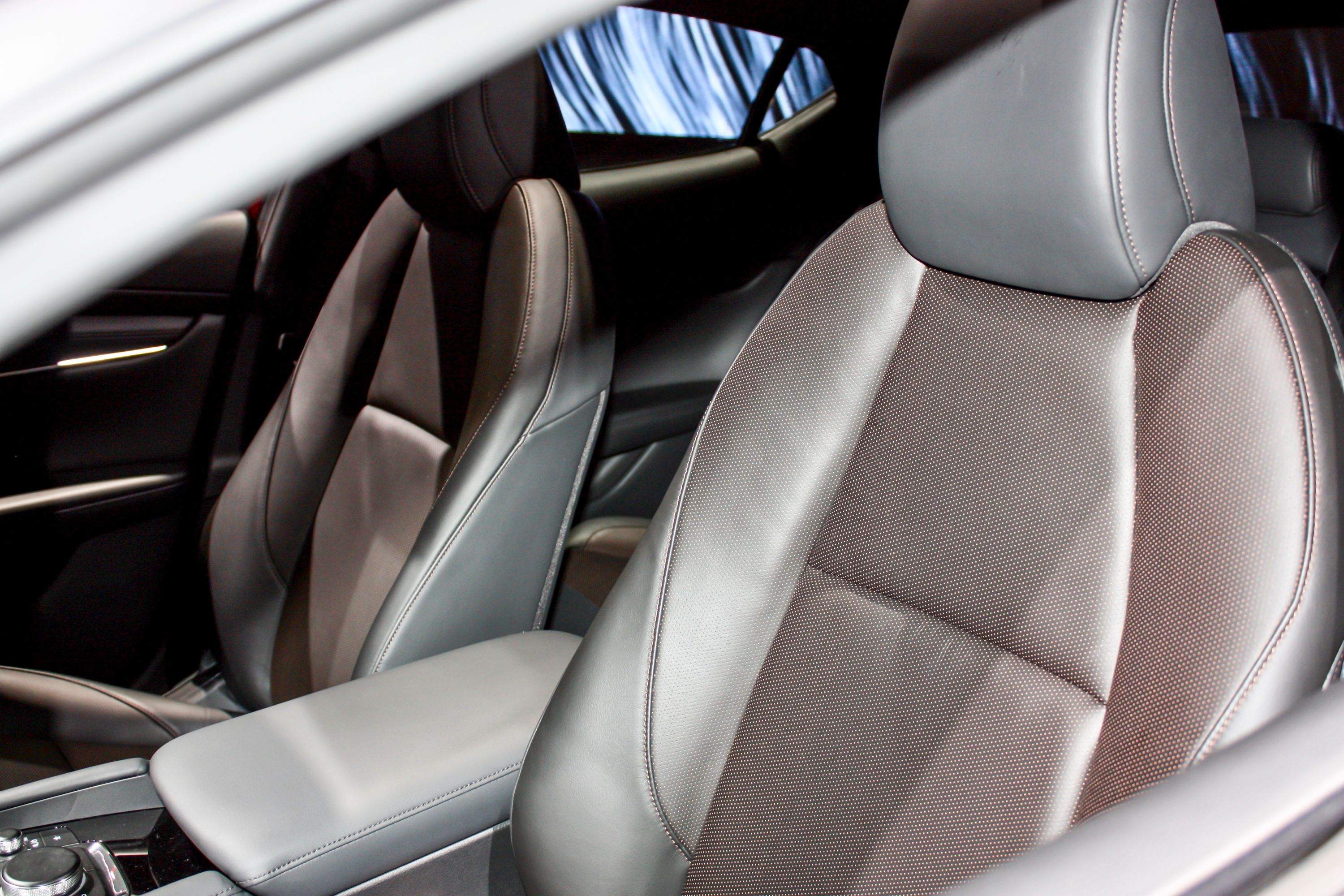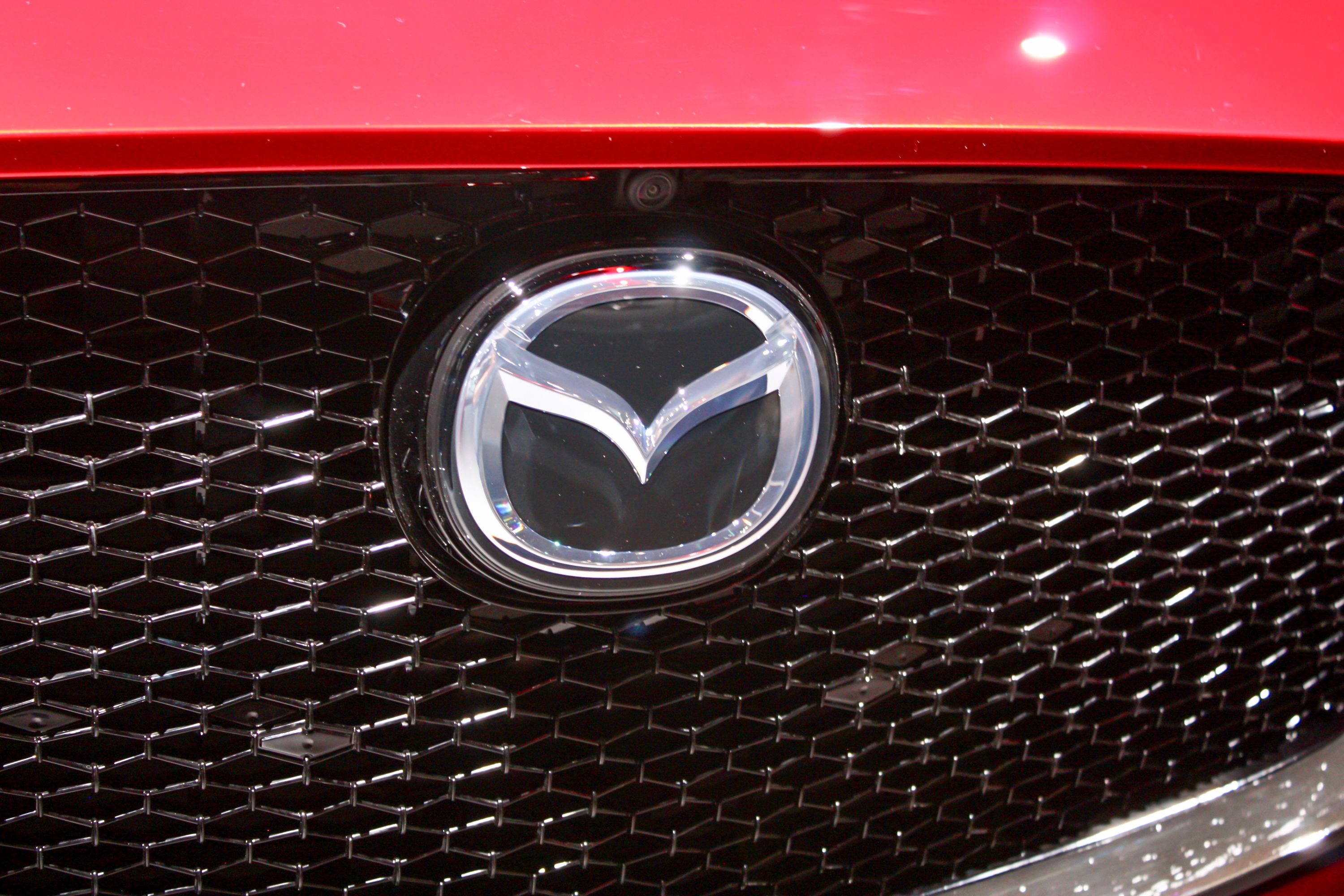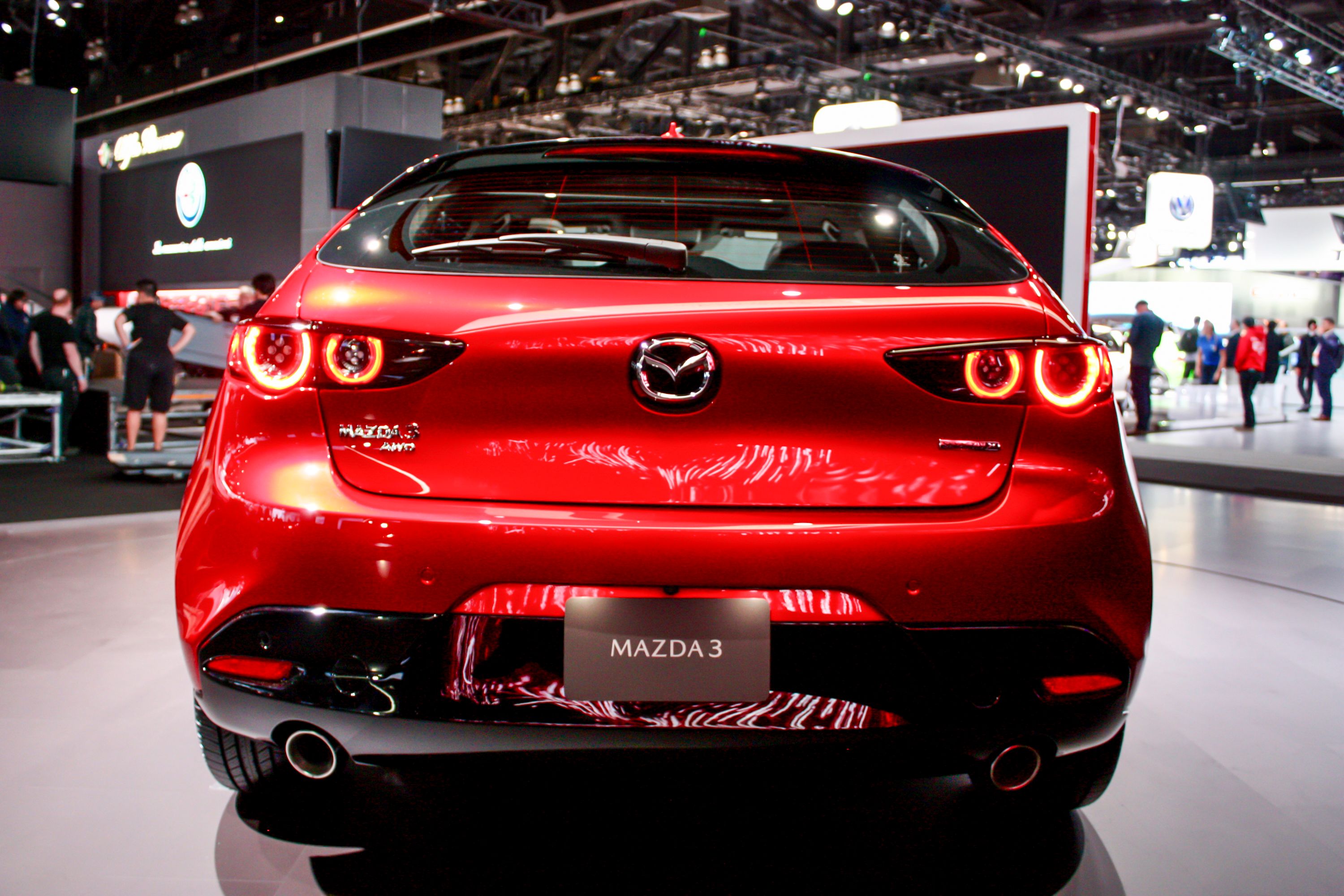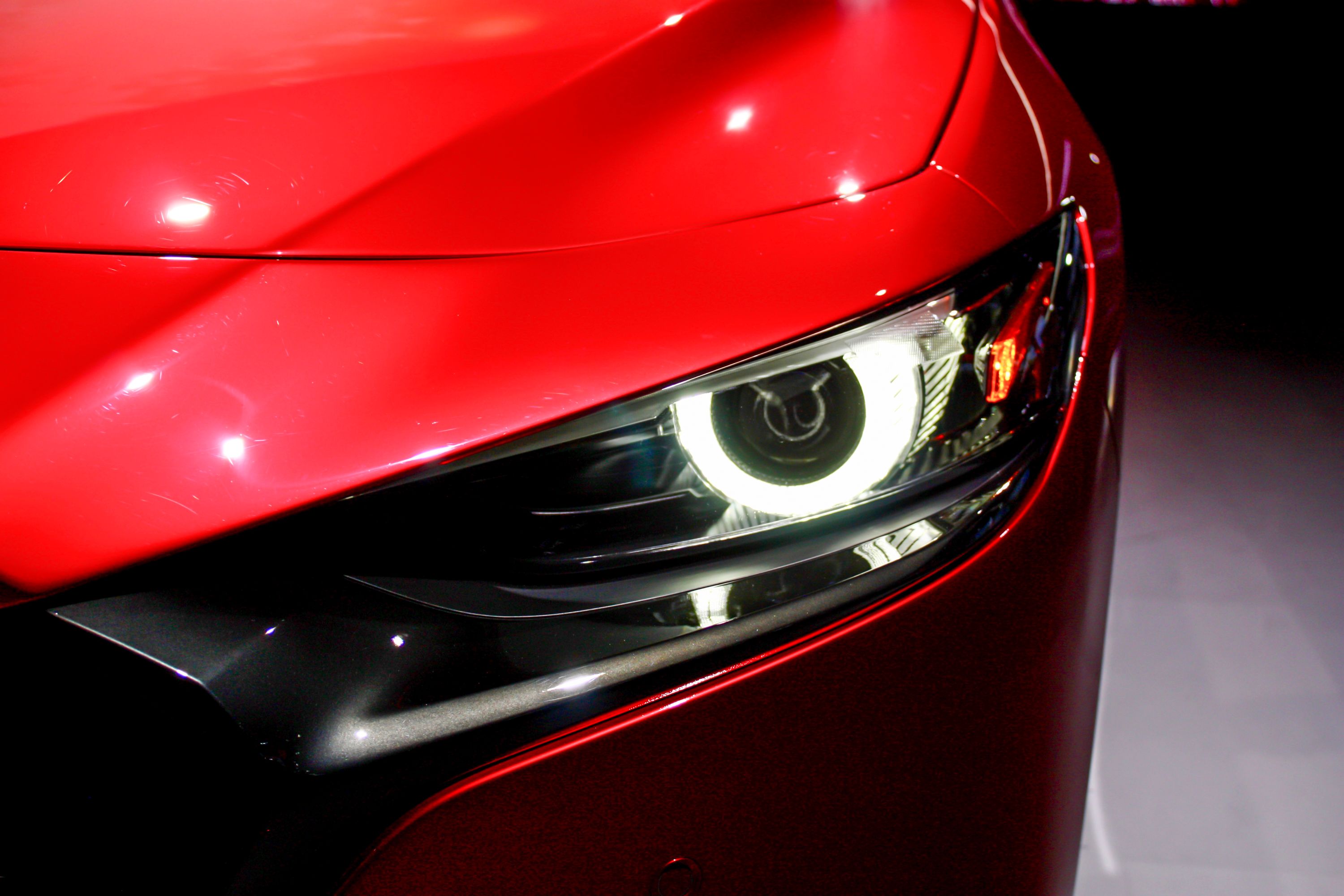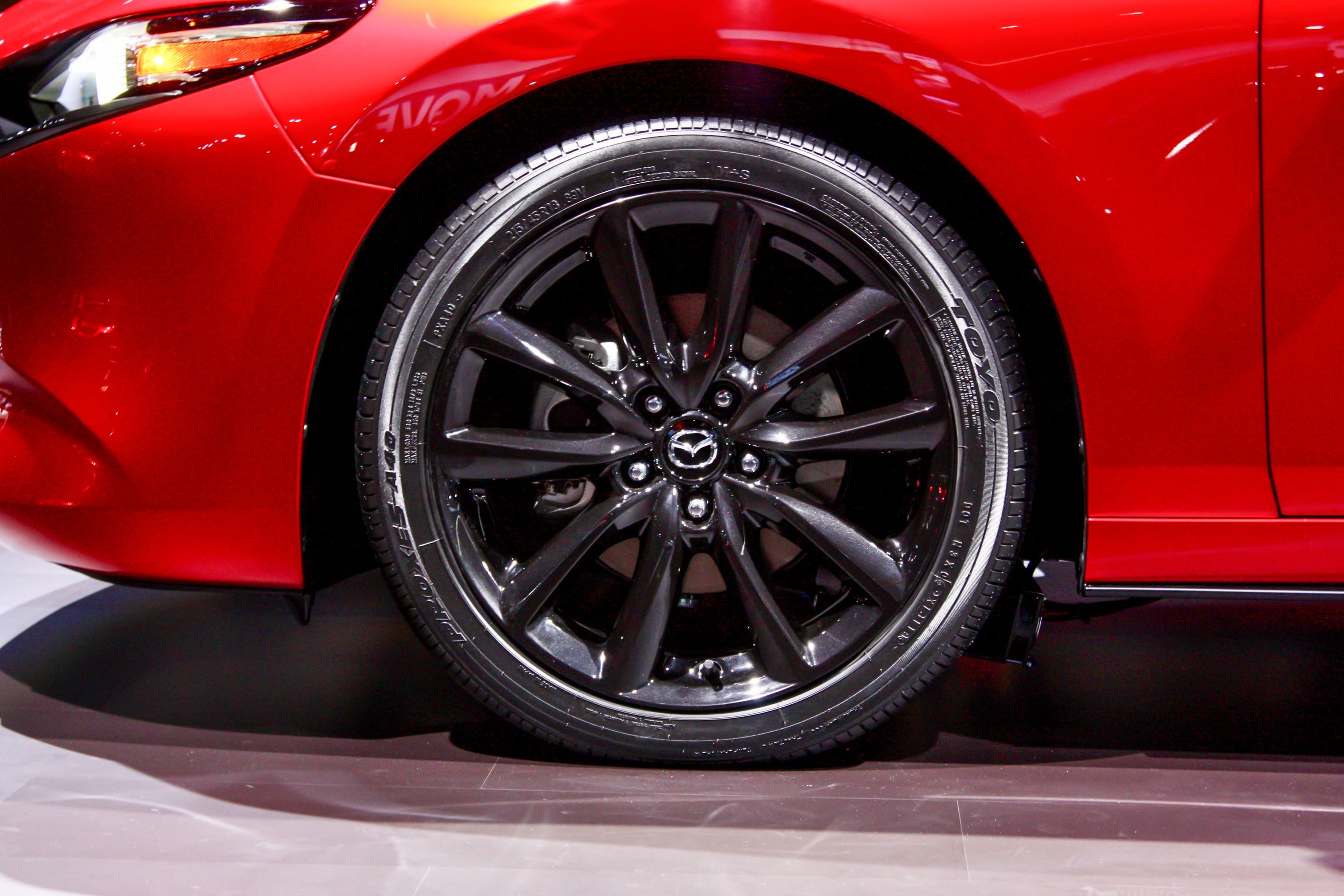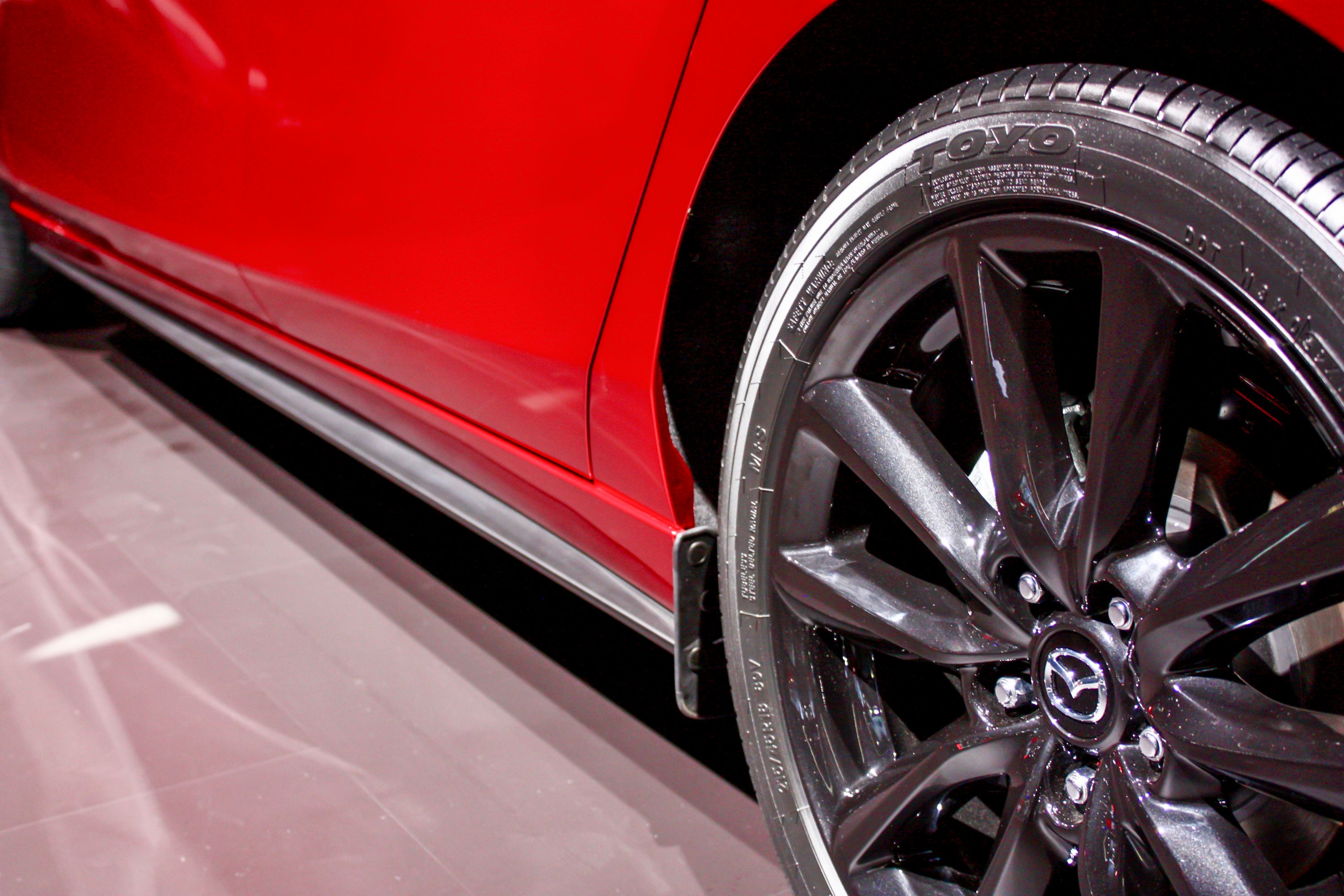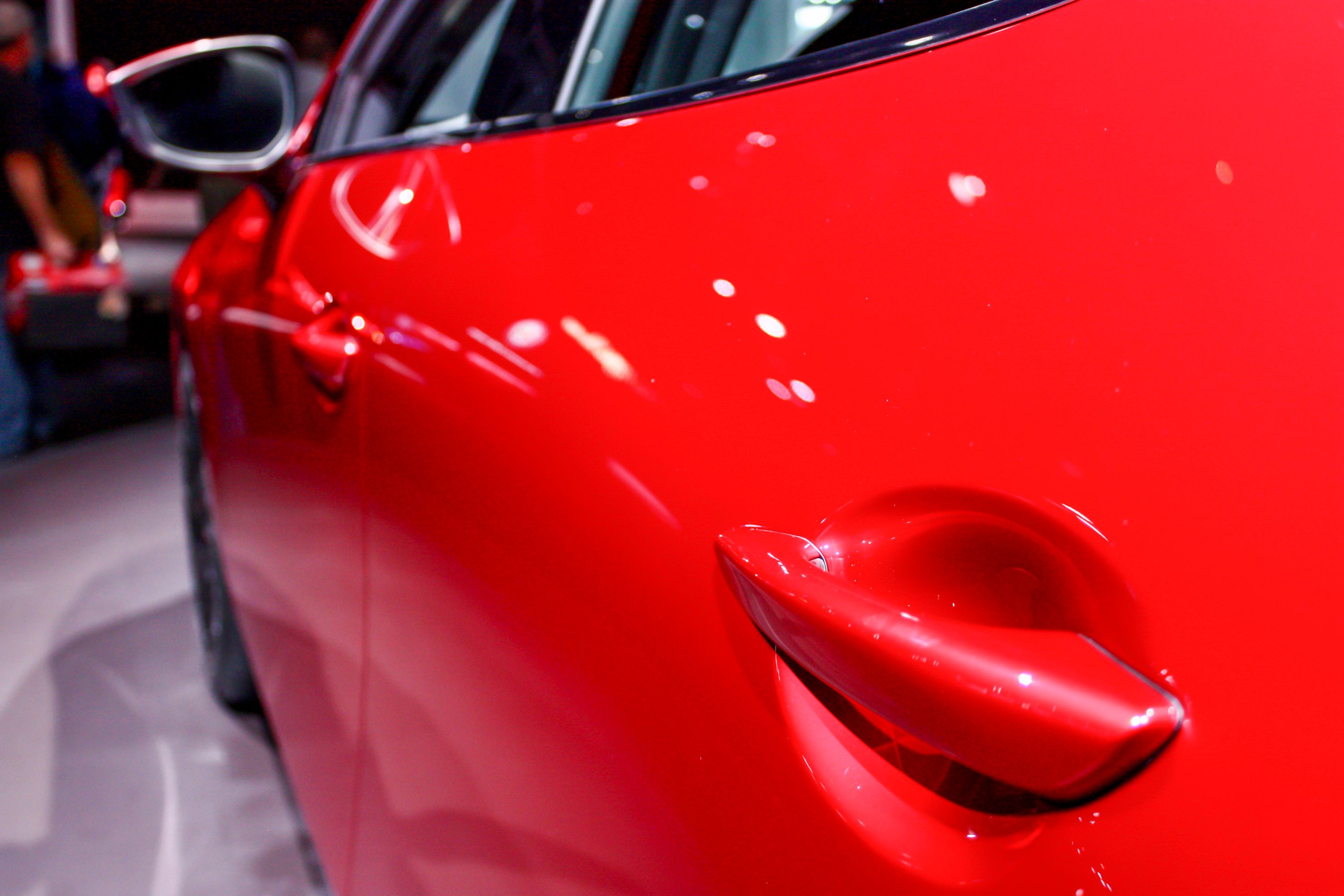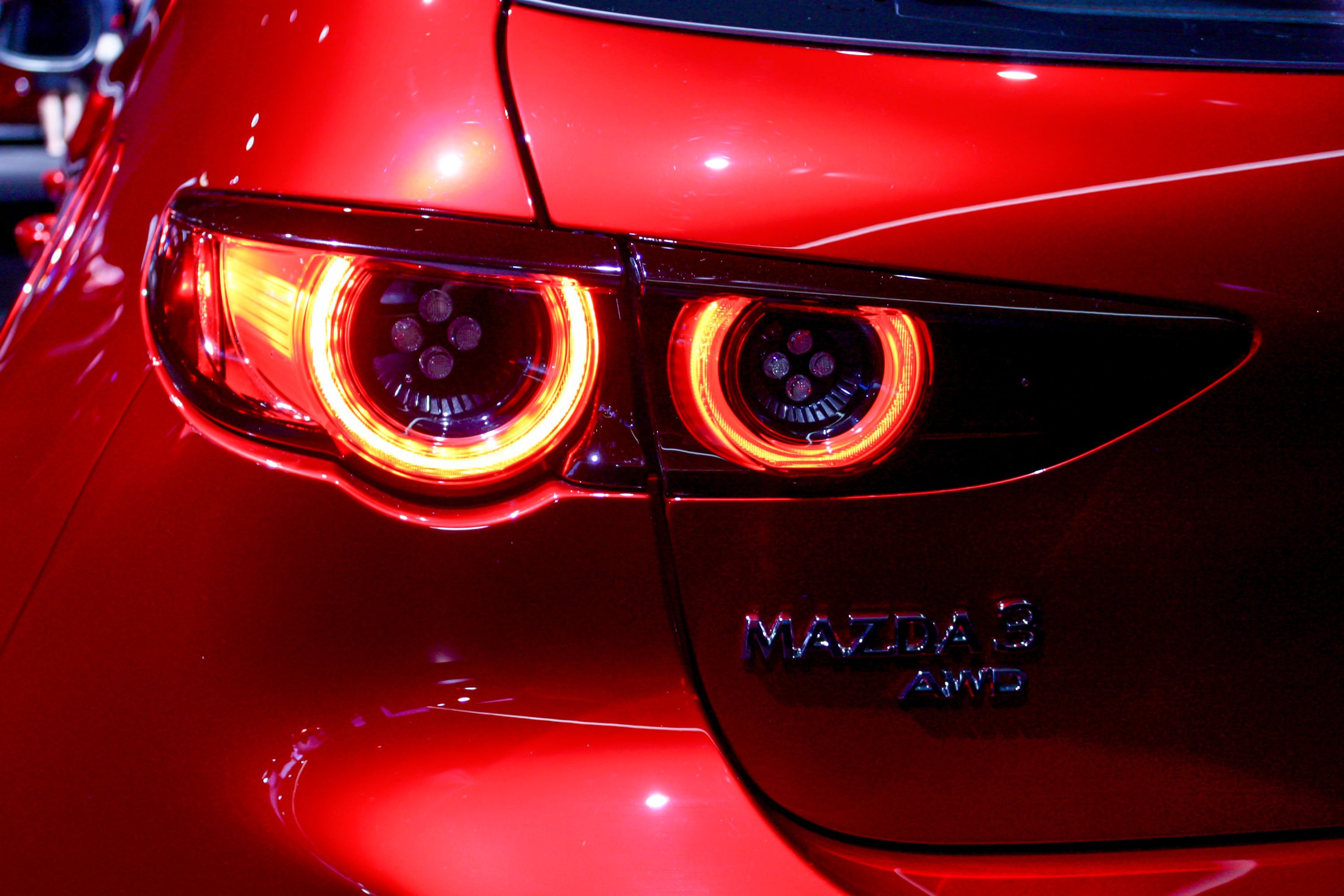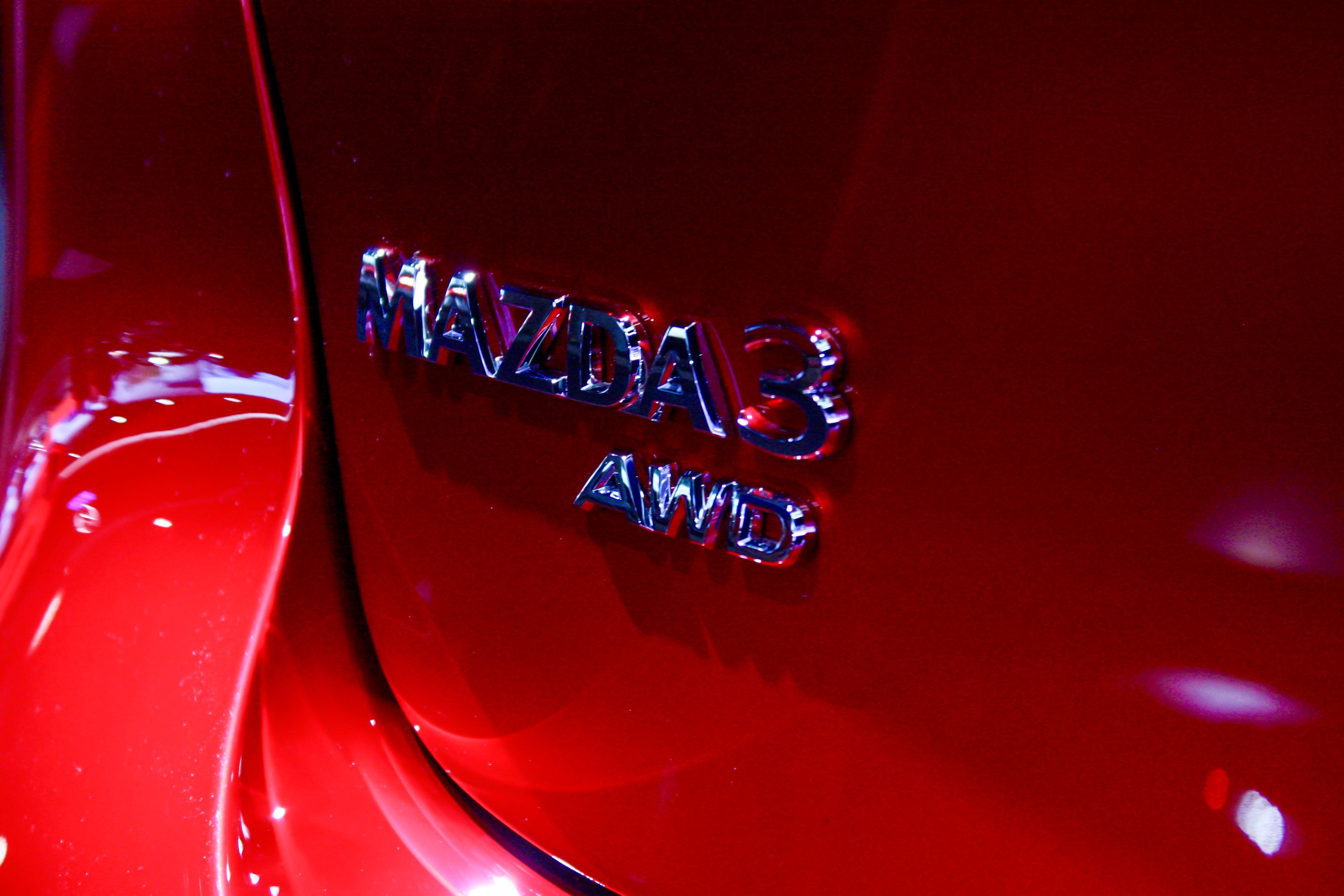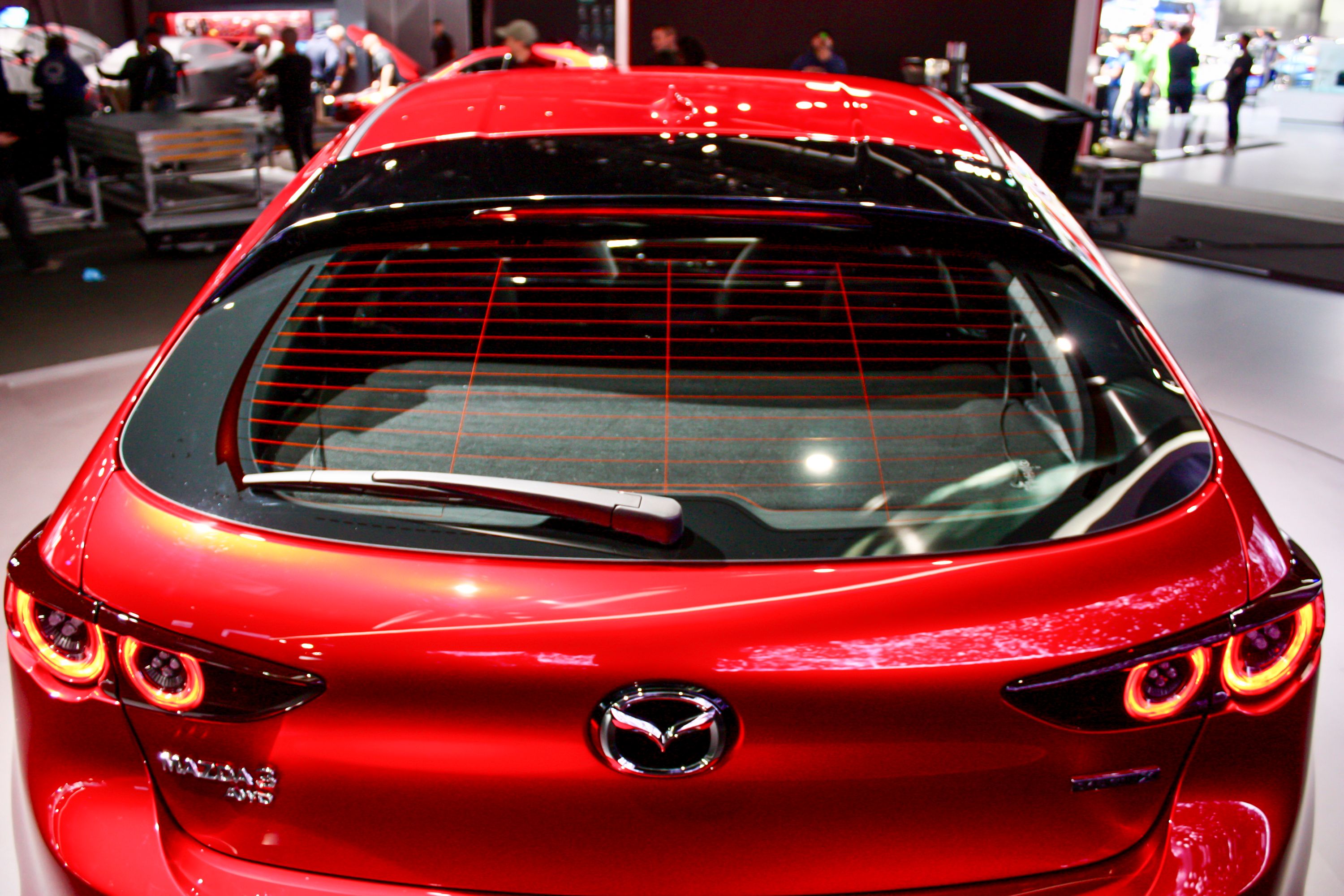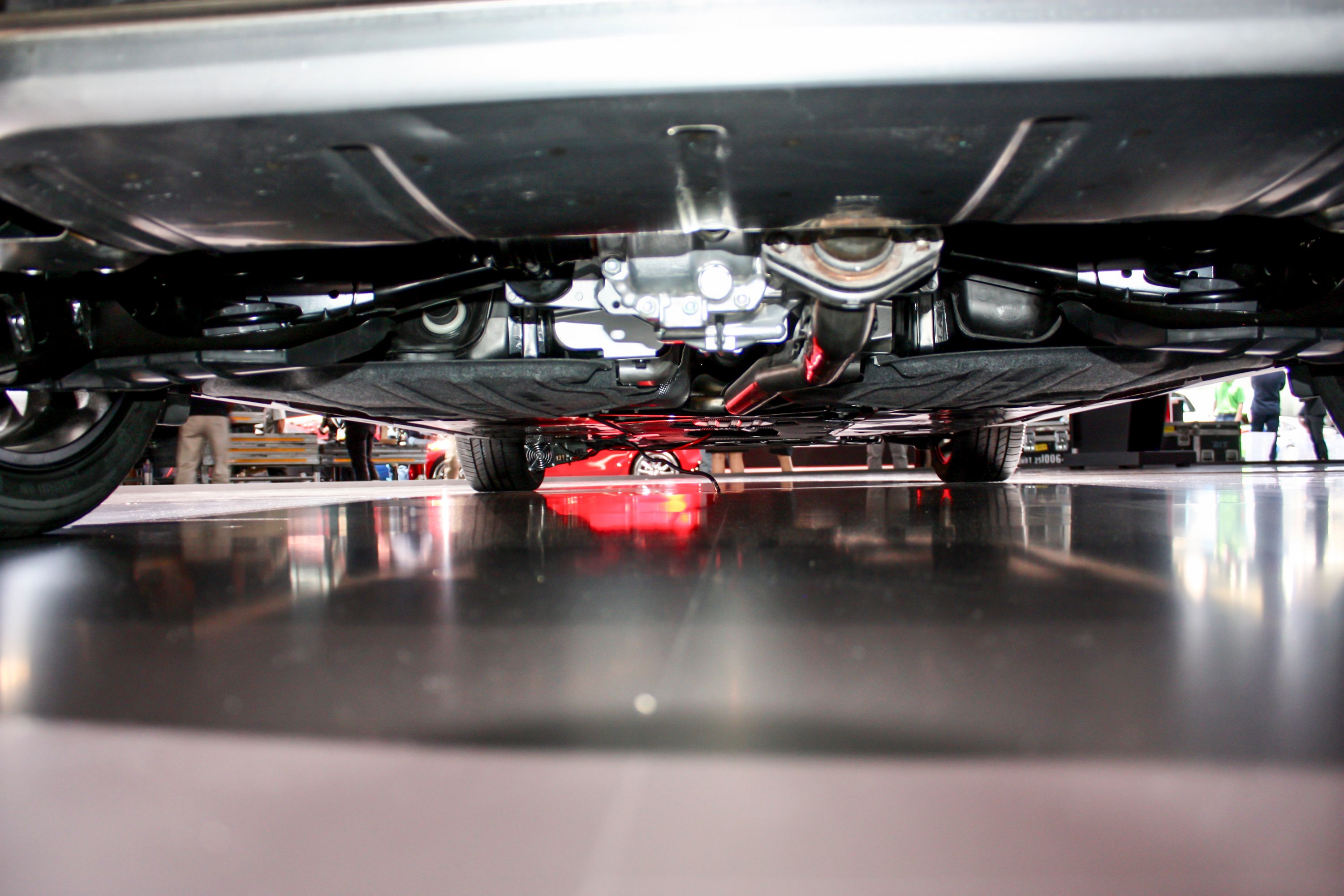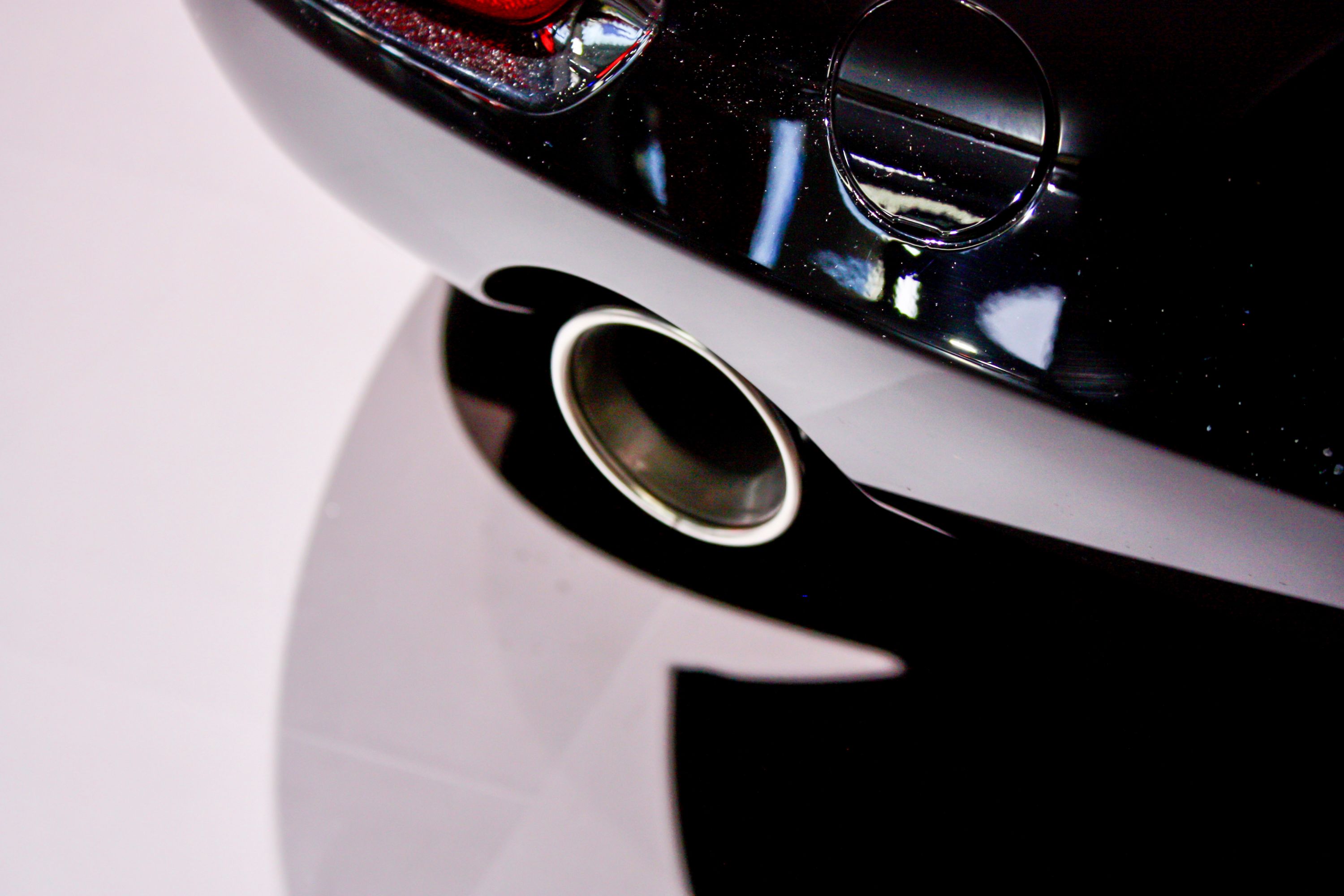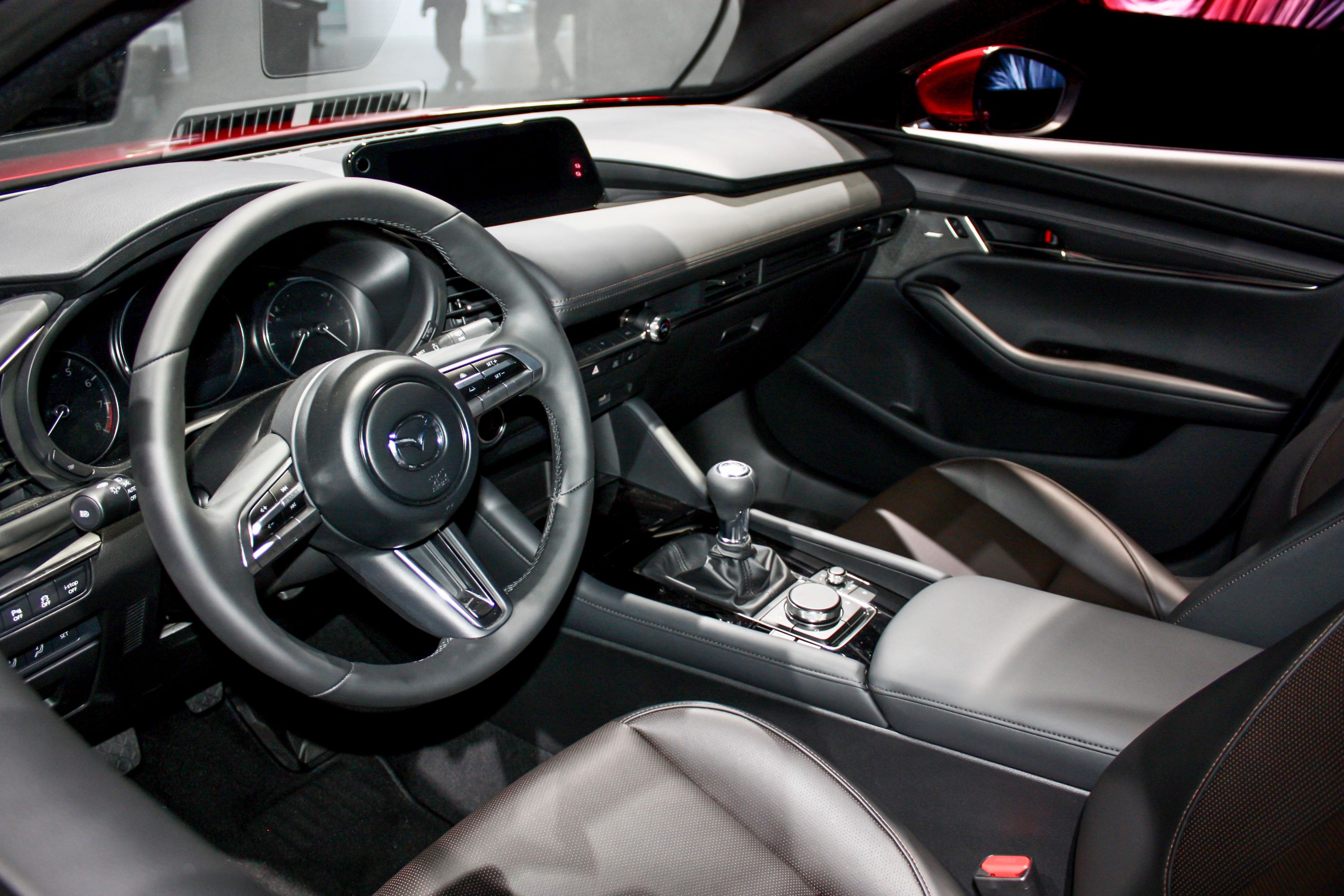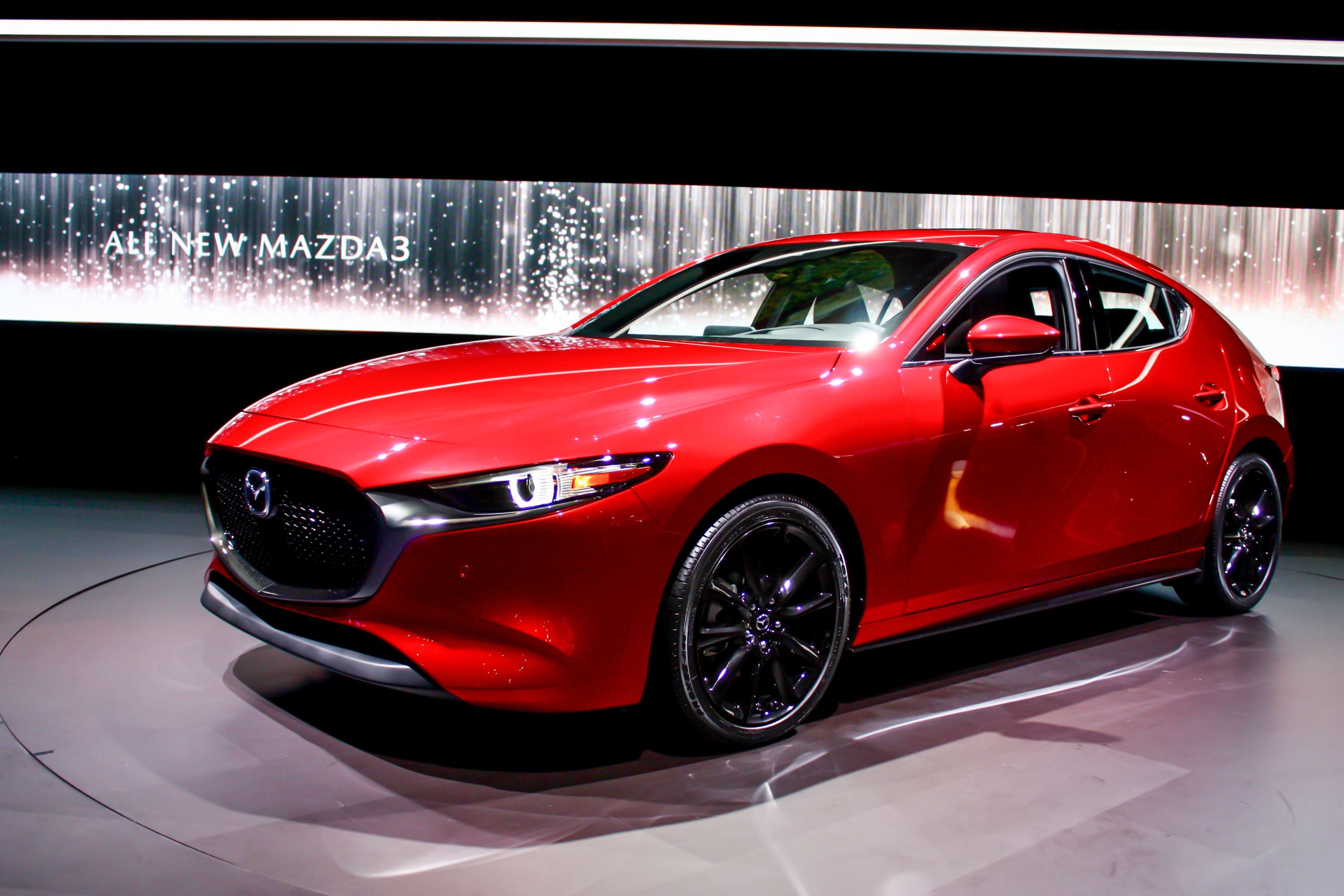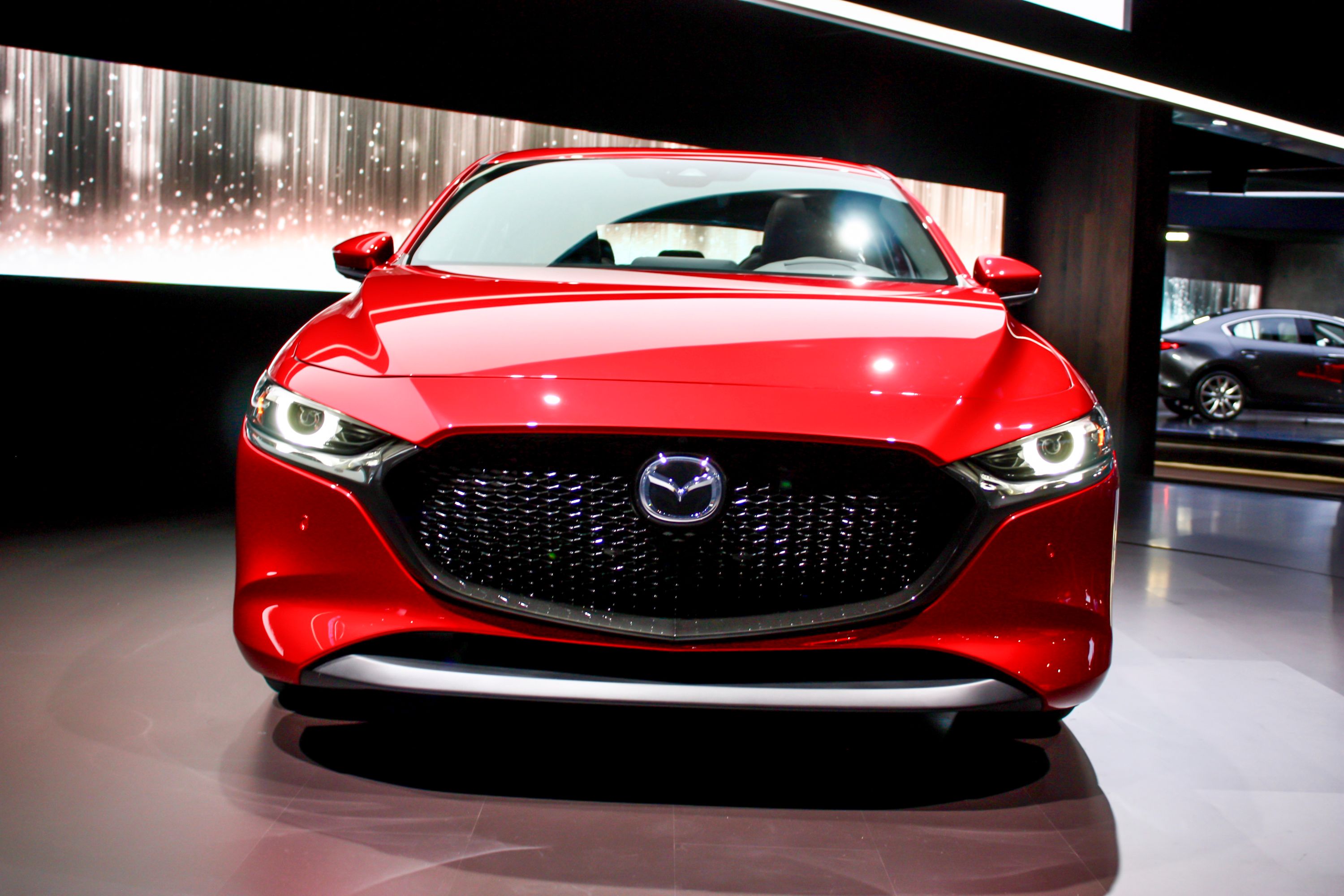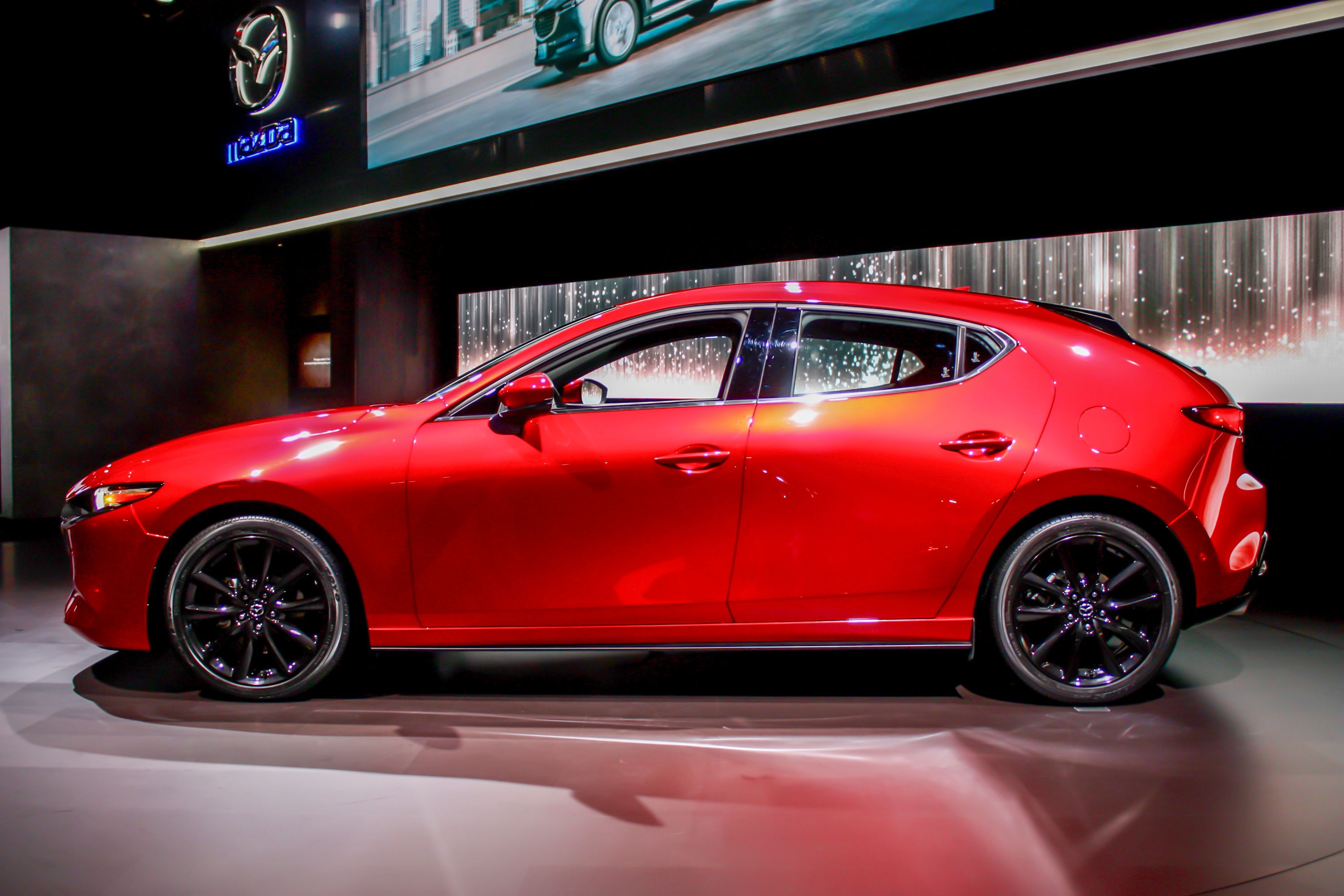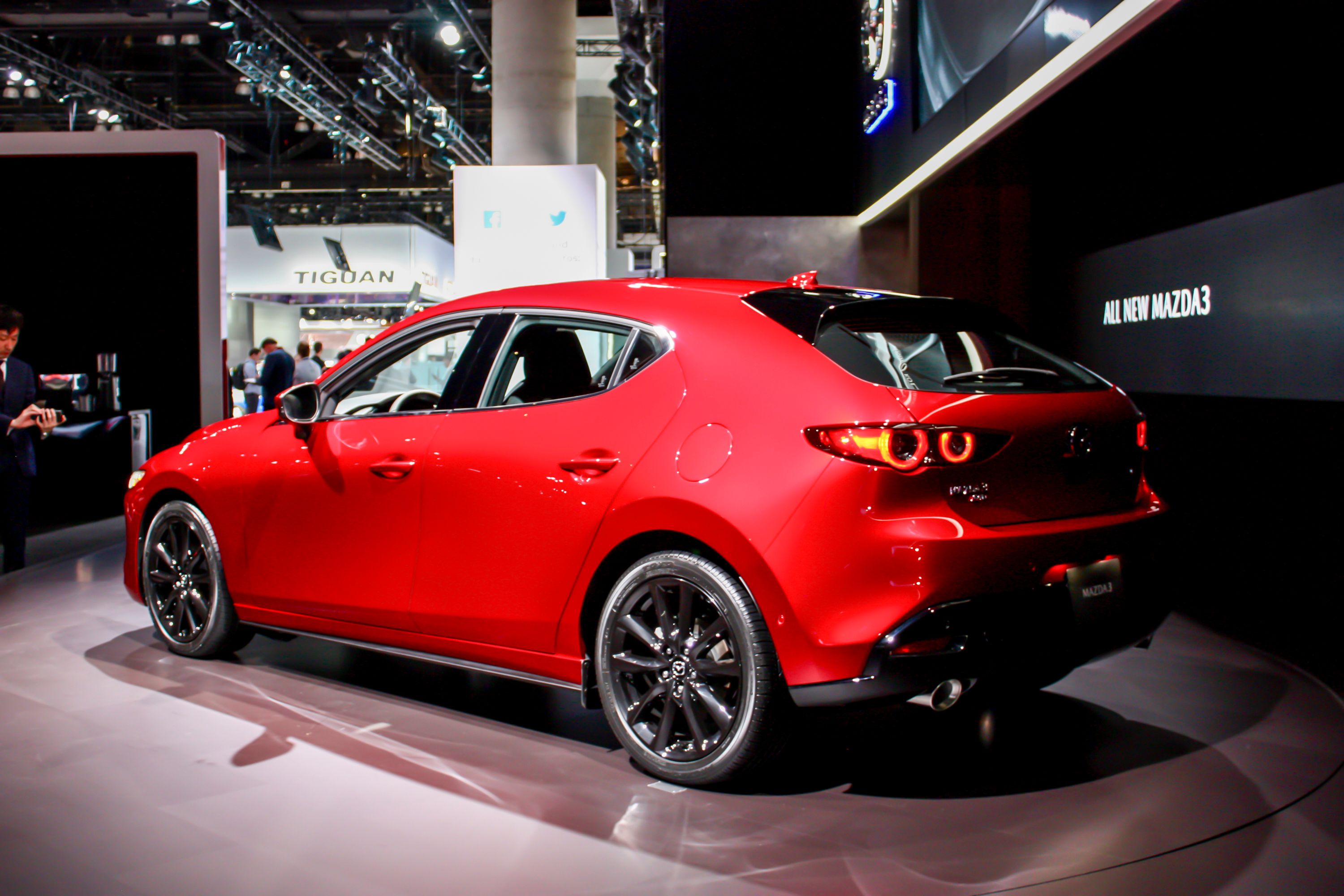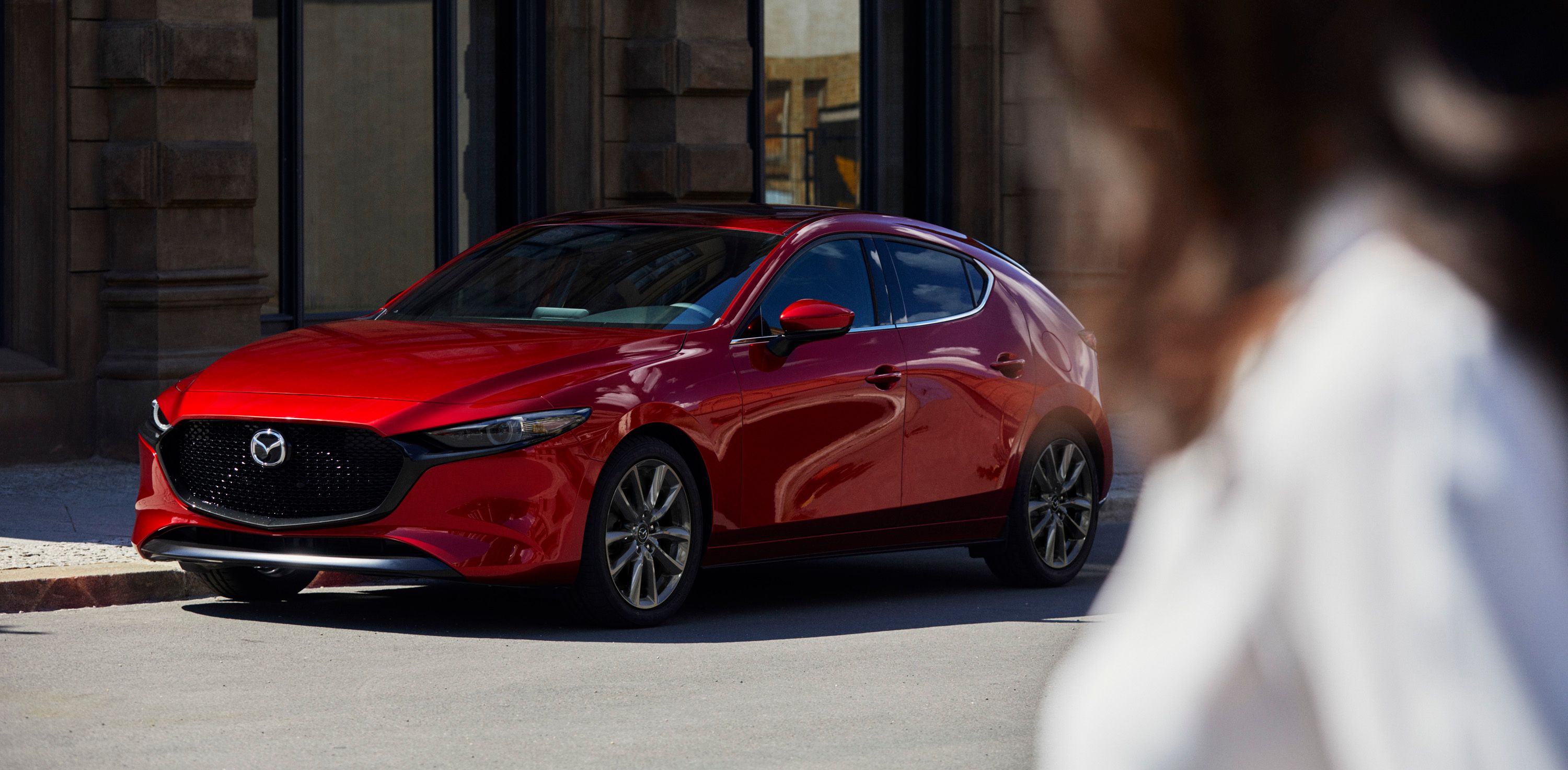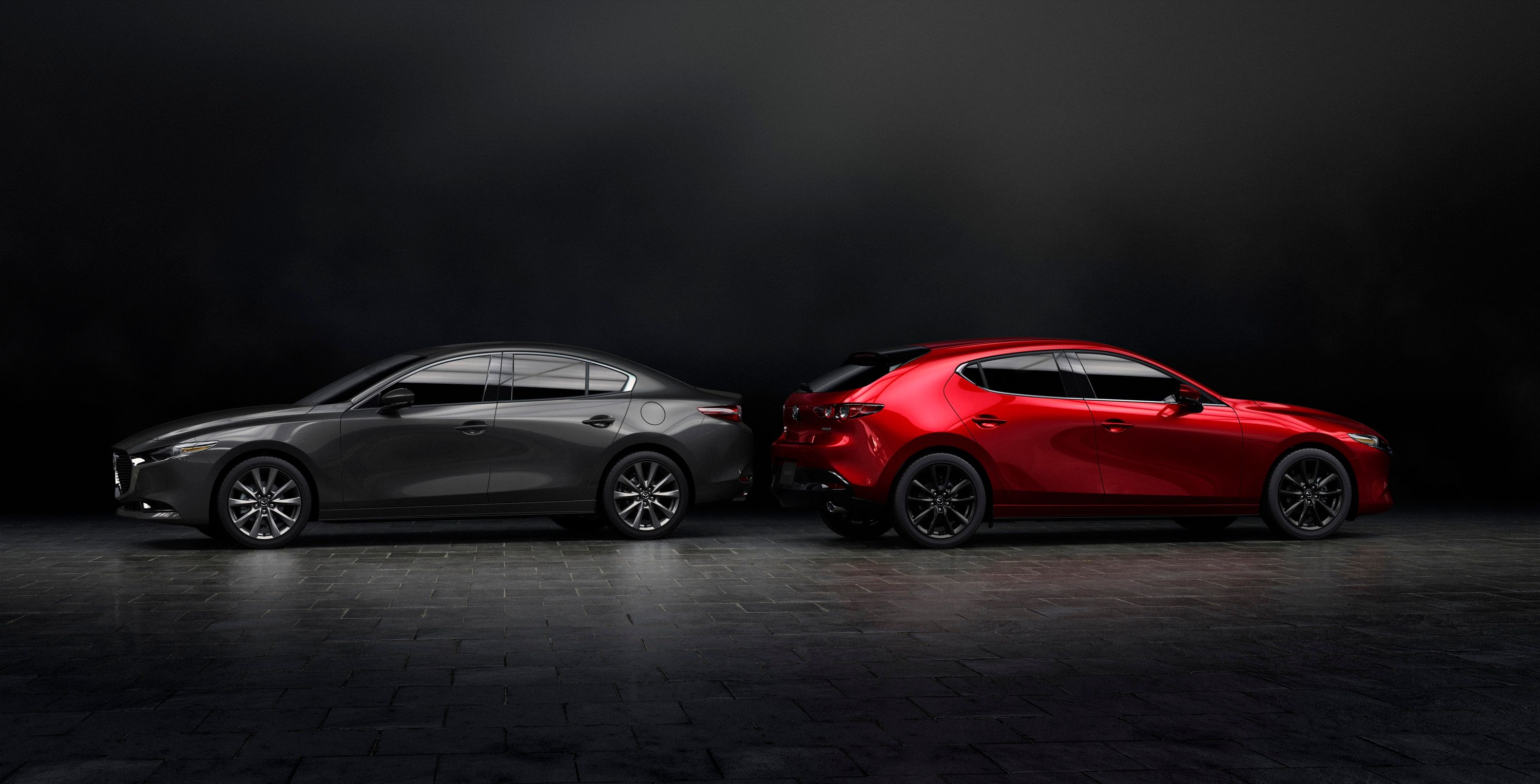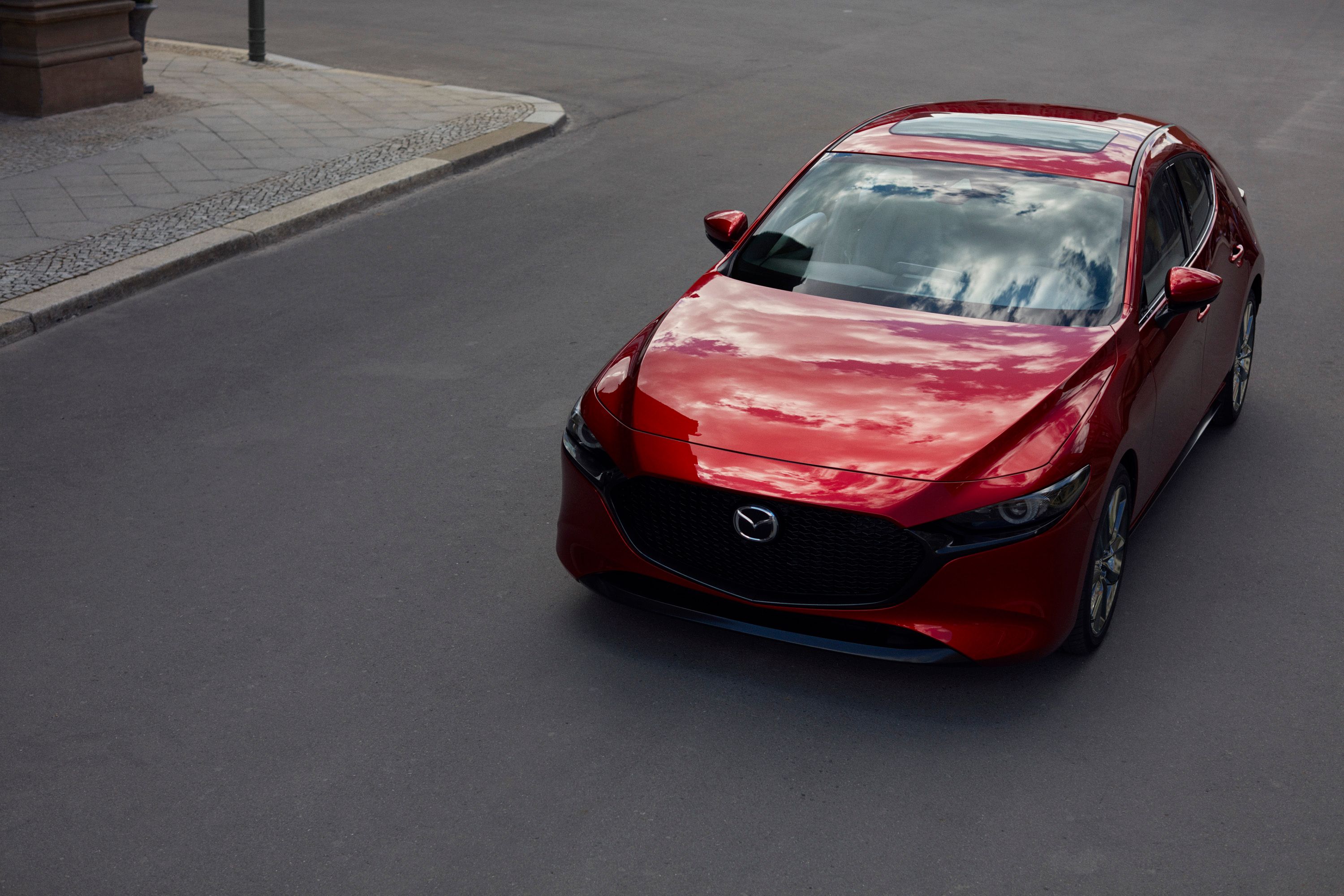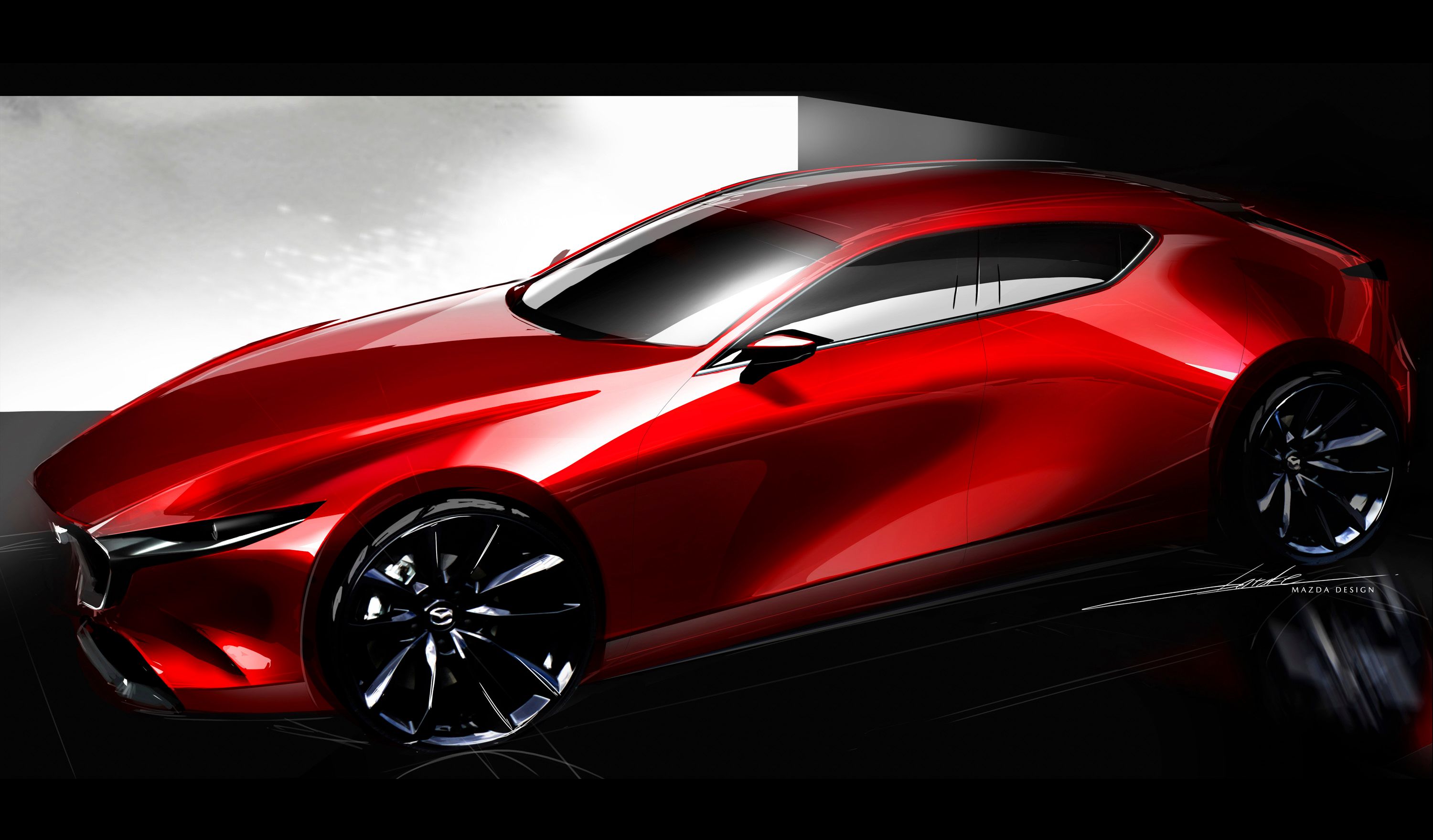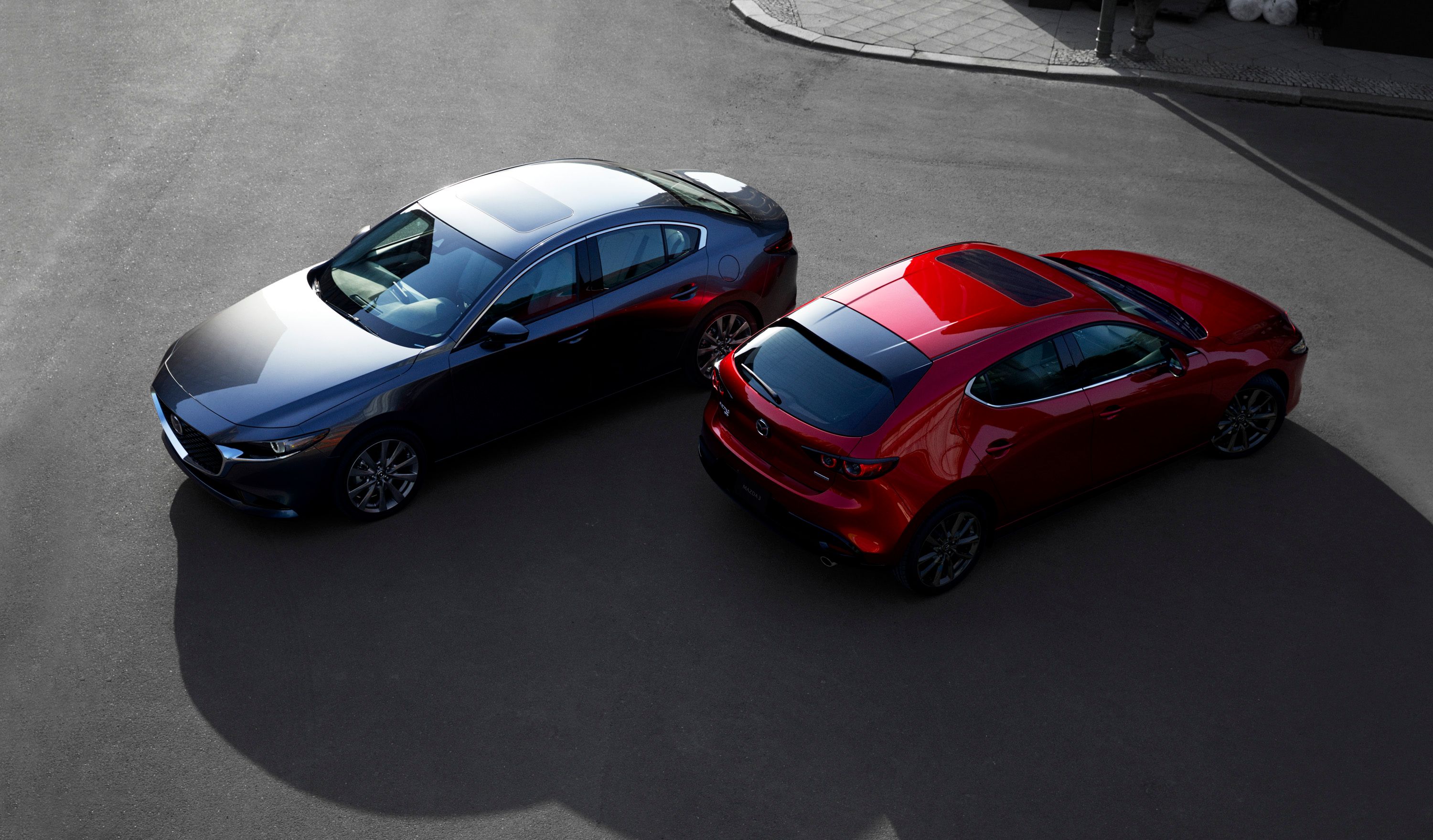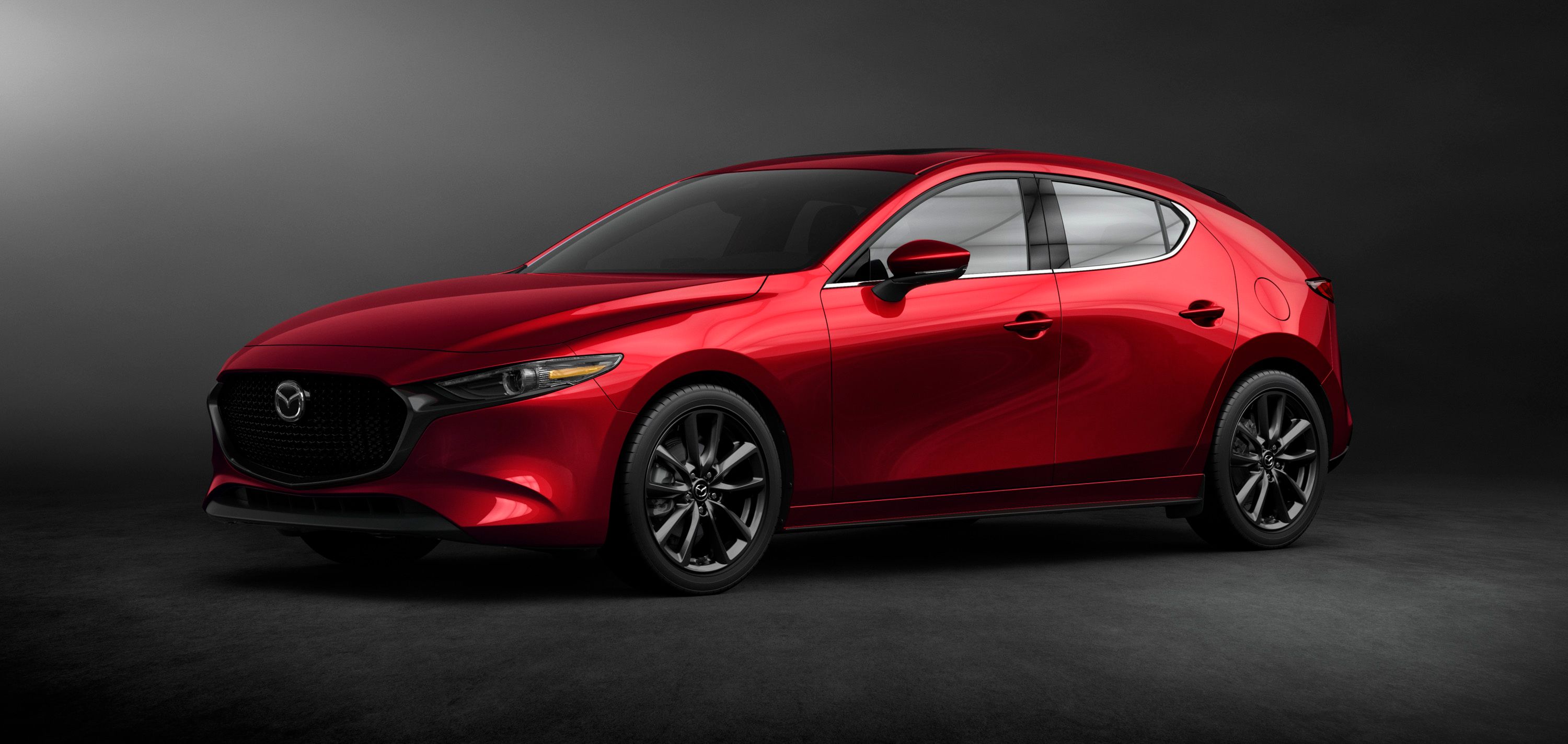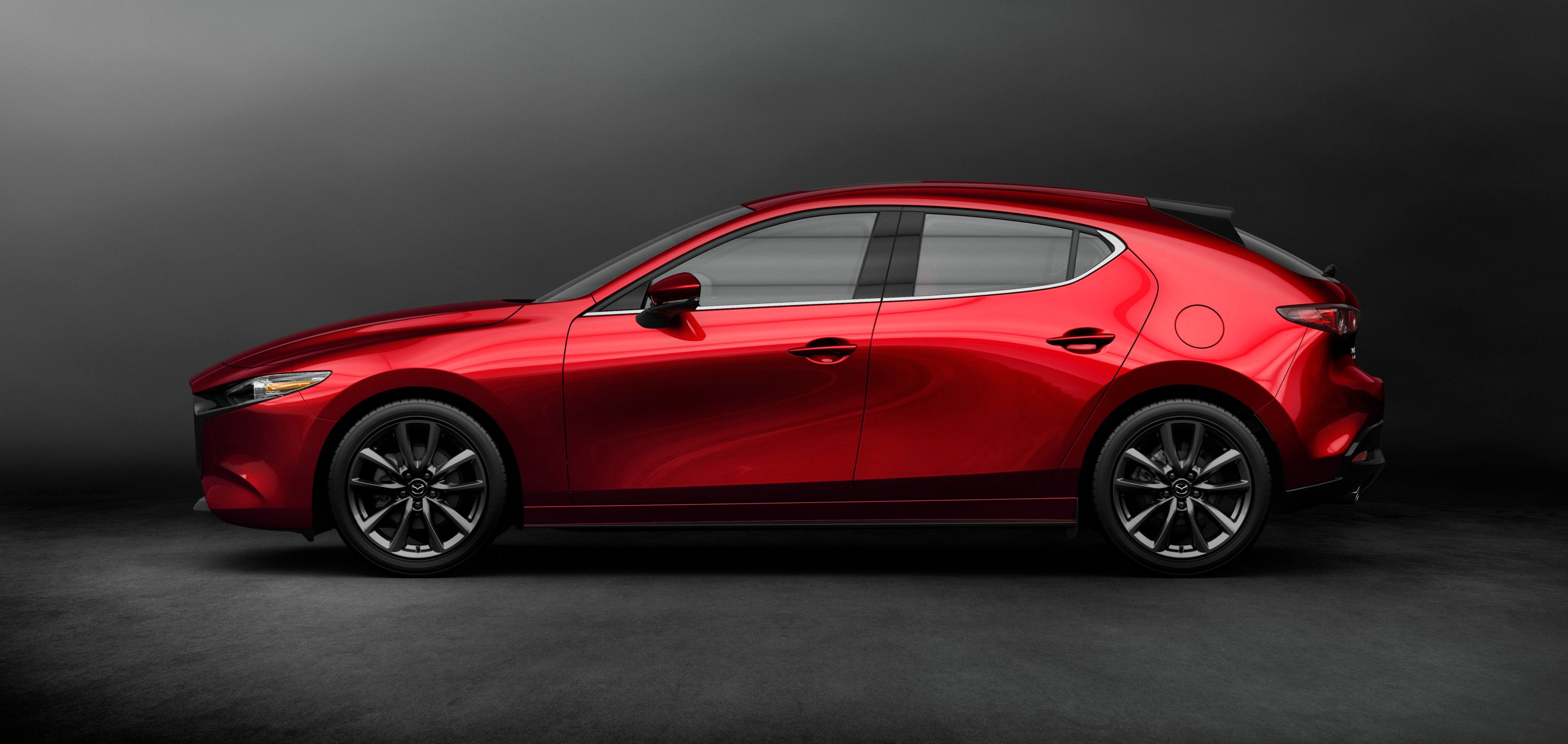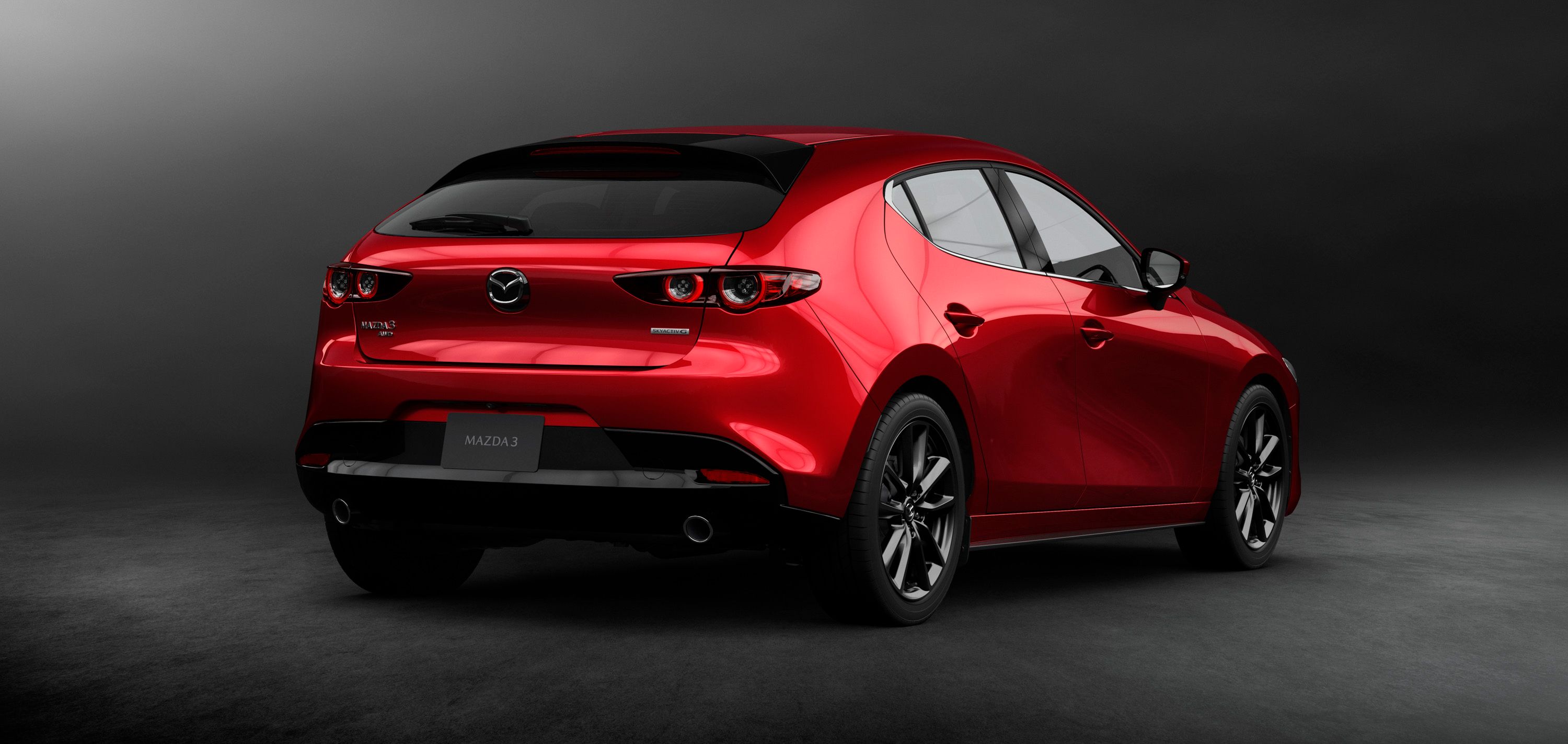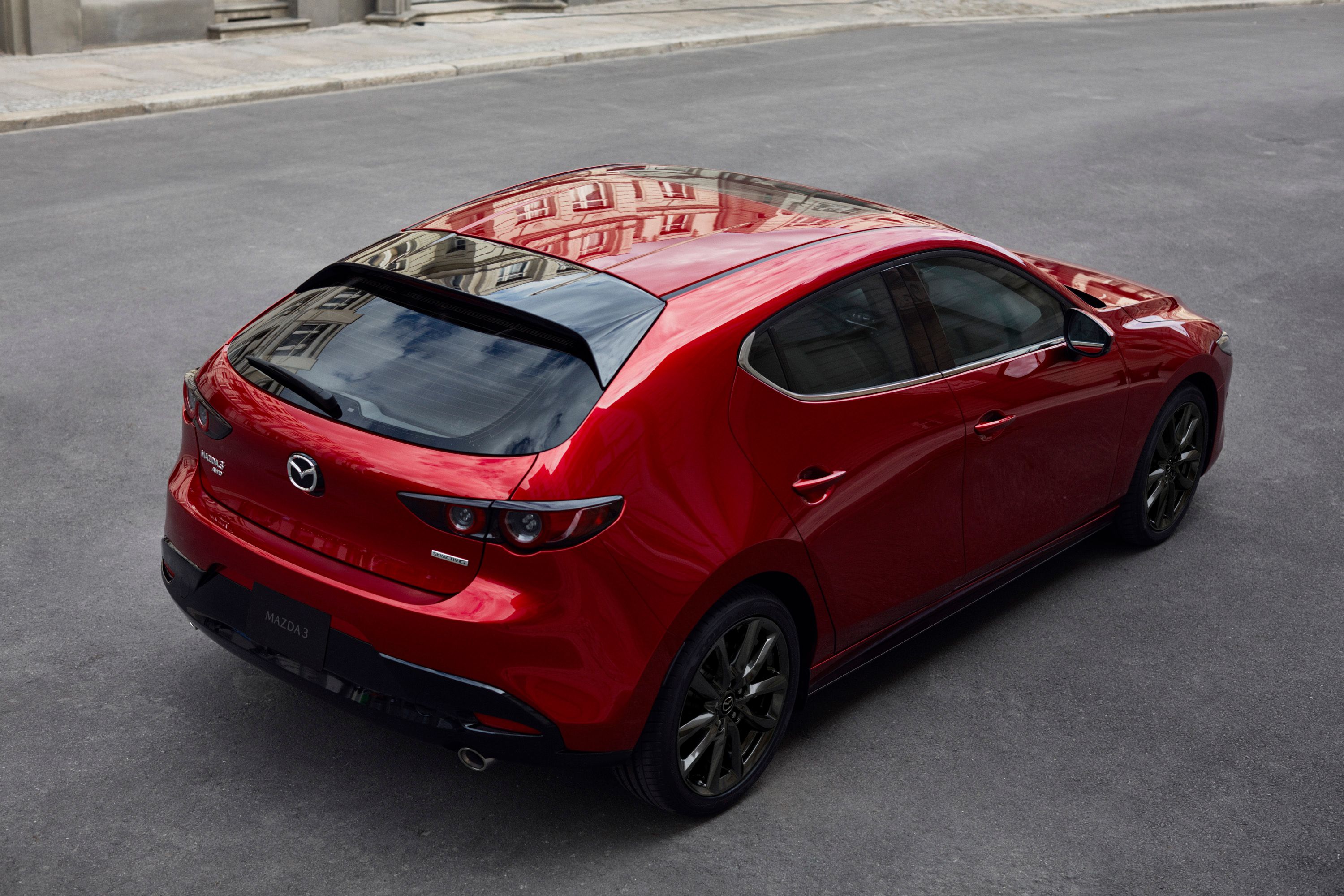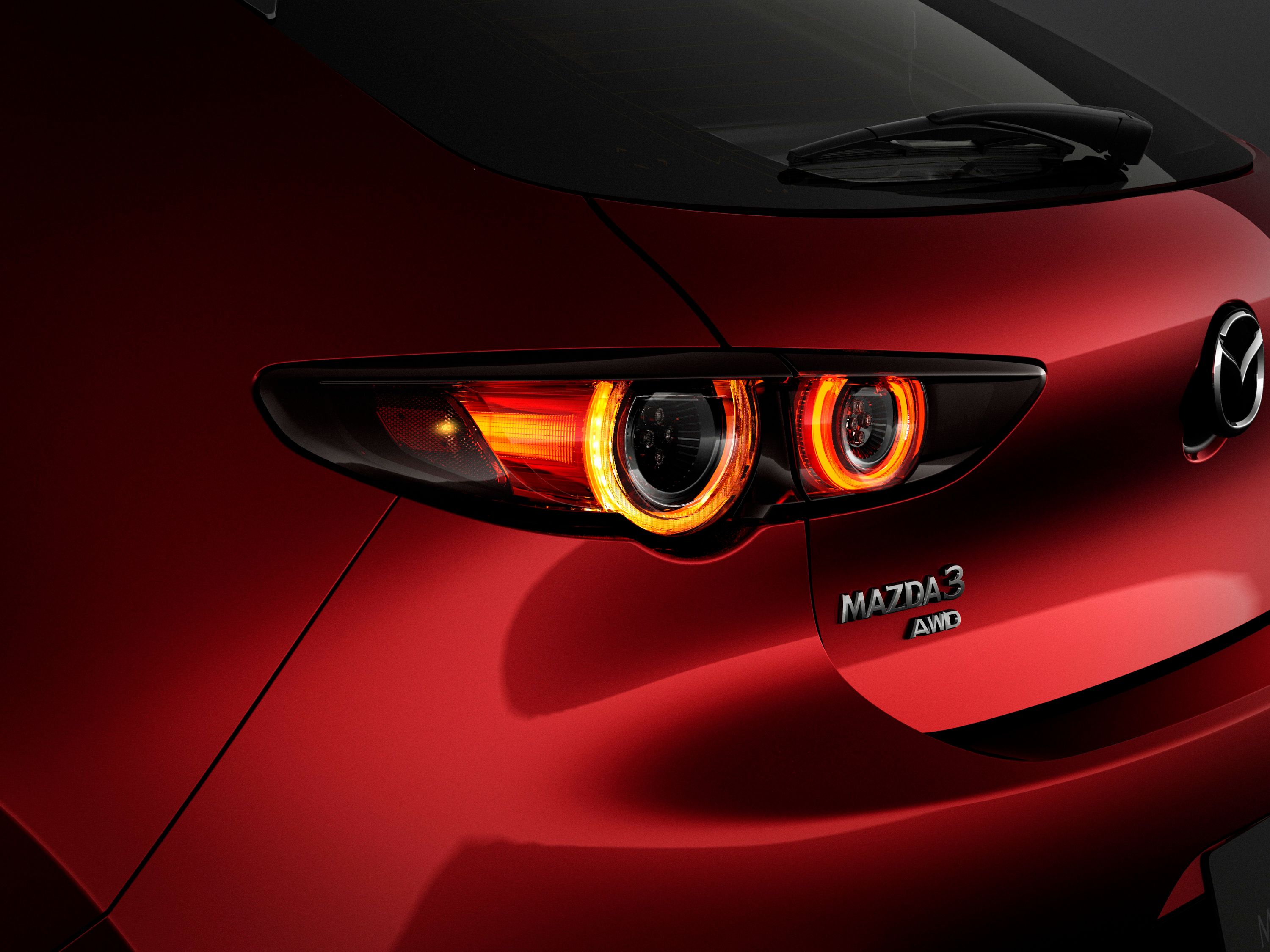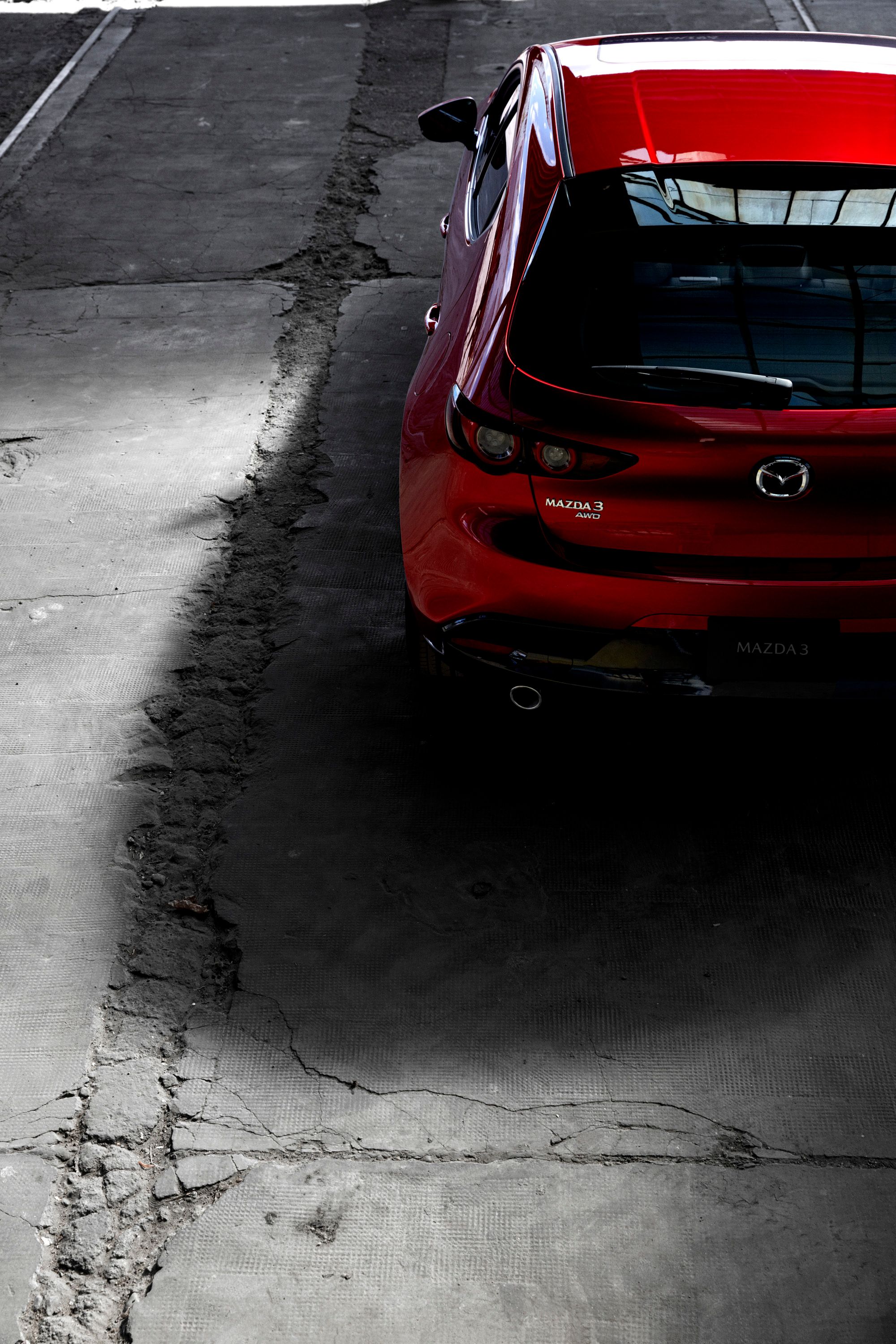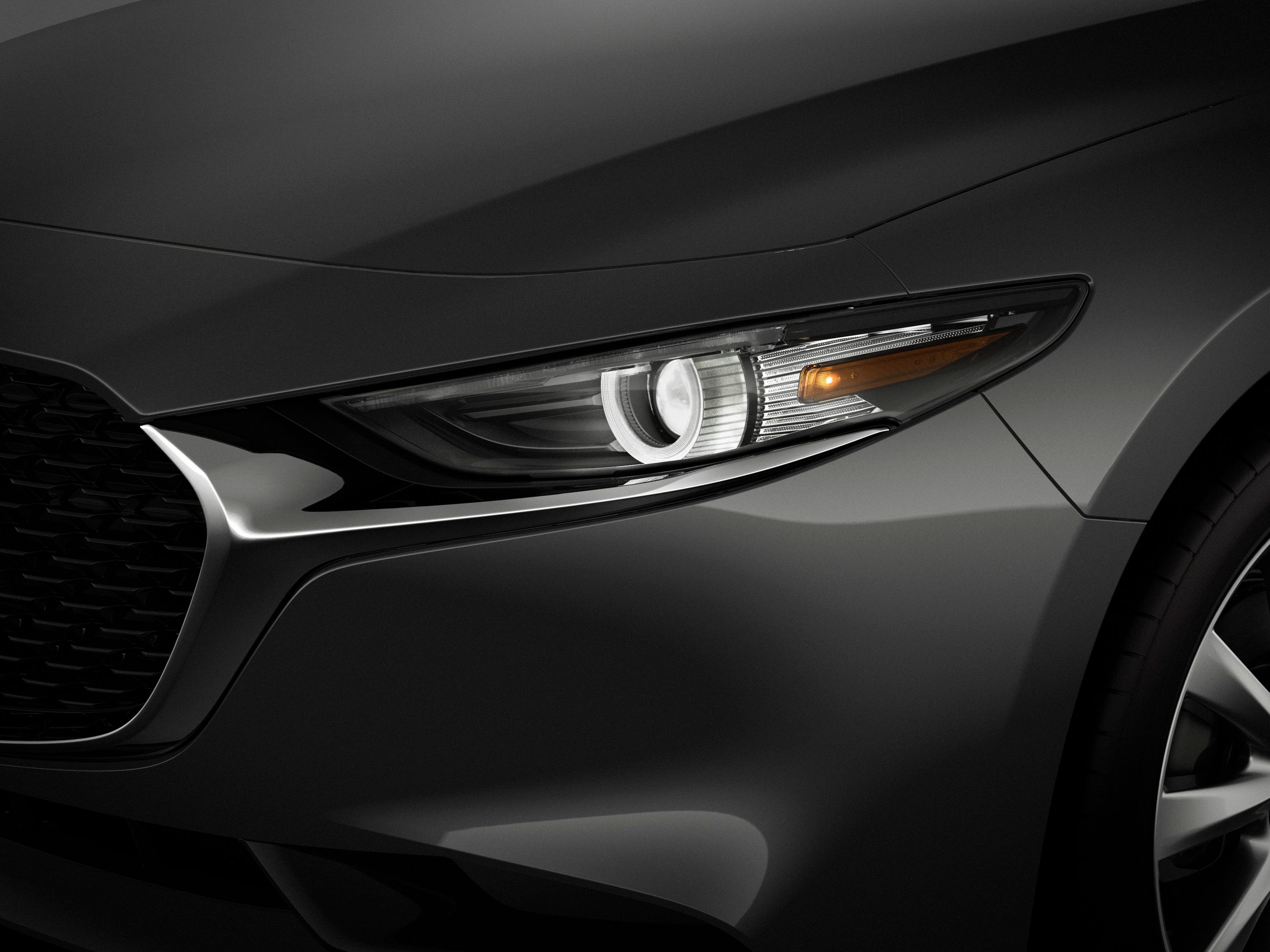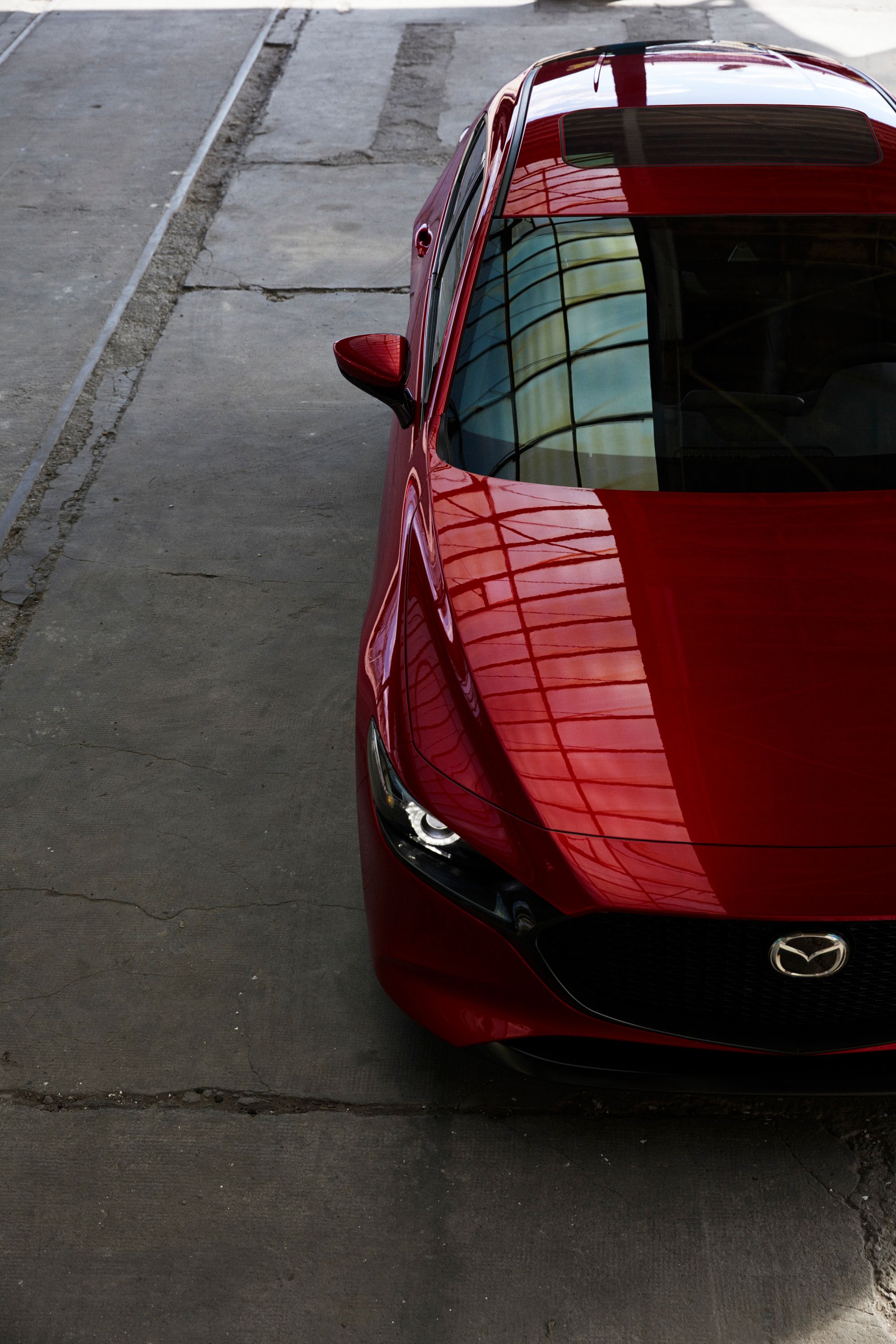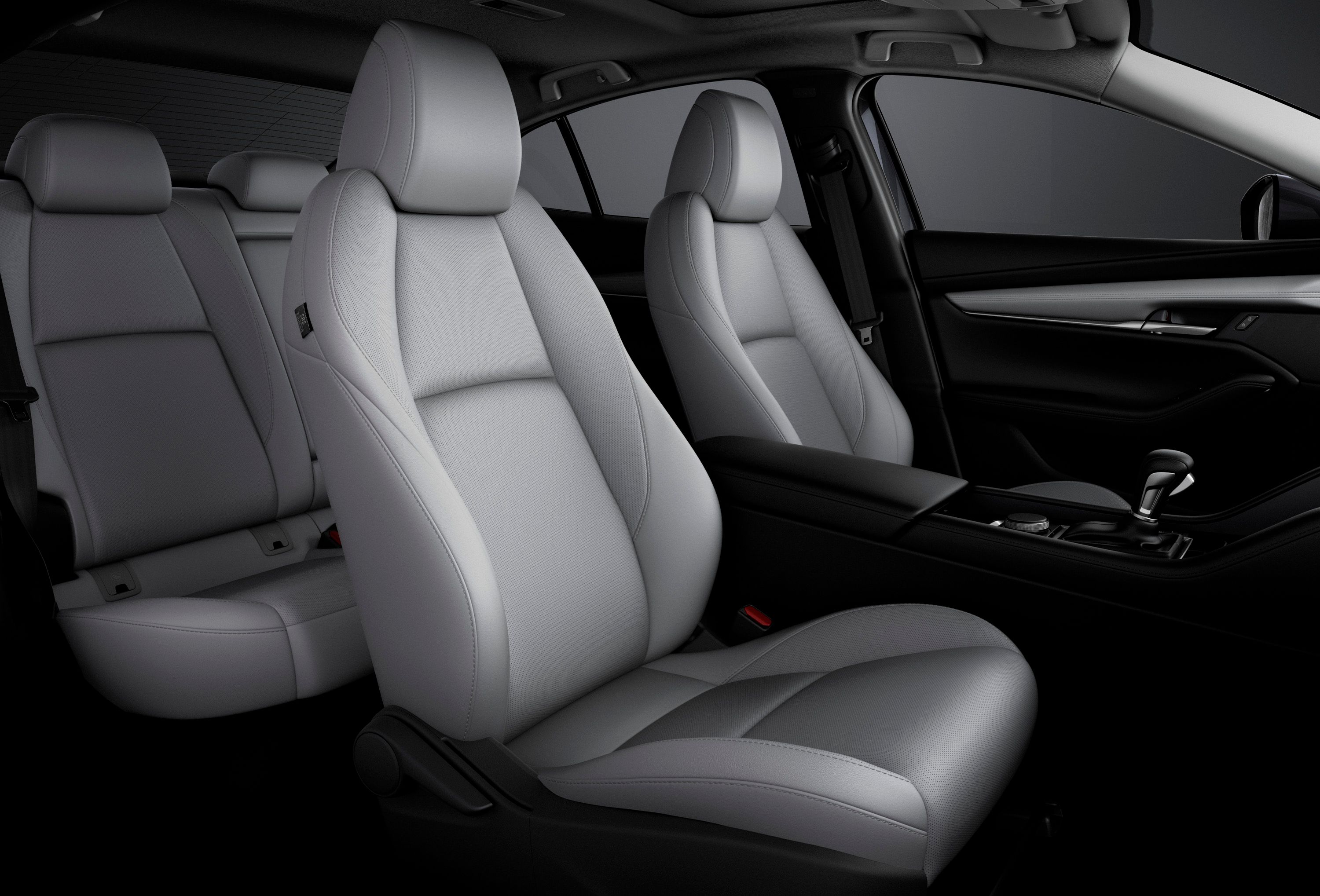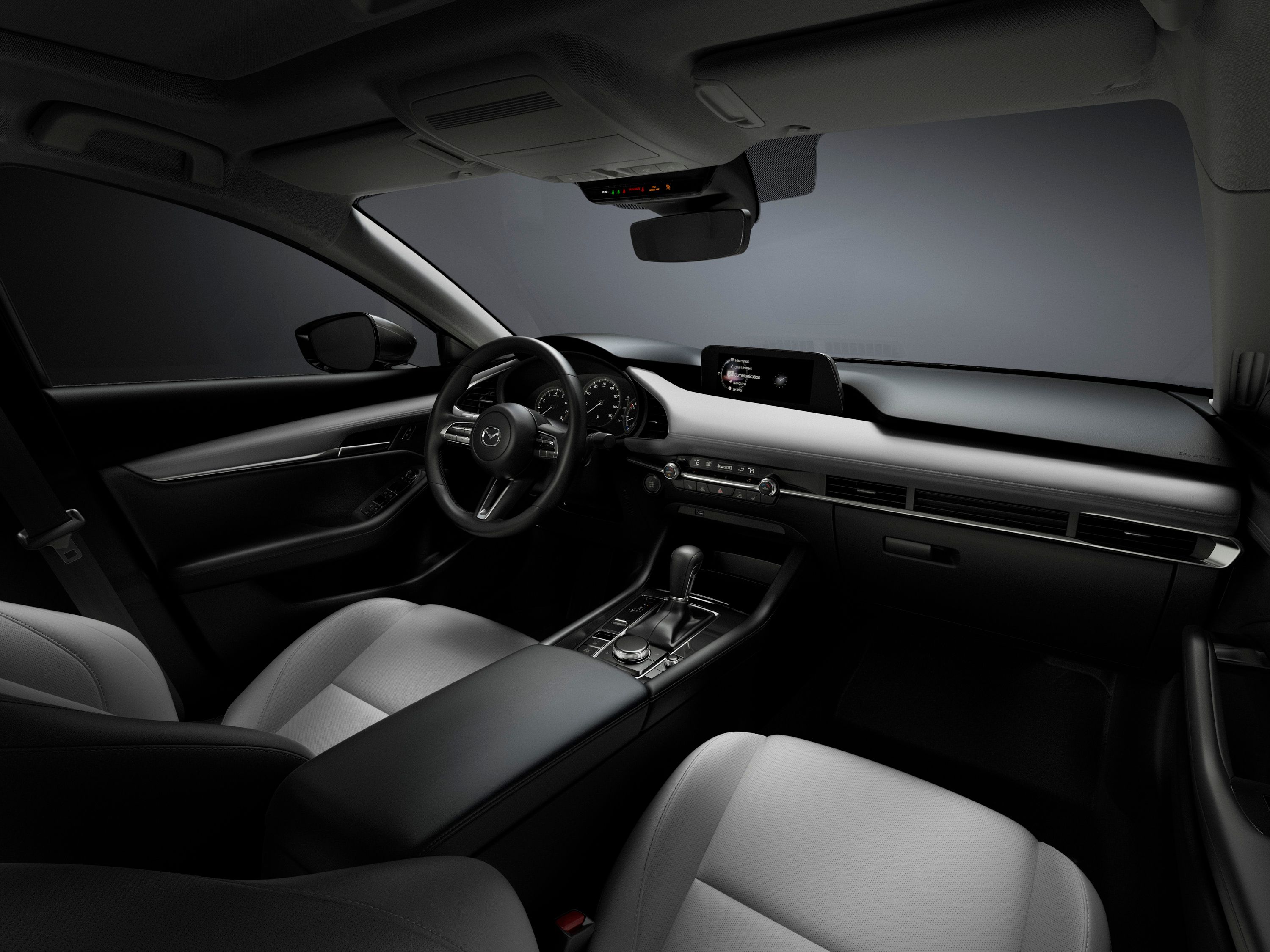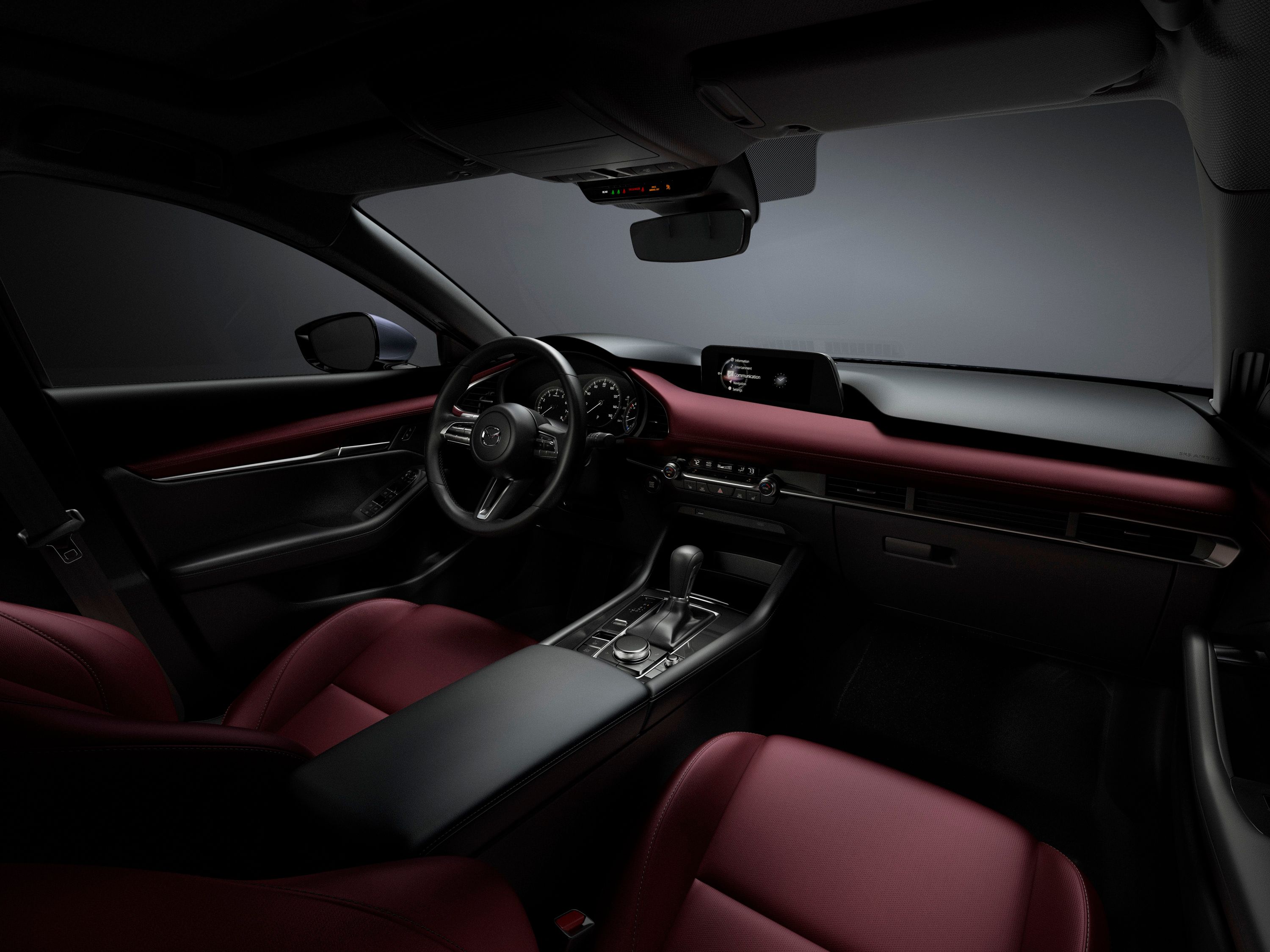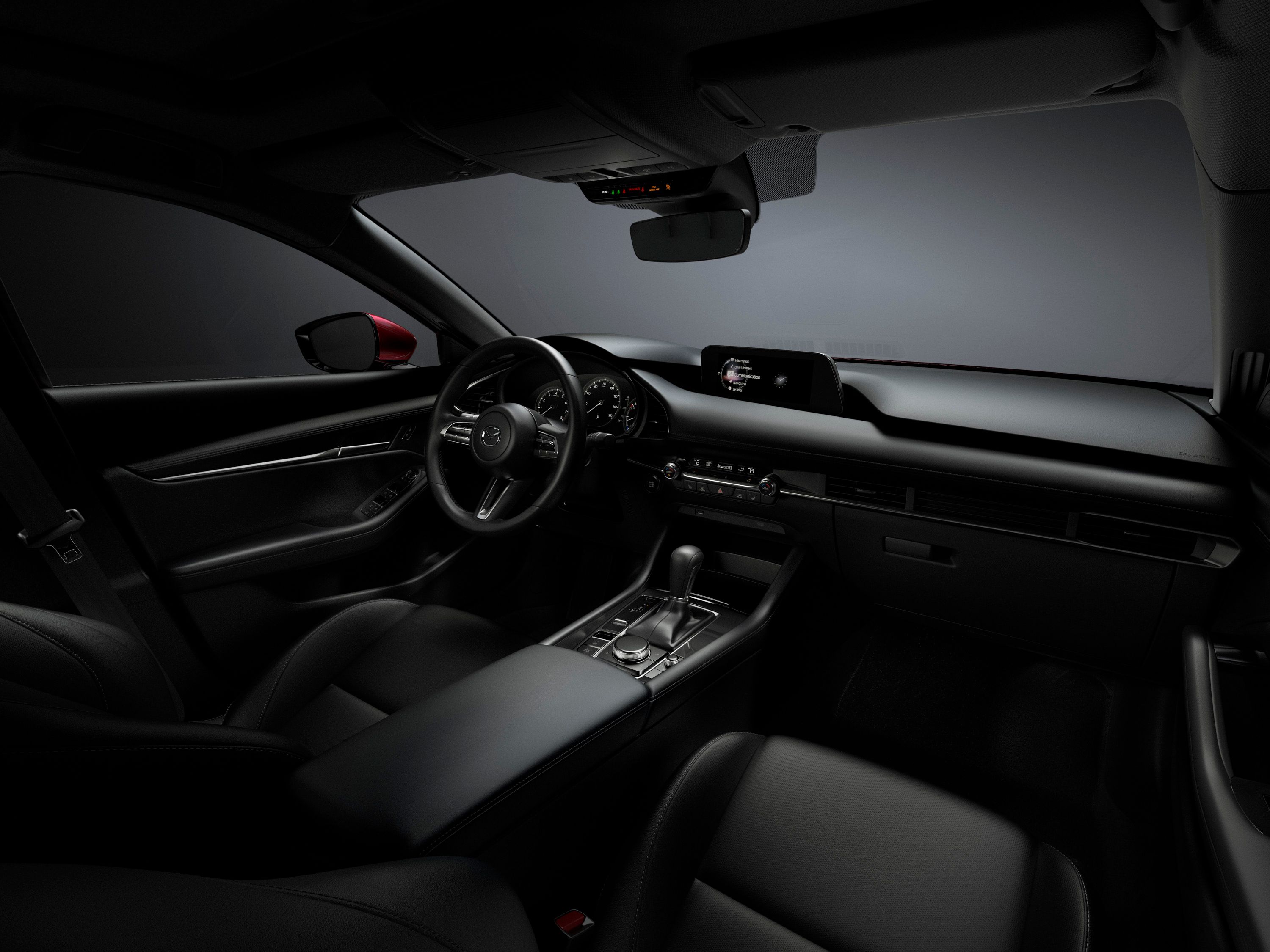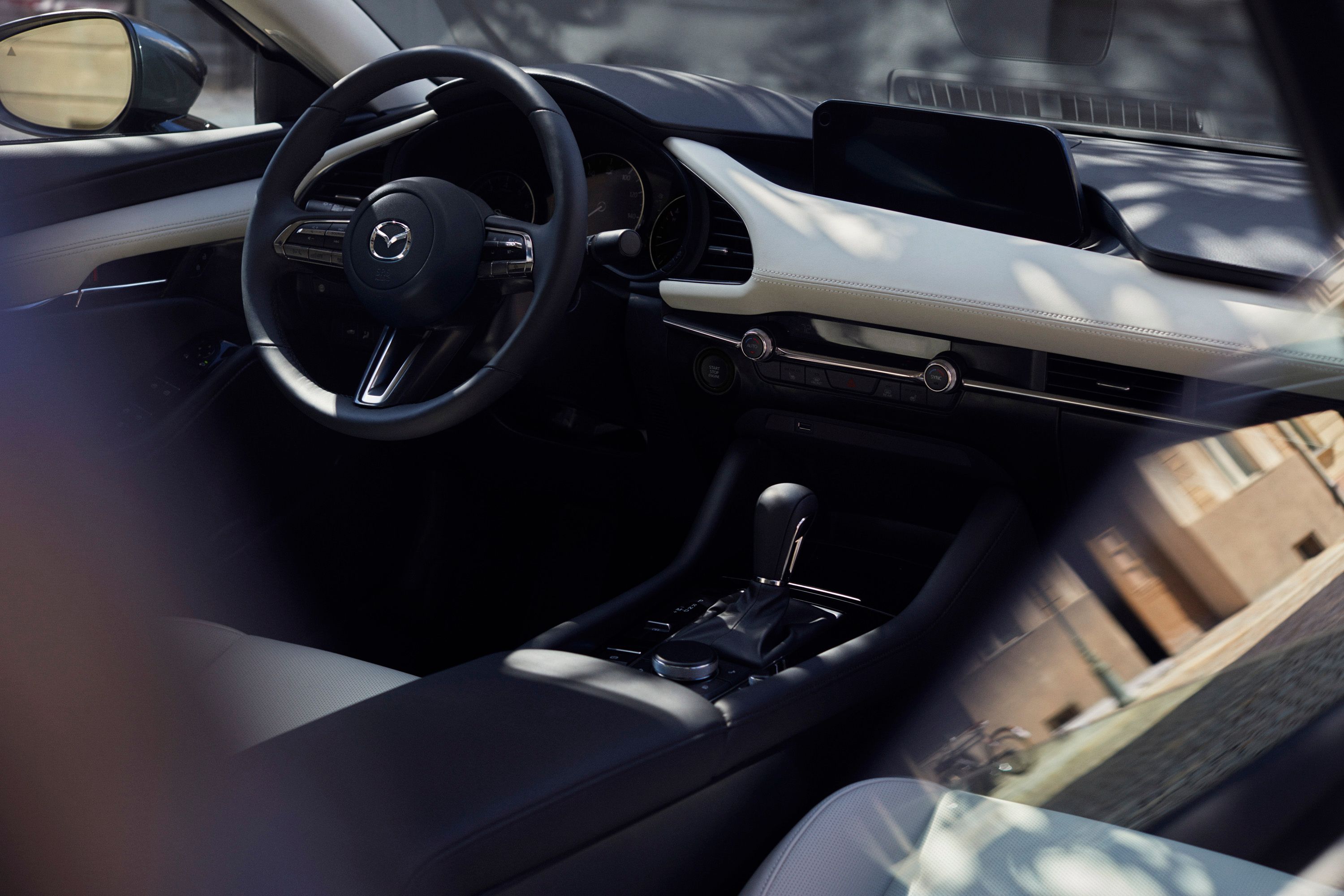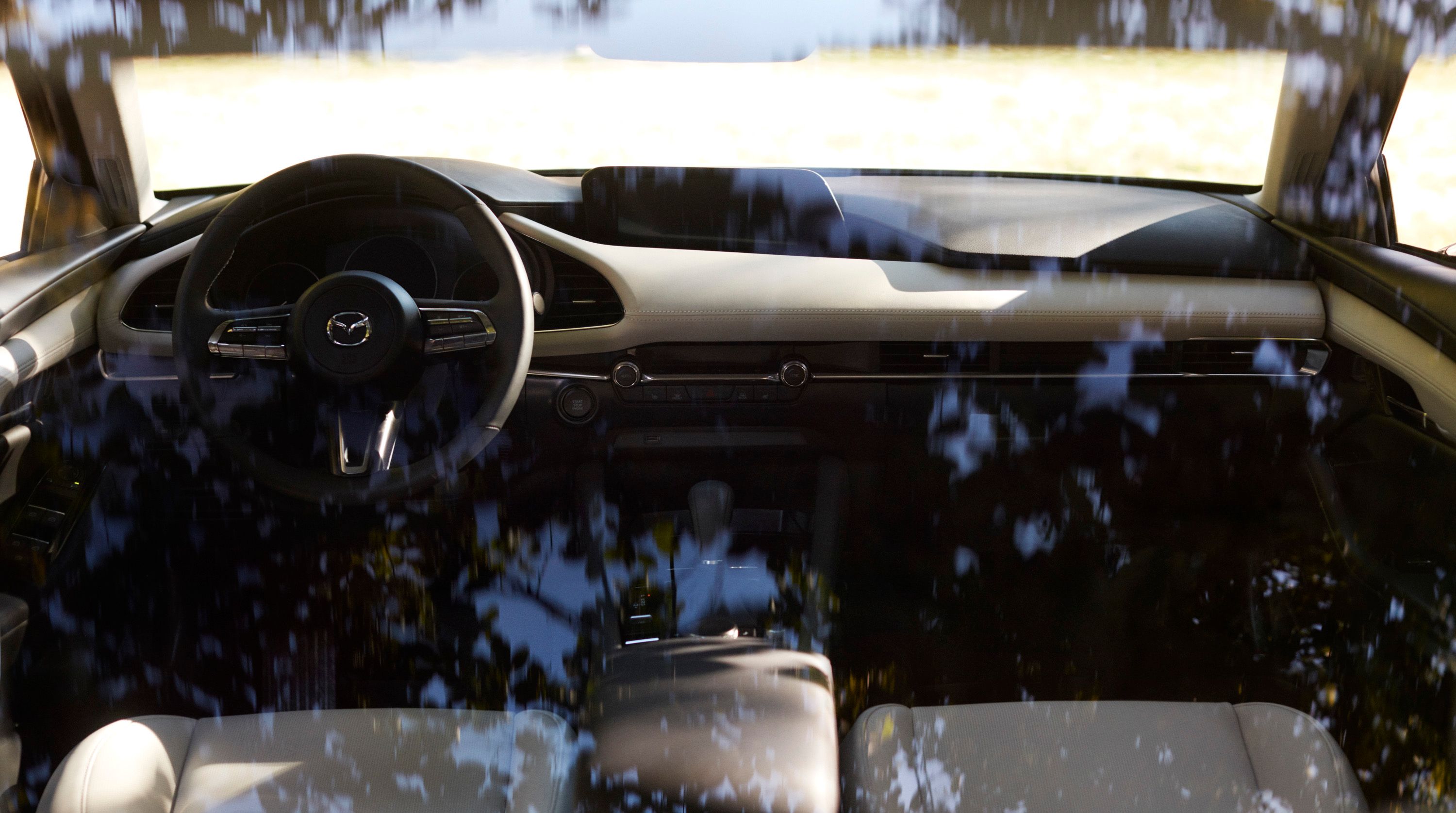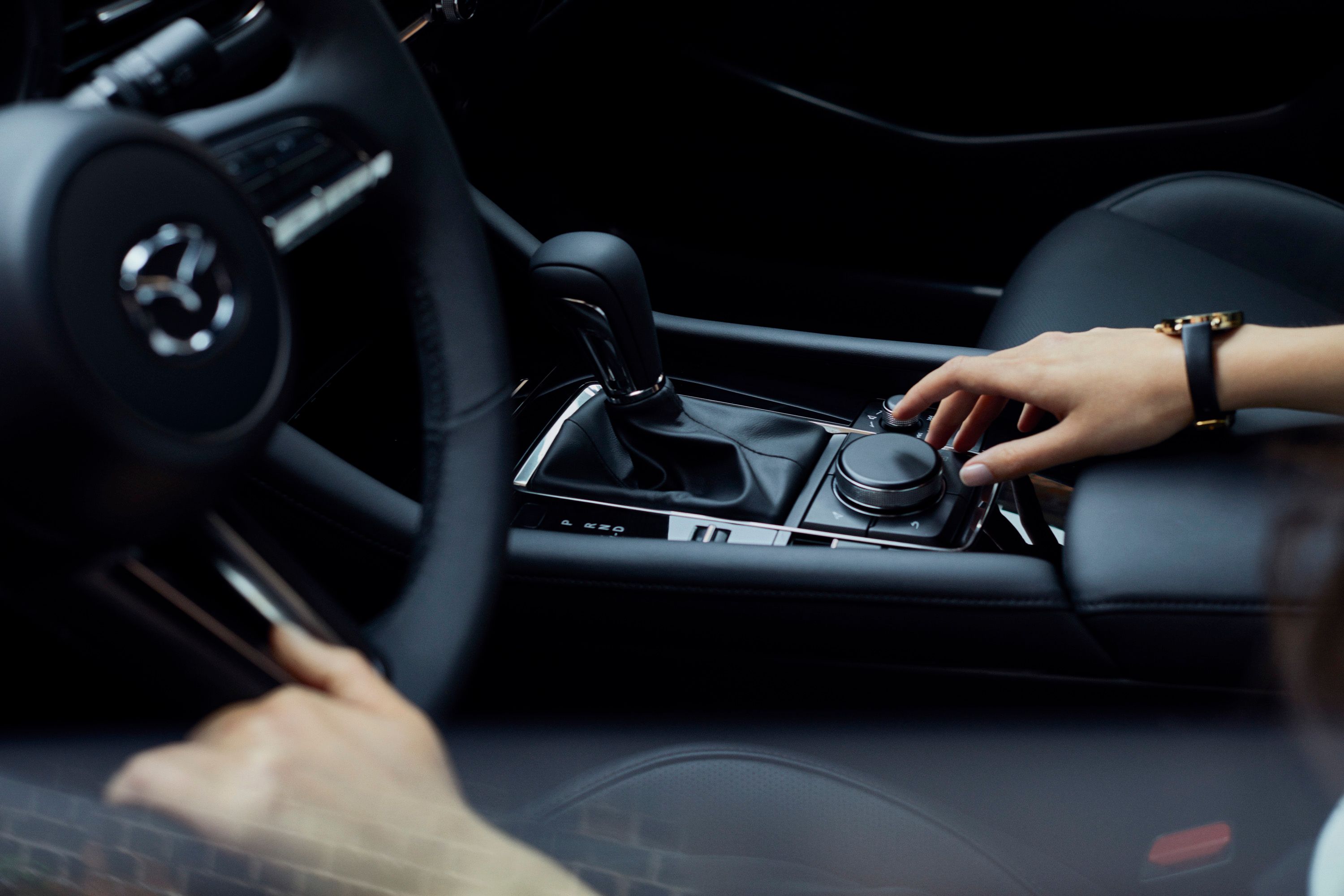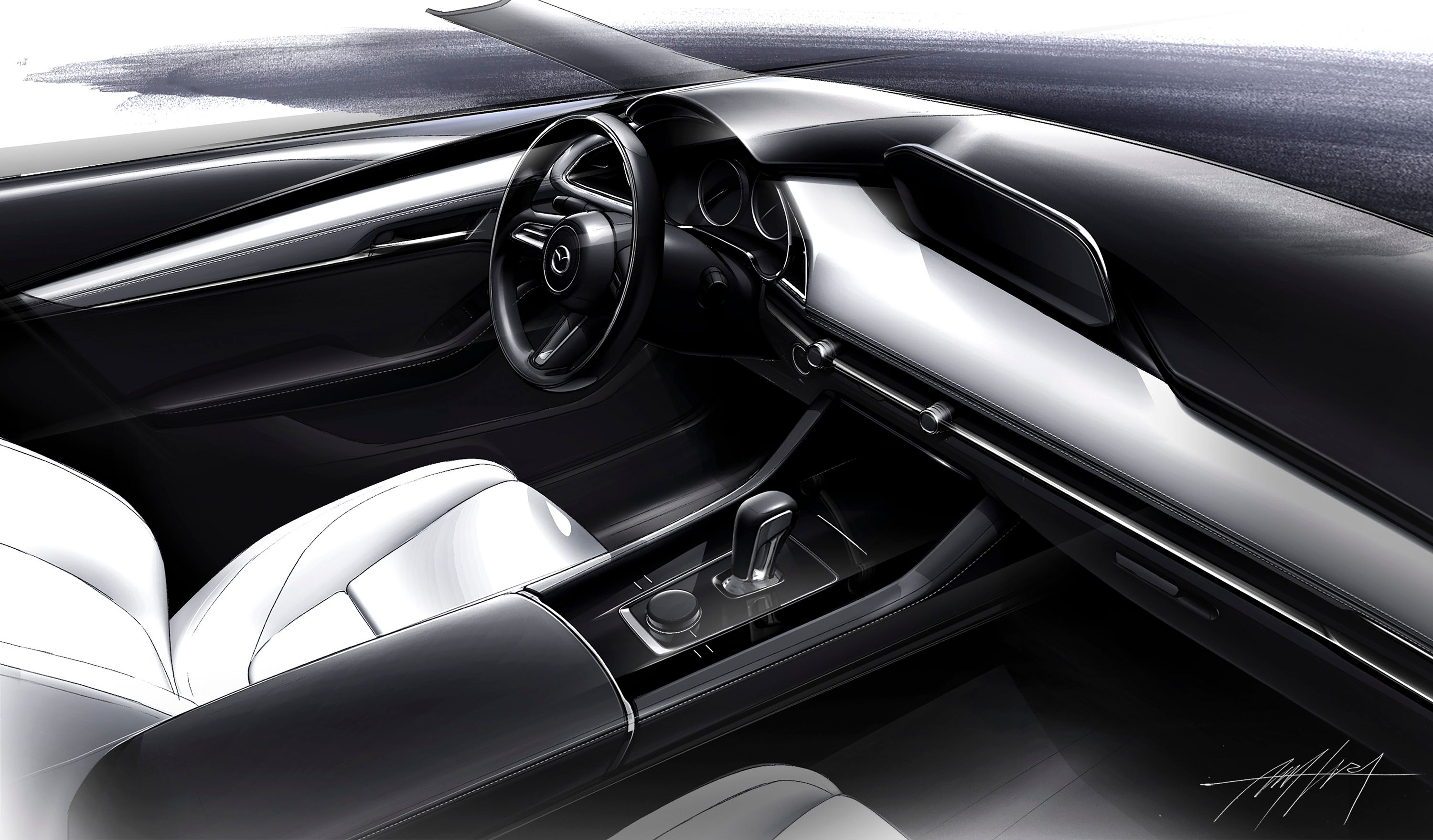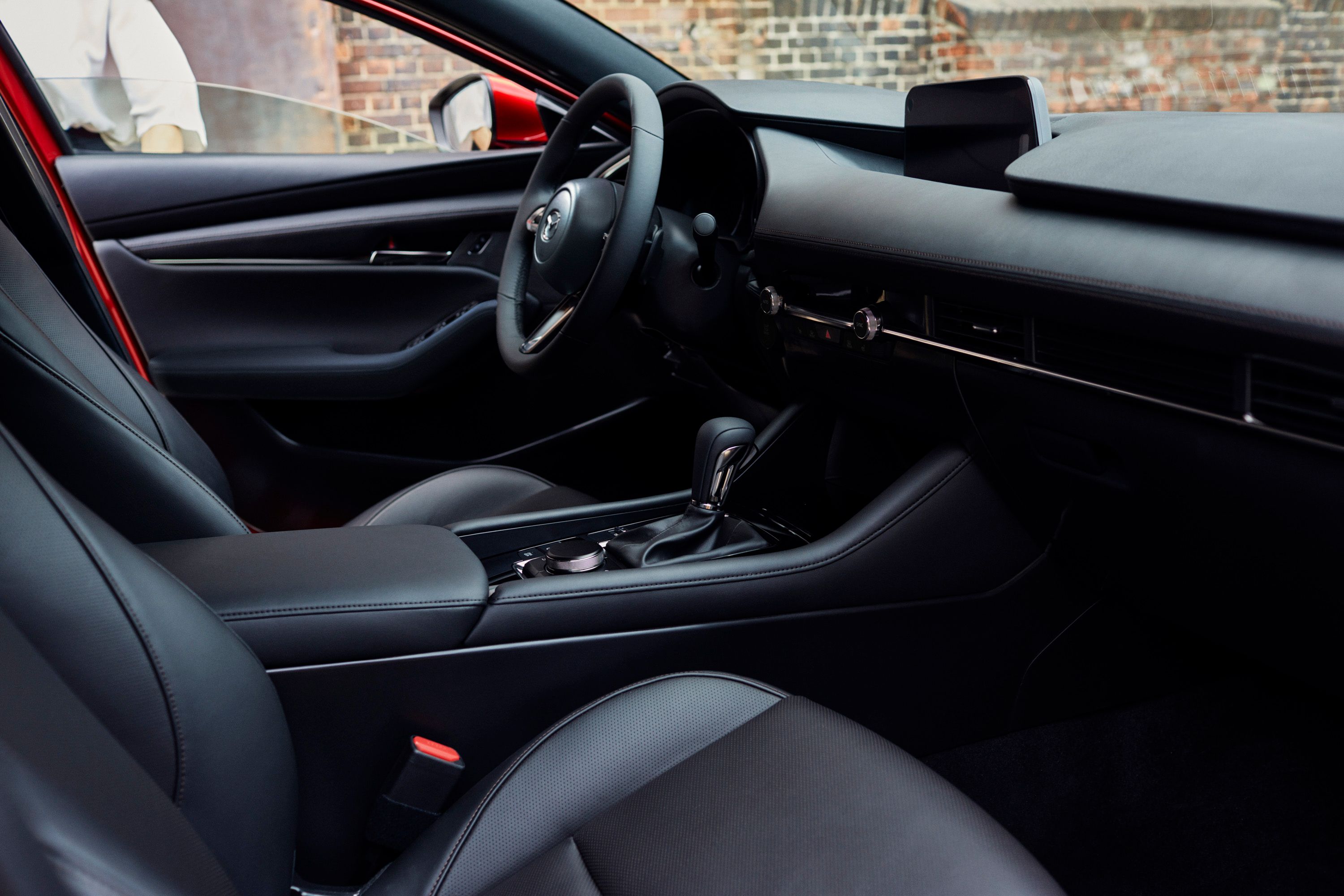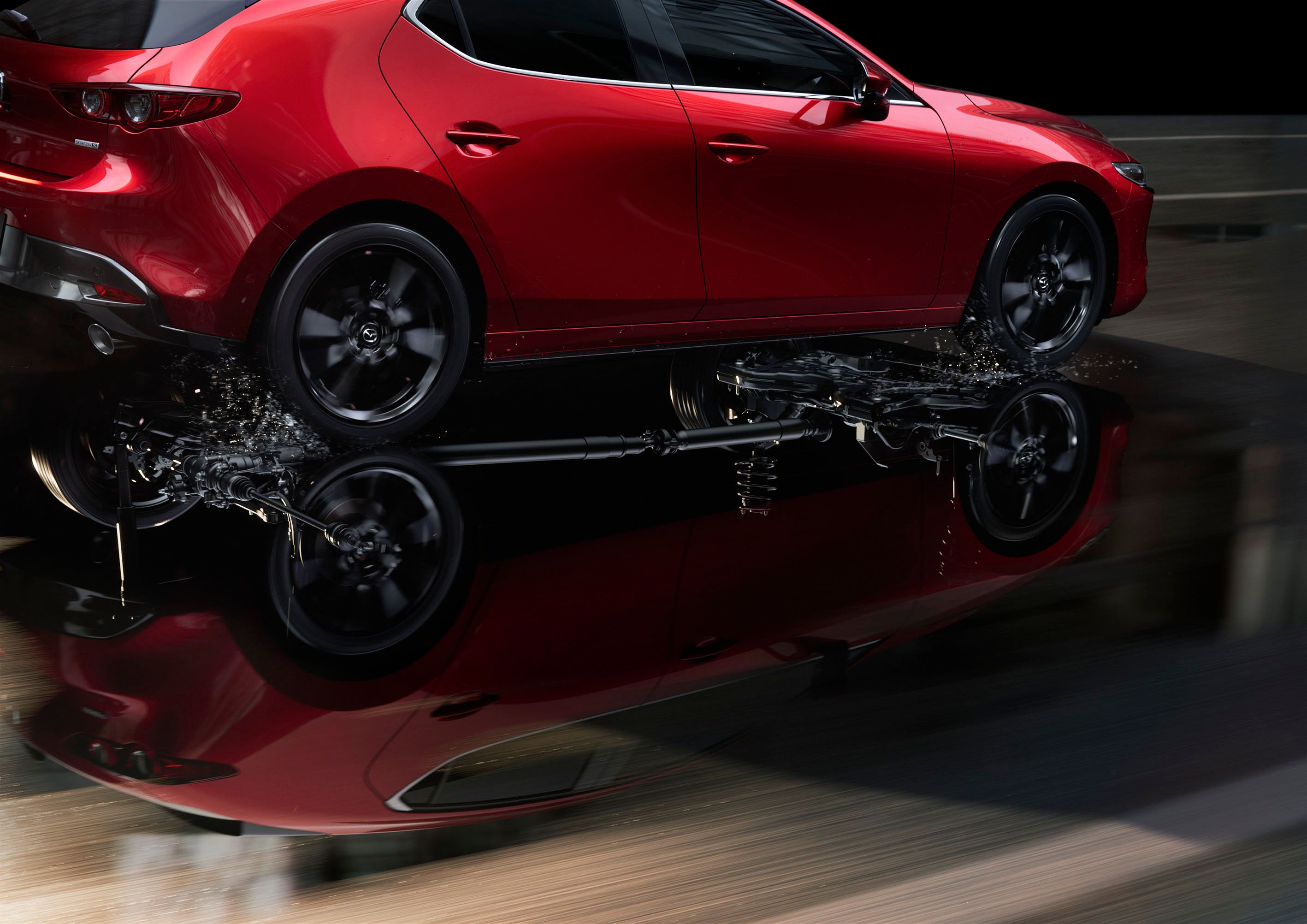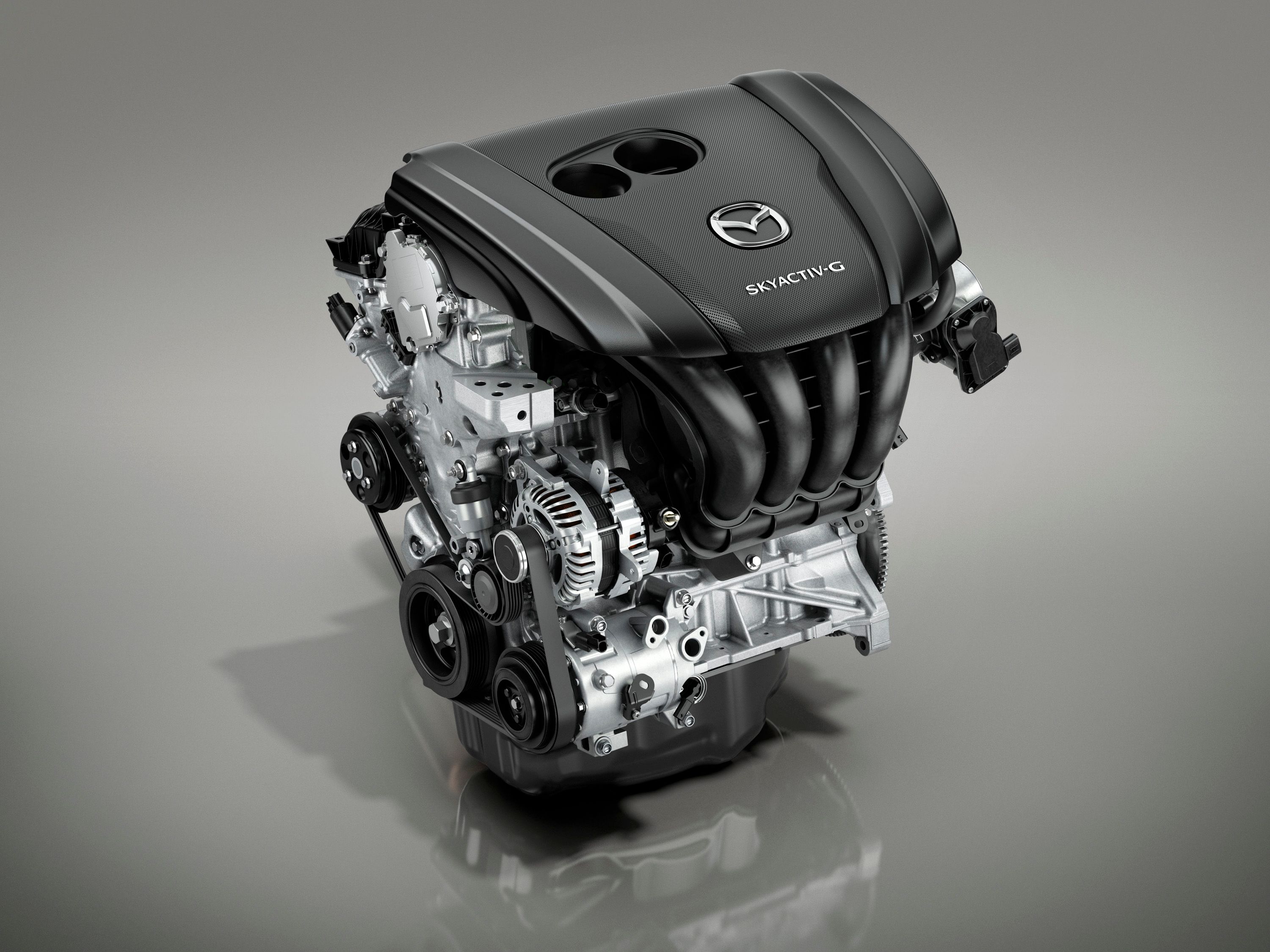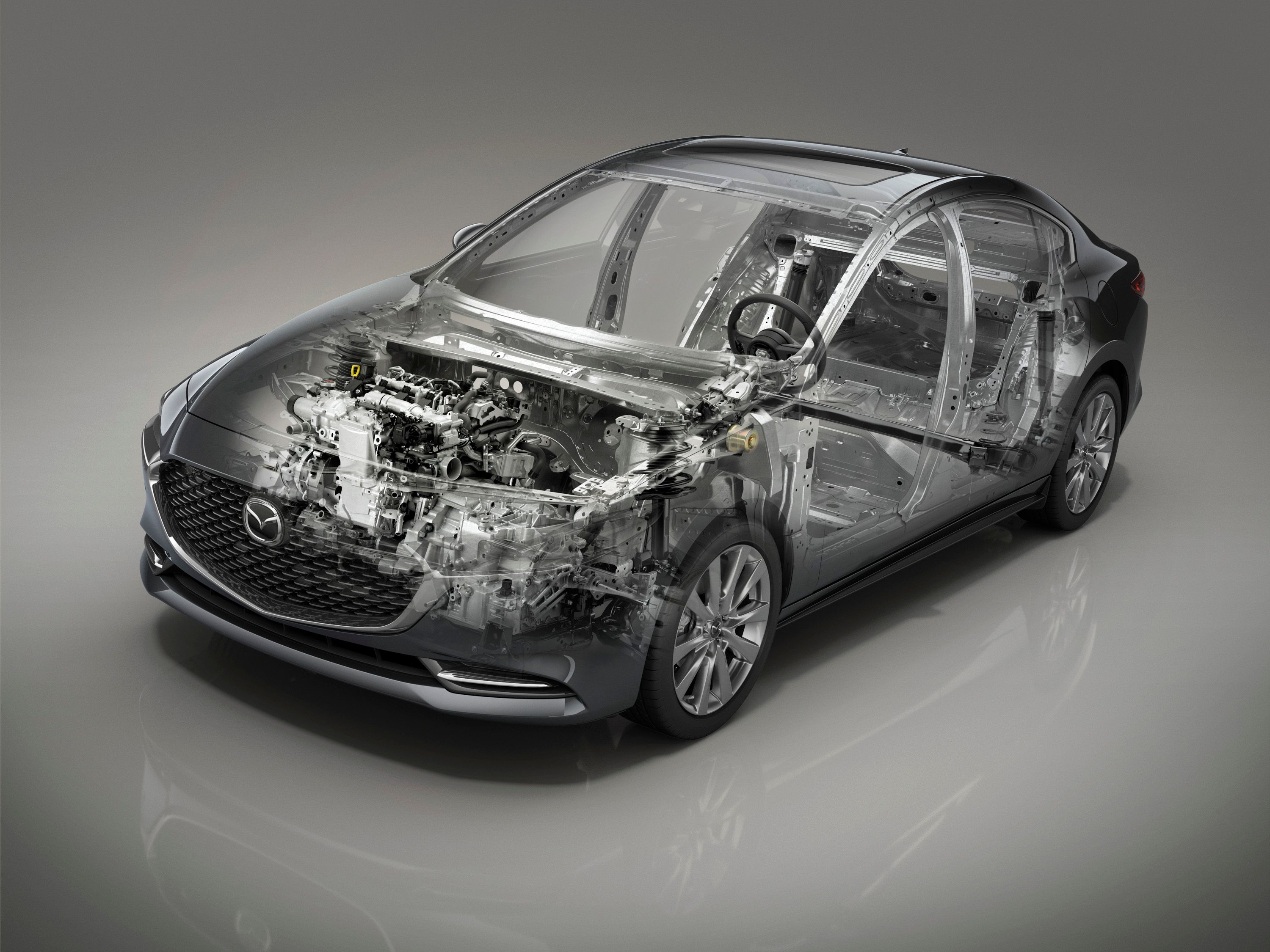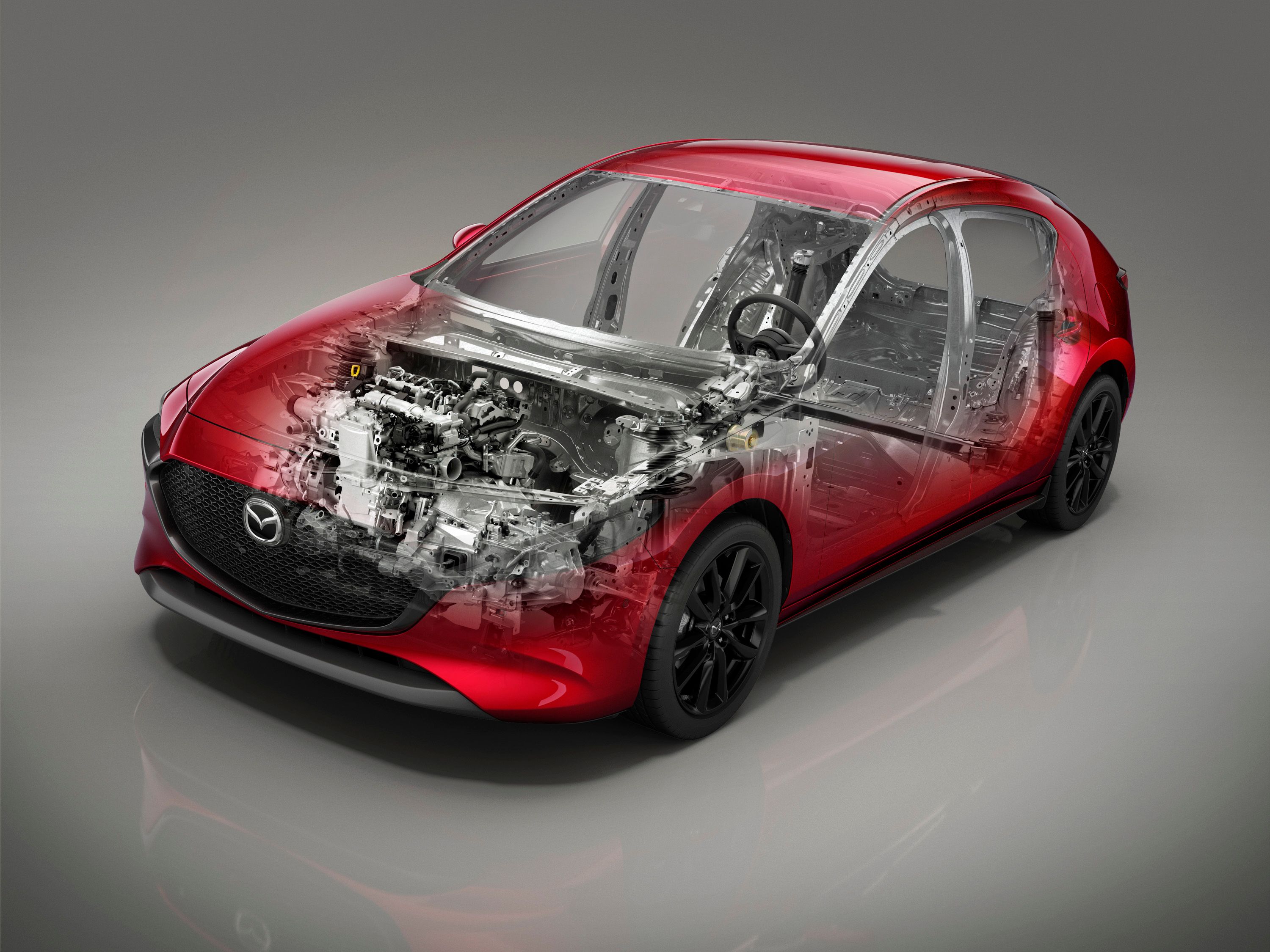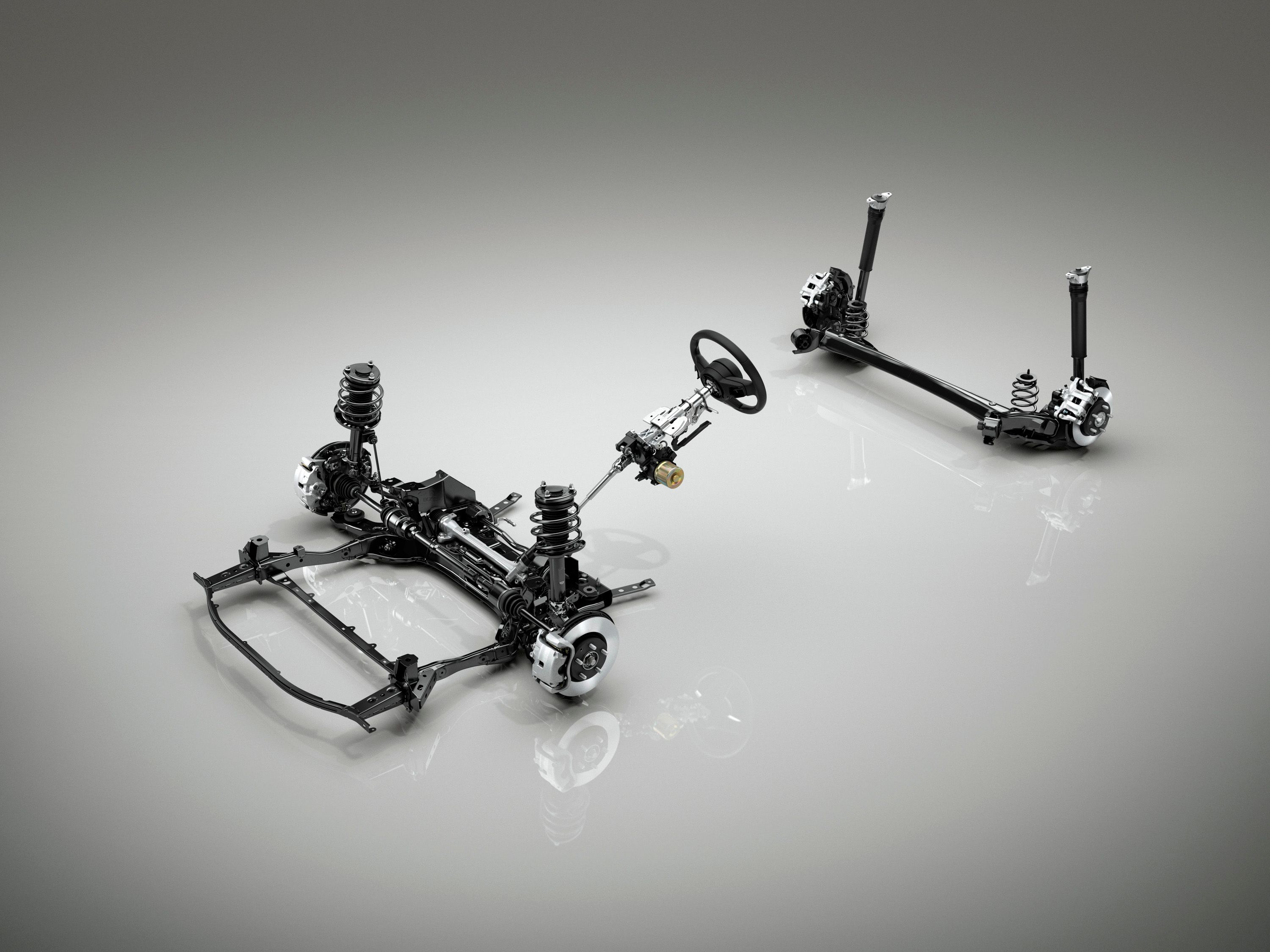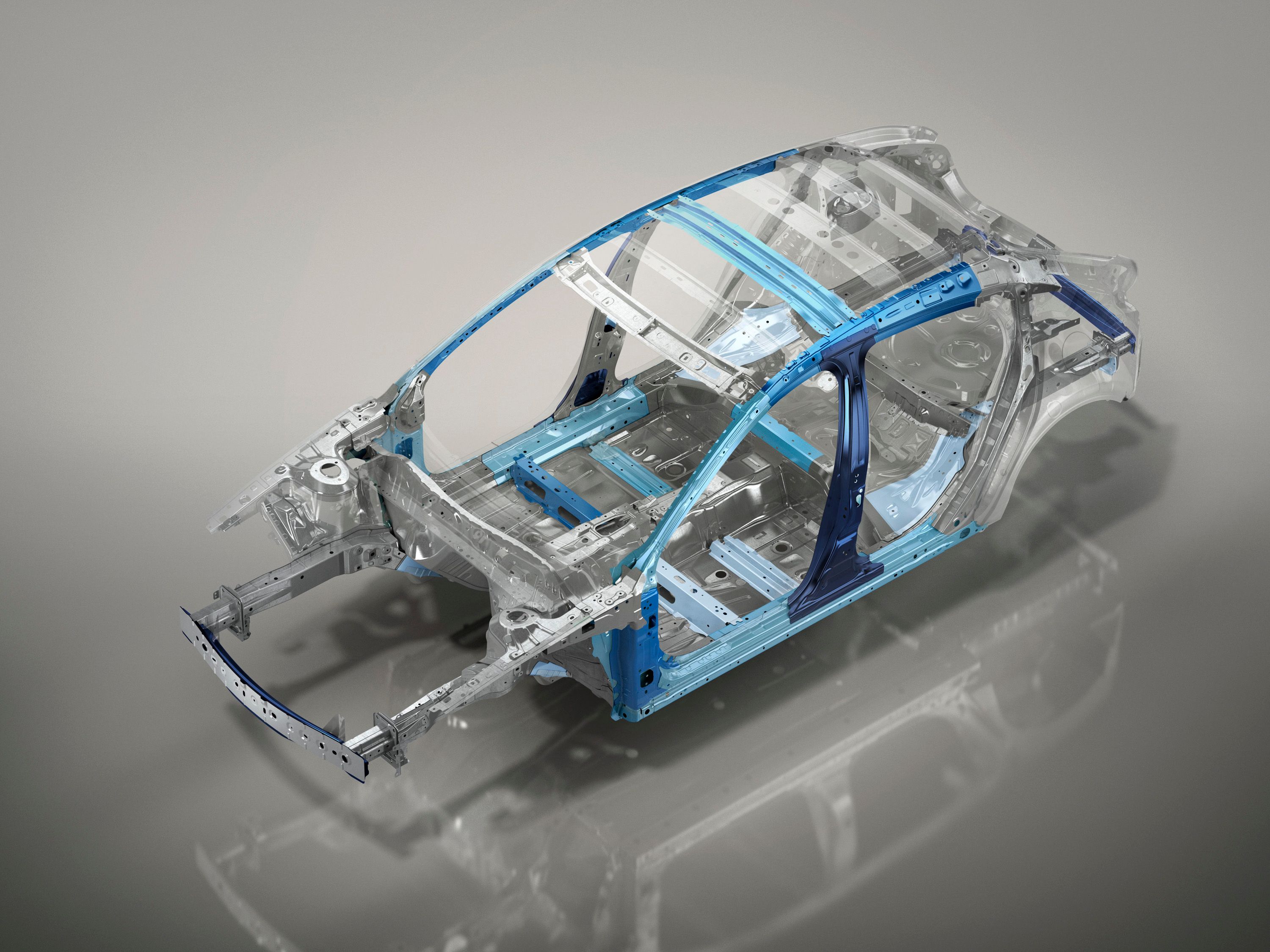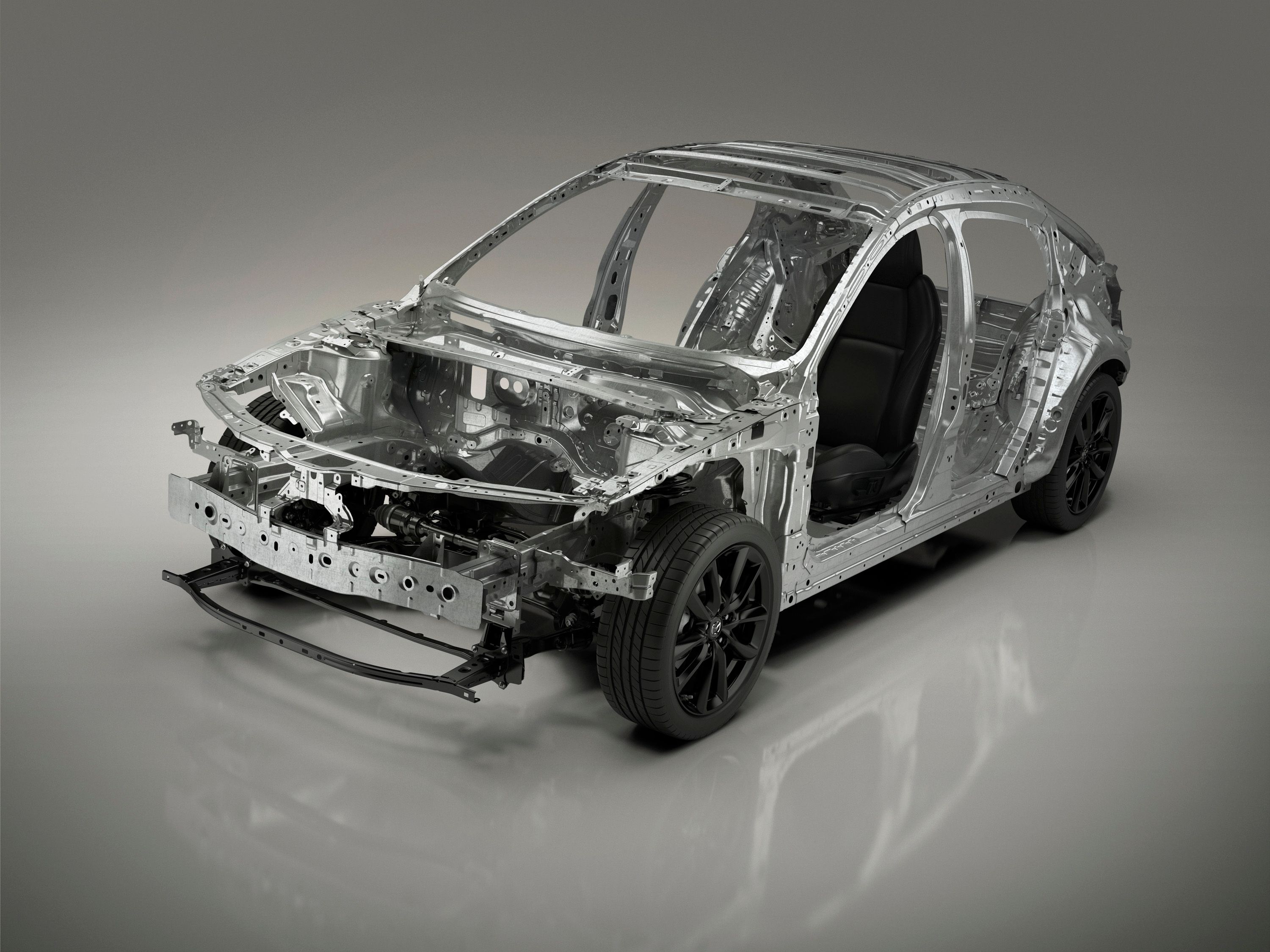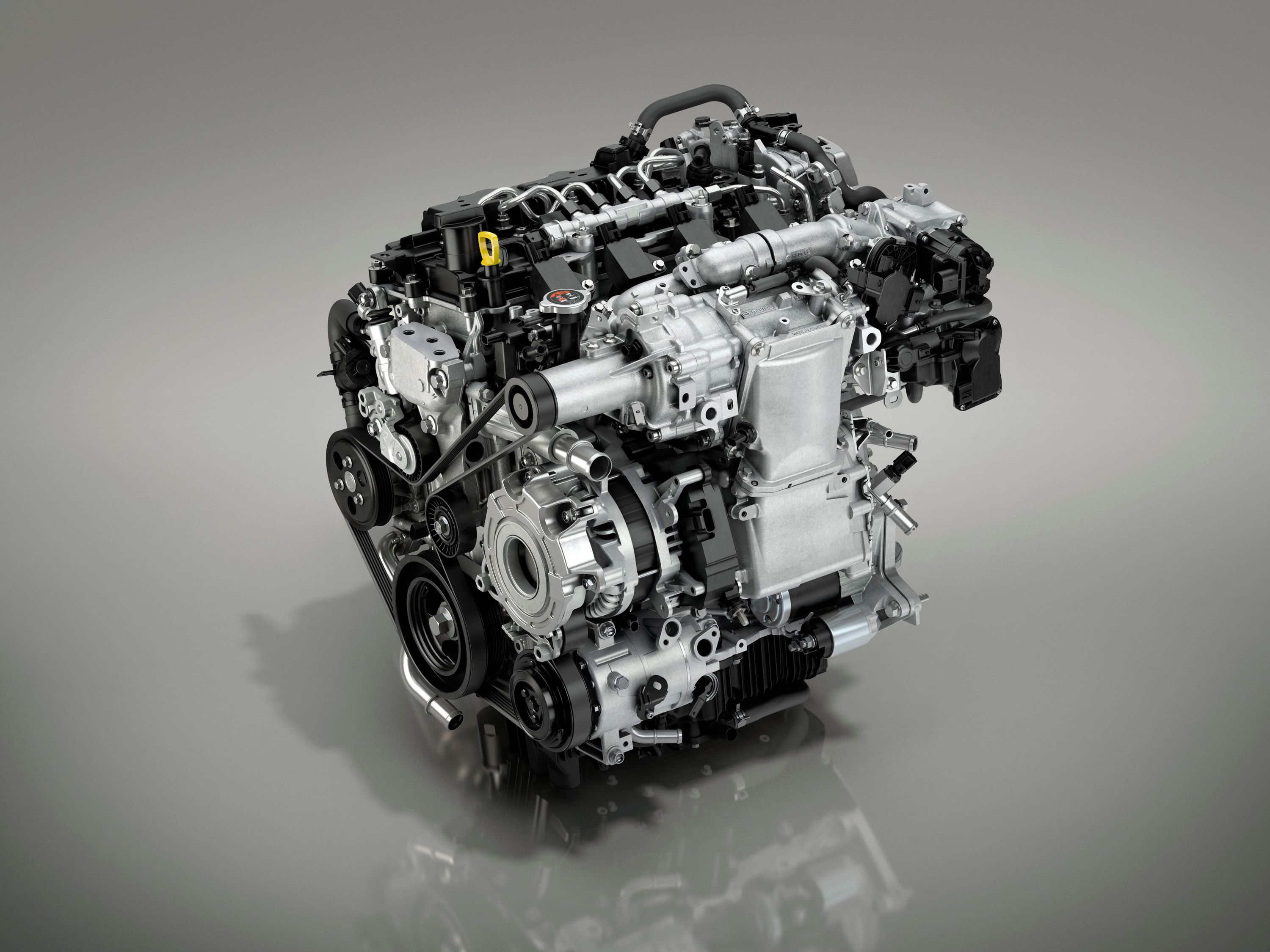The fourth-generation Mazda3 made its global debut at the 2018 Los Angeles Auto Show. The hatchback replaces a six-year-old third-gen model that has been highly successful and established the nameplate as a strong competitor in the compact market. The new Mazda3 is heavily based on the Kai concept on the outside and features a more upscale interior plus an innovative engine.
Part of Mazda's Sustainable Zoom-Zoom 2030 long-term strategy, the new Mazda3 debuts the company's most recent interpretation of the Kodo design language. It also pushed the hatchback higher on the premium ladder and a five-engine lineup. On top of the usual gasoline and diesel SkyActiv units, the Mazda3 debuts the new SkyActiv-X, the first commercial gasoline engine with Spark Controlled Compression Ignition technology. The hatchback also features an all-wheel-drive system for the first time.
2019 Mazda 3
- Make: Array
- Model: 2019 Mazda 3
- [do not use] Vehicle Model: Array
<
2019 Mazda3 Exterior
As expected from all the teasers and spy shots, the new Mazda3 is heavily based on the Kai concept styling-wise. It's the company's first vehicle to adopt a new interpretation of the Kodo design language, which "explores the essence of Japanese aesthetics and pursues elegant and sophisticated styling."
In simpler words, the hatchback looks sportier and elegant than before, but it's also a bit more exotic to look at thanks to the many cues it borrows from the Kai show car.
Up front, the Mazda3 remains very familiar. Although the headlamps are thinner and more aggressive, they don't stray too far from the previous design. The same goes for the grille, which features a similar chrome frame. Major differences include the honeycomb mesh instead of the usual horizontal slats and the fact that the chrome trim extends under the headlamps.
Down below, Mazda went with the clean bumper seen on the Kai, so there are no side vents as seen on most production models. Instead, there's a wide opening just above a chrome insert that looks like a thick splitter.
Moving onto the sides, the Kai concept's influence becomes even more obvious.
Sure, Mazda didn't retain the flush door handles and the slim side mirrors, a replaced the concept's fancy wheels with more production-friendly rims, but the hatchback still looks unique.
While the front fascia and the profile borrow heavily from the Kai concept, the rear end looks a bit different. Sure, the proportions are similar, but Mazda went with simpler taillights that remind of the outgoing model. They sport the same two-piece layout that extends on the tailgate, but borrow the two round LED lights from the Kai.
The spoiler atop the tailgate is bigger and sportier on this model, while the window extends lower into the hatch for enhanced rearward visibility. Mazda also repositioned the license plate recess from the tailgate into the bumper. This gives the fascia a cleaner, more modern look.
The Japanese firm also created a special color for the hatchback. Called Polymetal Gray. it's exclusive to this model, so you can't order it on the sedan. Of course, you can also order the Mazda3 in the already traditional Soul Red paint.
2019 Mazda3 exterior dimensions
|
Wheelbase |
2,725 mm (107.28 inches) |
|
Length |
4,459 mm (175.55 inches) |
|
Width |
1,797 mm (70.74 inches) |
|
Height |
1,440 mm (56.69 inches) |
2019 Mazda3 Interior
The outgoing Mazda3 has a nice interior with a wraparound dashboard and surfaces that look decent for the price. However, it quickly became dated as the competition adopted larger infotainment displays and, as a result of that, cleaner center stacks. The new design brings the hatchback back into the modern present with a simple and clean design and a techy look. It's basically what customers are looking for nowadays.
The dashboard is flatter than before and features a three-layered design. There's a thin top section that appears to float above the middle part that’s color-matched to the upholstery. Depending on what you pick, it can be red or light gray for a striking contrast with the rest of the dash, or it can remain black for a classy look. Between the second and third layer Mazda sandwiched a thin stripe that incorporates the A/C controls and vents. The notable thing here is that the vents are all positioned on the passenger side of the dashboard, a big departure from the industry standard with them on the center stack.
The infotainment display retains its position atop the center section of the dash, but the unit is wider and sits higher, likely to provide a better view for the driver.
Mazda also reworked the steering wheel and integrated the silver buttons into the side spokes so that they line up with the silver trim on the center stack and dashboard. This provides continuity from one side to the other and gives the cabin an elegant look worthy of a full-size sedan. The gear shifter sits higher and closer to the dashboard now, which makes it easier to reach when driving.
Moving over to upholstery and materials, Mazda is still offering fabric seats in the base model. However, the covers look much better now and they even have contrast stitching. The new Greige fabric combines gray with beige and provides a cool contrast with the rest of the interior, especially since it extends into the door panels and the dashboard.
As mentioned before, the infotainment display is now larger, measuring 8.8 inches. It also has simplified operation and the latest apps, including Apple CarPlay and Android Auto. The hatchback also comes with an eight-speaker audio system as standard and you can upgrade to a 12-speaker Bose system with a pair of satellite speakers in the rear and a subwoofer.
To further enhance comfort, Mazda added a telescopic steering with an additional 10 mm (0.4 inches) of movement at either end, now boasting a range of 70 mm (2.75 inches), and front seat cushion tilt adjustment included as standard equipment.
2019 Mazda3 Drivetrain
The new-generation Mazda3 will feature a total of five different engines, starting with the familiar SkyActiv-G family of gasoline units.
All three engine feature new intake ports and piston shape, split fuel injection, and a coolant control valve to deliver higher levels of dynamic performance and fuel economy.
Power ratings aren't yet available, but it should generate more than the outgoing mill, which is rated at 150 horsepower and 280 pound-feet of twist. In the Mazda6, the unit cranks out 173 horsepower and 310 pound-feet. This engine won't make it to the U.S., but you'll be able to buy it in Europe.
This engine will become available in 2019, but it will be offered in Europe first. In the U.S., it will be launched in states with stricter emissions regulations first.
Transmission choices will include both six-speed manual and automatic gearboxes. In the U.S., both should be offered with the SkyActiv-G and SkyActiv-X units.
Fans of AWD can now rejoice as the Mazda3 will be offered with the company's i-Activ system. Developed so that it works with G-Vectoring Control Plus, it controls torque distribution between the front and rear wheels, ensuring better control and grip. The new G-Vectoring Control Plus adds direct way moment control via the braking system, giving the car enhanced precision during emergency avoidance maneuvers, lane changes at high speeds, and driving on slippery roads.
Another big change we need to talk about is the suspension. While the outgoing Mazda3 uses a multi-link rear layout, the new hatchback employs a torsion-beam configuration. This is somewhat surprising as torsion beam suspensions are generally considered less capable and refined, albeit cheaper to develop, but it seems Mazda found a way to make it work better in this car. According to Autoblog, the company says it was able to make the car ride and handle better with this layout and that the Mazda3 will offer "more natural reactions to bumps for the passenger side."
2019 Mazda3 specifications
|
Engine |
SKYACTIV-G 1.5 |
|
Transmission |
6-speed automatic transmission |
|
Front suspension |
MacPherson strut |
|
Rear suspension |
Torsion beam |
|
Steering type |
Rack-and-pinion |
|
Brake (front/rear) |
Vented discs/solid discs |
|
Tires |
205/60R16 |
2019 Mazda3 Safety
The hatchback benefits from Mazda's latest Proactive Safety package, which includes a range of active and passive safety systems.
First up, the new Mazda3 was built using more ultra-high-tensile steel. The ratio increased from only three to 30 percent. Mazda also added a new perimeter beam and rear side frames that deform in an accordion-style pattern, which means that the structure can absorb energy more effectively during impacts.
Inside the cabin, the new Mazda3 welcomes a new knee airbag for the driver's seat. This is a first on a Mazda car and it's being offered as standard on all markets. The hatchback continues to feature the mandatory front airbags for the driver and passenger, as well as side airbags divided into front and rear chambers.
Also options, the Front Cross Traffic Alert uses new radars to detect vehicles approaching from blind spot and alerts you of their presence. Likewise, the new Cruising & Traffic Support system. CTS contributes reduces driver fatigue by assisting with accelerator, brake pedal and steering when stuck in traffic jams in the city or on the highway.
2019 Mazda3 Prices
Pricing for the new Mazda3 is not yet available, but it should cost a bit more than the outgoing model, which starts from $19,345. The upcoming hatchback could retail from around $20,000 in base trim and from about $25,000 with the Grand Touring package.
2019 Mazda3 Competition
Ford Focus
A highly popular choice, the Focus was redesigned for the 2019 model year. While not as fancy as the Mazda3 on the outside, it looks decidedly fresh and boasts sporty bumpers front and rear. Ford upped the ante in terms of interior features and materials as well, now offering softer fabrics, leather, and a big infotainment screen atop the center stack. The engine lineup is as diverse as they get, starting with a 1.0-liter EcoBoost that delivers 84, 99, or 123 horsepower. Opt for the bigger 1.5-liter EcoBoost and you can take the Focus home with either 148 or 180 horses. In Europe, the diesel lineup consists of a 1.5-liter four-cylinder with 94 or 118 horsepower and a 2.0-liter four-banger rated at 148 horses. Pricing for the outgoing Focus hatchback starts from $20,540, so expect the new-generation model to retail from around $21,000.
Read our full review of the 2019 Ford Focus
Honda Civic
The go-to compact car in Honda's lineup, the Civic was redesigned for the 2017 model year. More aggressive than ever design-wise, the Civic competes in a league of its own when it comes to styling. It takes no prisoners in this department and even though it lacks the exotic look of the Mazda3, it makes up for looking like a full-fledged rally car, even in standard trim. Its interior isn't as clean and smooth either, but it has just the right Japanese vibe to it. Power options are limited unfortunately, with only a 1.5-liter four-cylinder on offer. The unit delivers a respectable 174 horsepower and 162 pound-feet of torque and returns better fuel economy than Mazda's 2.5-liter mill at up to 40 mpg on the highway. The Civic hatchback retails from $21,450 in the U.S.
Read our full story on the 2018 Honda Civic
Conclusion
Do you remember that awful moment when an automaker promises to put a concept car into production and the final result is too mild and boring? Well, Mazda did things the right way and put most of the Kai's exterior design into the production Mazda3 hatchback. Needless to say, it's a bit surprising because Mazda isn't the kind of automaker you'd expect this from. But it's proof that the Japanese firm means business. This and the fact that the Mazda3's interior is more upscale now plus the introduction of an innovative engine. These are the kind of changes you'd expect in larger cars and to see them in an affordable compact is a big step forward for the company. Sure, we still need lots of figures to be able to draw a proper conclusion, but until we find out more, the new Mazda3 looks ready to give its competitors a serious run for their money.
Further reading
Read our full review on the 2019 Mazda3 Sedan.
Read our full review on the 2018 Mazda3.
Read our full review on the 2017 Mazda Kai concept.
Read our full review on the 2016 Mazda RX-VISION Concept.
Spy Shots
September 1, 2017 - Next Mazda3 caught wearing Skyactiv-X stickers


